inbox and environment news: Issue 559
October 23 - 29, 2022: Issue 559
Impacting Pittwater - Have Your Say + Discussions + new works:
Conservation Zones Review Residents Forum: Resolutions Call For Shift In Criteria Applied, For Keeping Pittwater's Green-Blue Wings Intact, For State Election Candidates To Declare Their Position On Pittwater Community's Stated Expectations - feedback closes December 2nd
Motion To Have Fauna Management Plans In Local Council Comply With The NSW Code Of Practice For Injured, Sick And Orphaned Protected Fauna To Be Presented At LGNSW 2022 Conference - Some FMP's Passed Allow For Wildlife To Be Killed Where Their Homes Are Felled
Proposal For Barrenjoey Lighthouse Cottages To Be Used For Tourist Accommodation Open For Feedback - Again - feedback closes November 22nd
Avalon Beach Village Shared Space Timeline For Works Made Available - works commenced
World Kangaroo Day: Manly Beach October 24
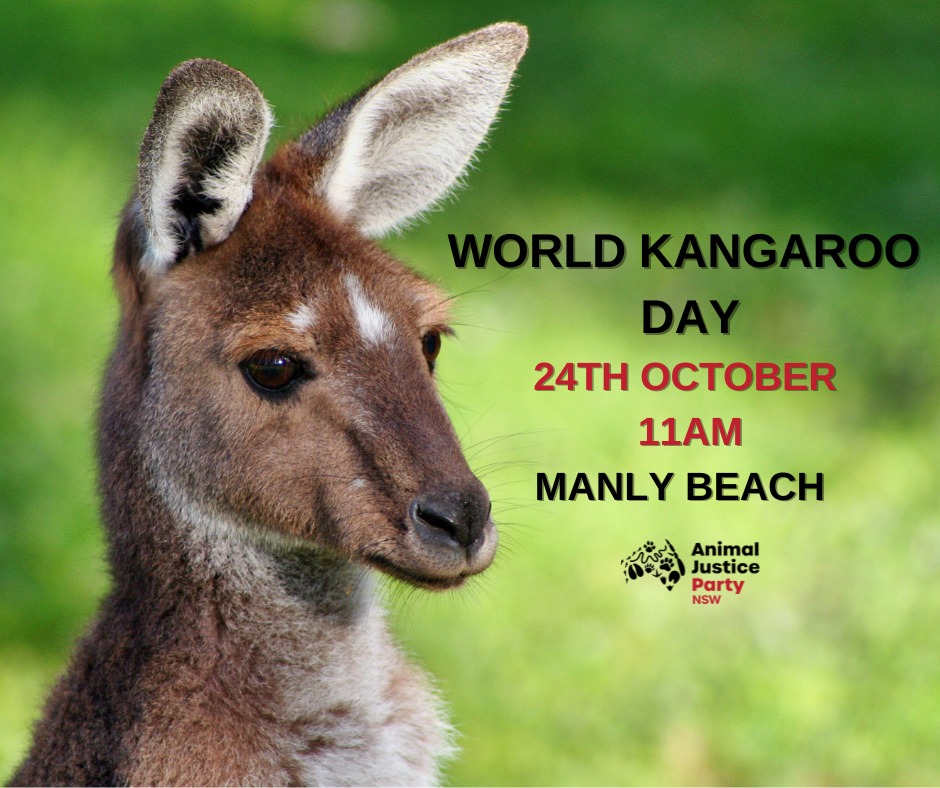
Northern Beaches Clean Up Crew: Dee Why Lagoon Clean Up: October 30, 2022
- - You'll most likely get muddy
- - You'll most likely get wet
- - You'll walk a bush trail inside the lagoon
- - You'll see plenty of plastic bottles
- - getting in the reeds and getting muddy
- - carrying bags back to the tarp “bag runners”
- - sorting the rubbish on the tarps (we will have tarps for plastic bottles, glass bottles, etc)

Weed Small-Leafed Privet Flowering Now; Cut Flower Heads To Prevent Seeding
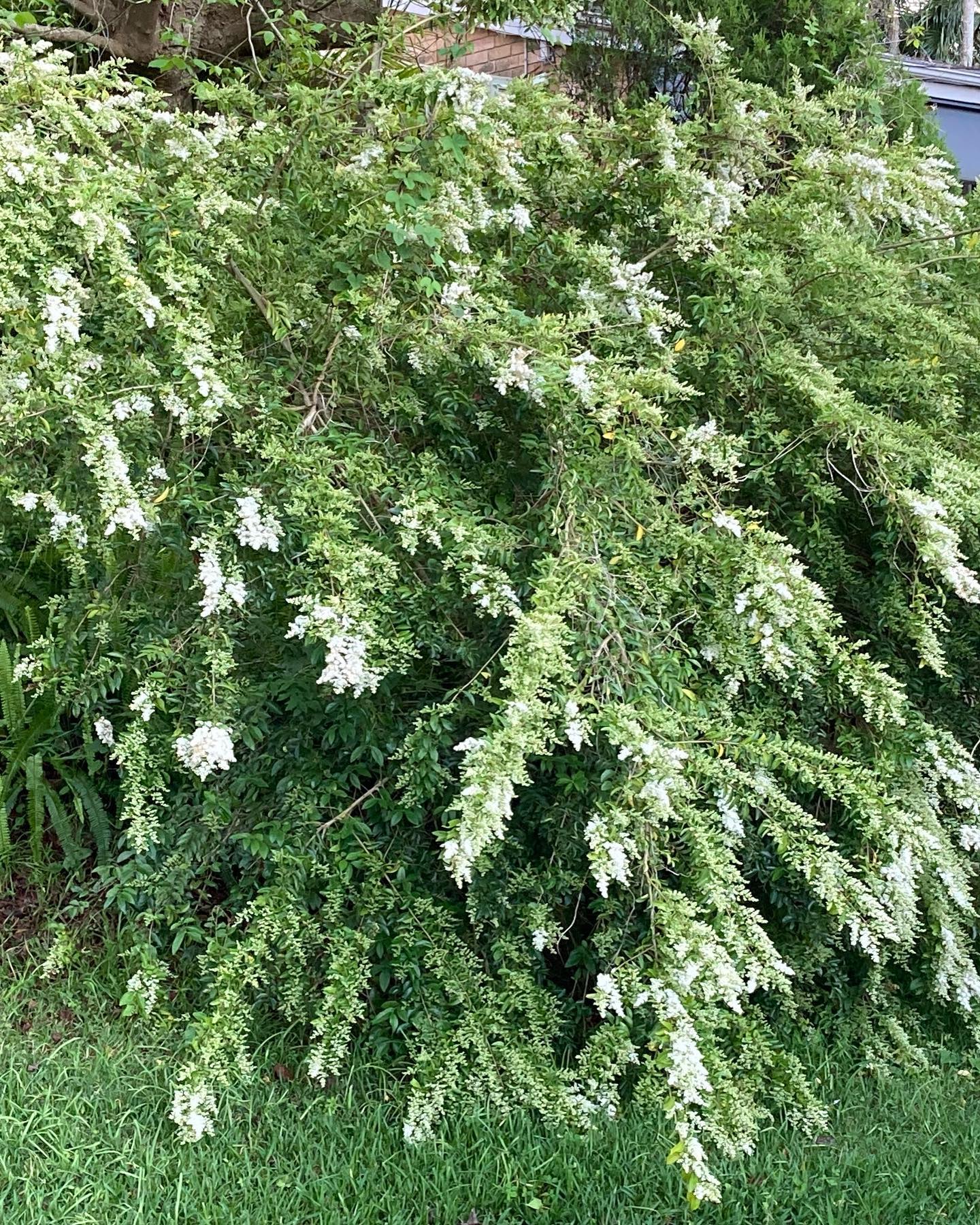
Single-Use Plastics Ban In NSW Commences November 1st, 2022
- serving utensils such as salad servers or tongs
- items that are an integrated part of the packaging used to seal or contain food or beverages, or are included within or attached to that packaging, through an automated process (such as a straw attached to a juice box).
- meat or produce trays
- packaging, including consumer and business-to-business packaging and transport containers
- food service items that are an integrated part of the packaging used to seal or contain food or beverages, or are including within or attached to that packaging, through an automated process (such as an EPS noodle cup).
- polyethylene (PE)
- polypropylene (PP)
- polyethylene terephthalate (PET)
- polymethyl methacrylate (PMMA)
- nylon (PA).
- carrying on an activity for commercial purposes. For example:
- retail businesses like a restaurant, café, bar, takeaway food shop, party supply store, discount store, supermarket, market stall, online store, and packaging supplier and distributor, and any other retailer that provides these items to consumers.
- a manufacturer, supplier, distributor or wholesaler of a prohibited item
- carrying on an activity for charitable, sporting, education or community purposes. For example, a community group, not-for-profit organisation or charity, including those that use a banned item as part of a service, for daily activities or during fundraising events.
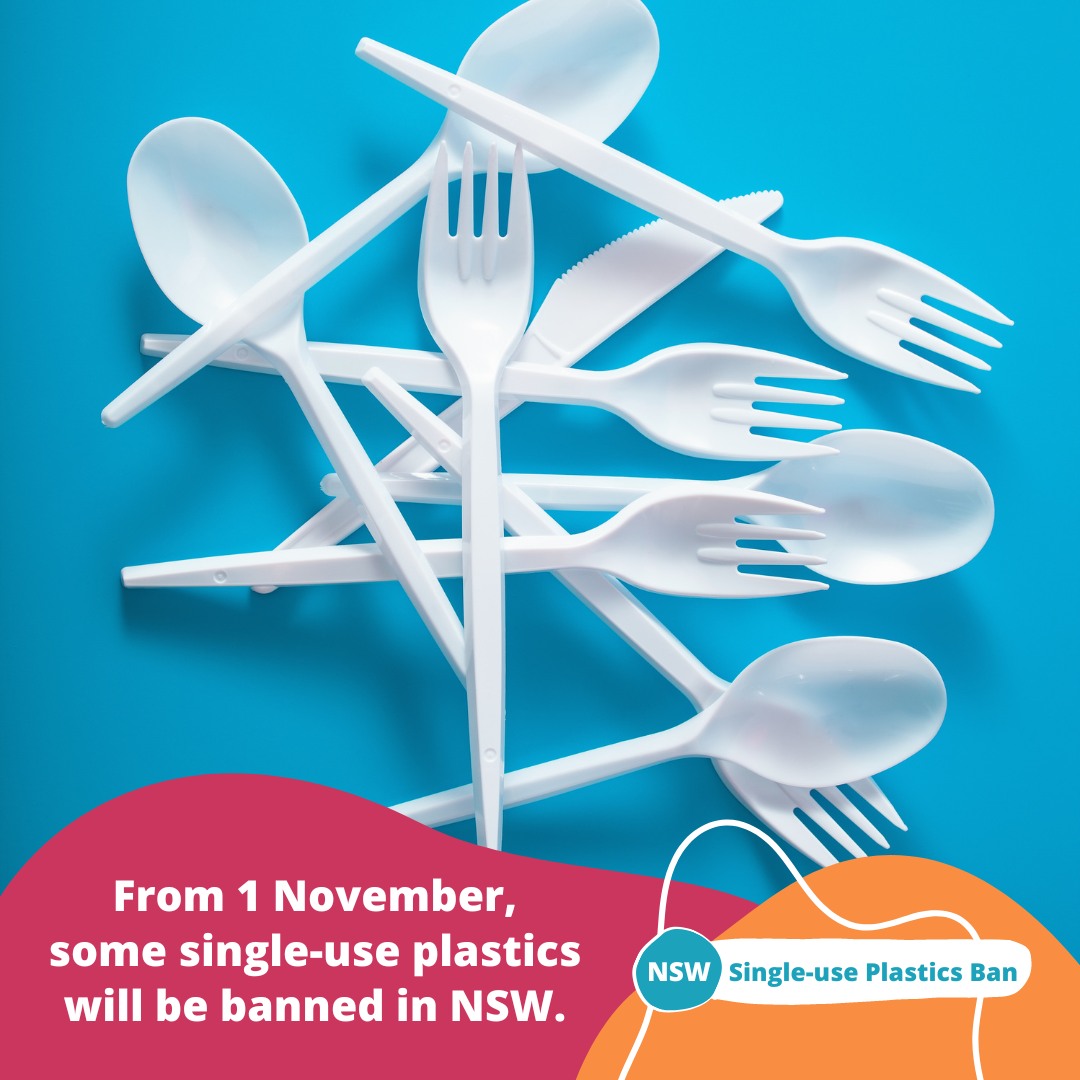
From 1 June 2022 The Following Was Banned:
- barrier bags such as bin liners, human or animal waste bags
- produce bags and deli bags
- bags used to contain medical items (excluding bags provided by a retailer to a consumer used to transport medical items from the retailer).
Help Needed To Save Sea Turtle Nests As Third La Nina Summer Looms
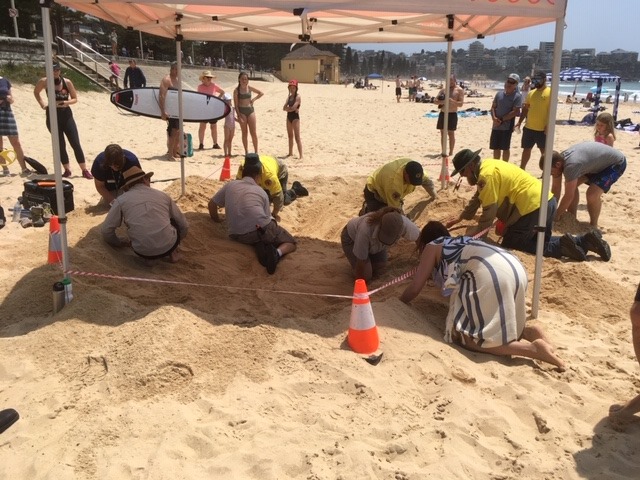
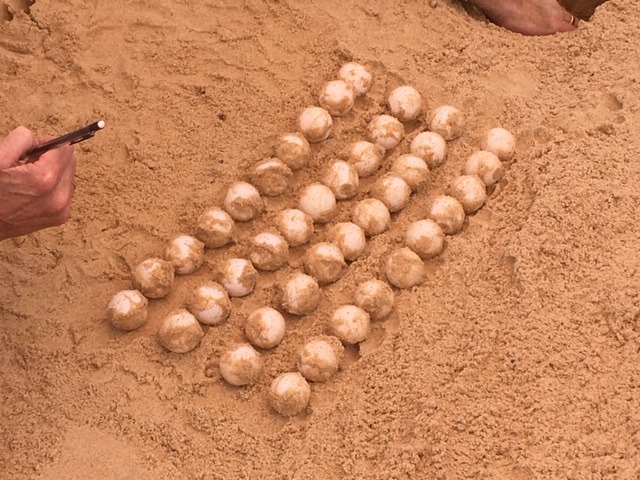
Save Sydney's Koalas Petition
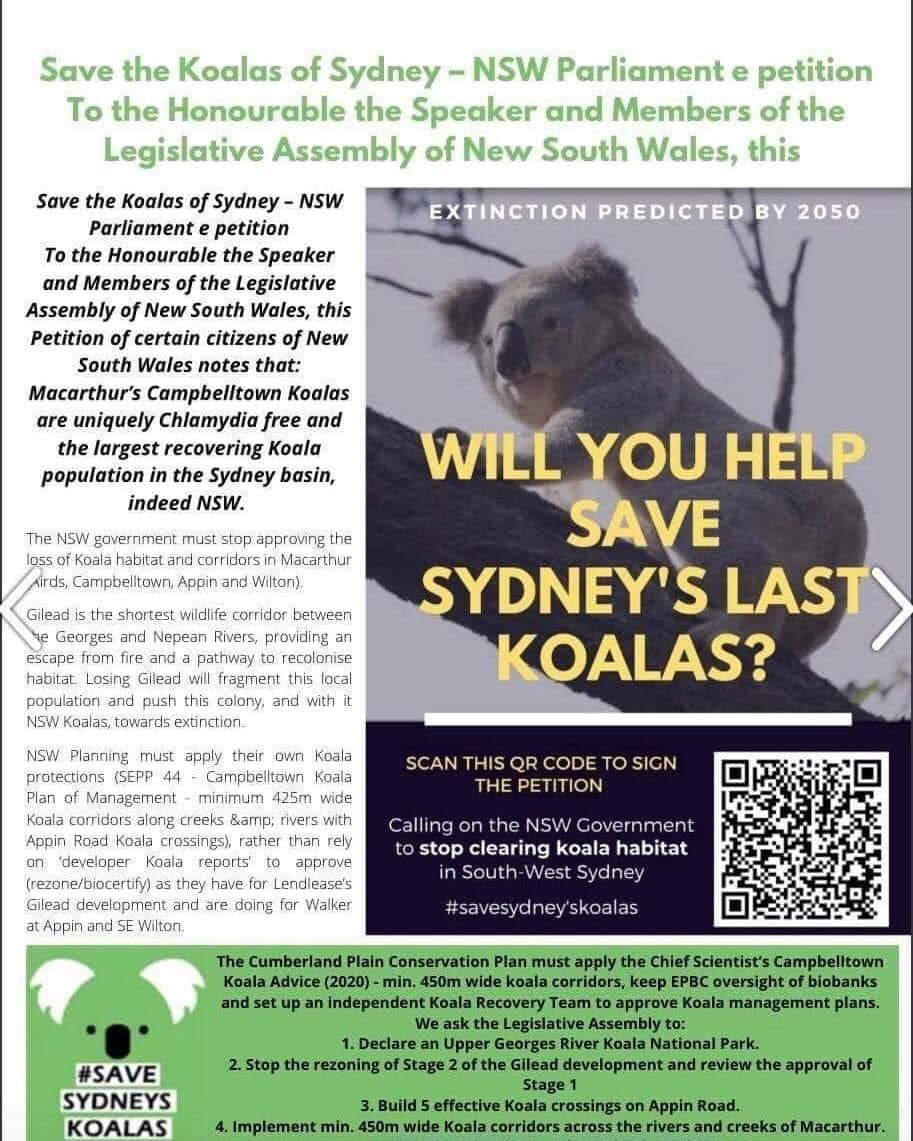
National Bird Week + Aussie Bird Count 2022
Watch Out - Shorebirds About
.JPG.opt1460x973o0,0s1460x973.jpg?timestamp=1663629195339)
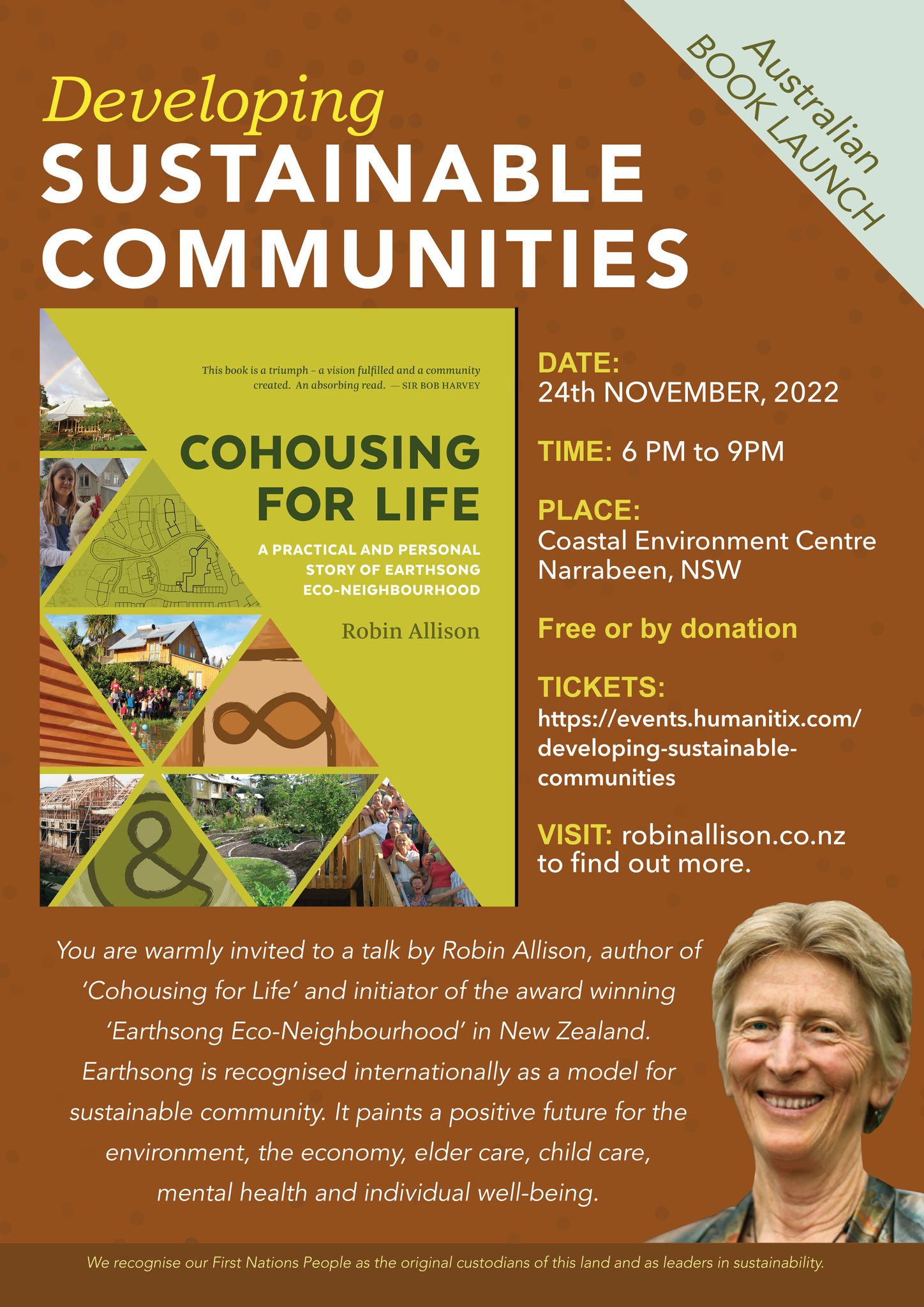
TALK & BOOK LAUNCH
Book Your Free Ticket To: Developing Sustainable Communities
Weed Alert: Corky Passionflower At Mona Vale + Narrabeen Creek
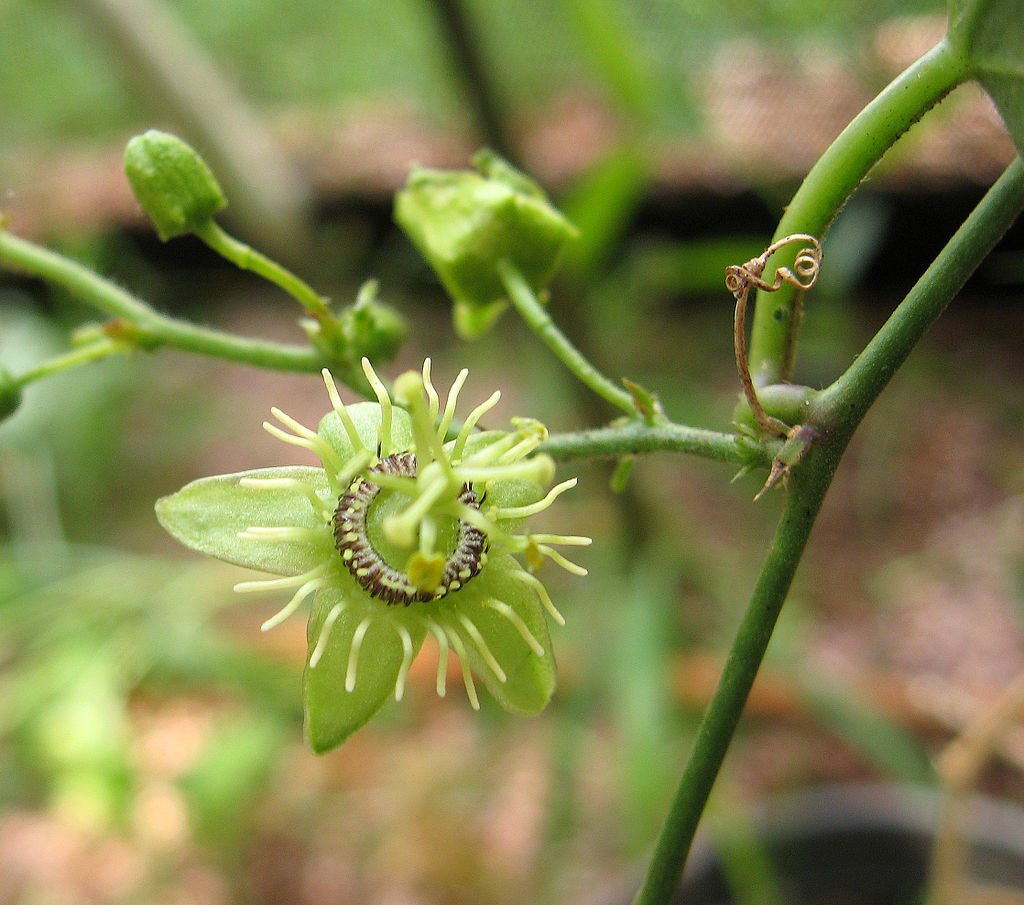
.jpg?timestamp=1663392221562)
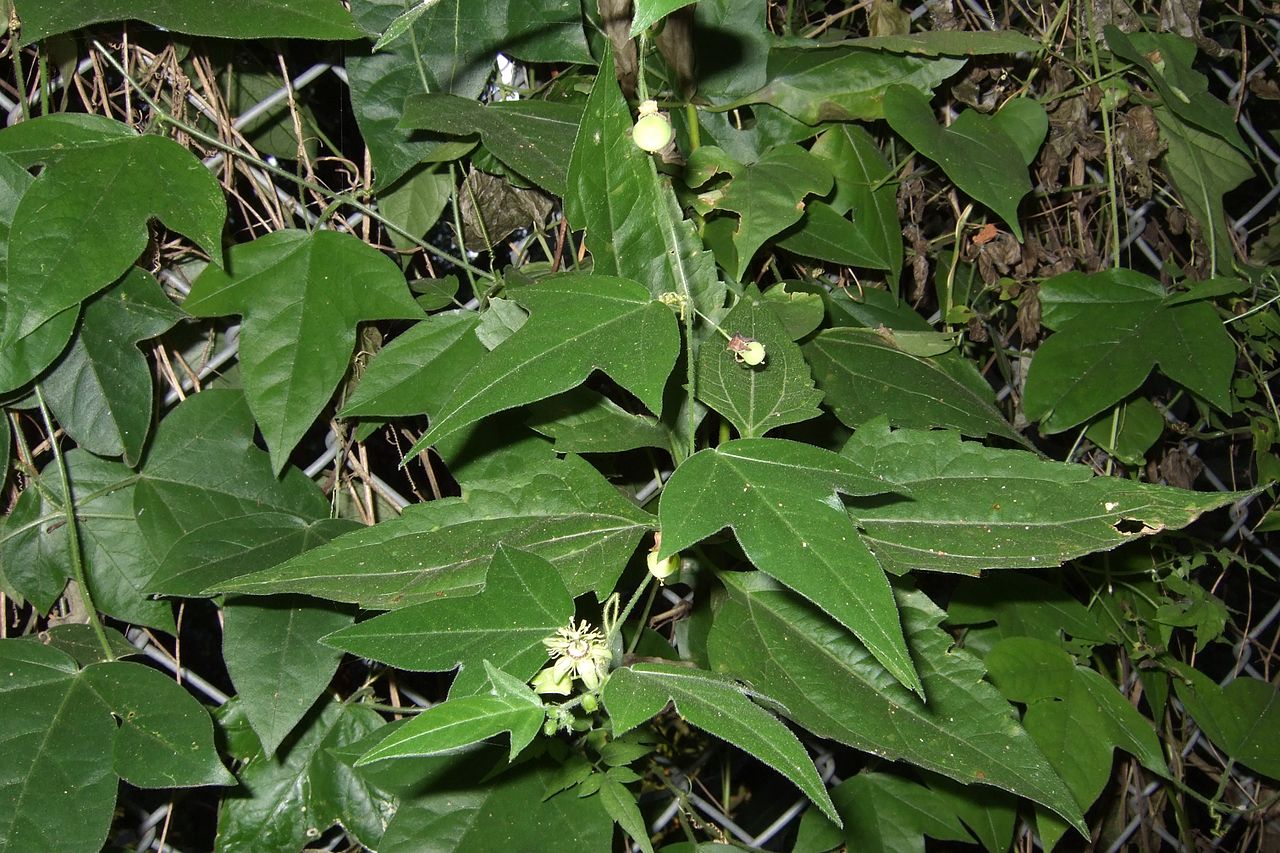
Katandra Bushland Sanctuary Open
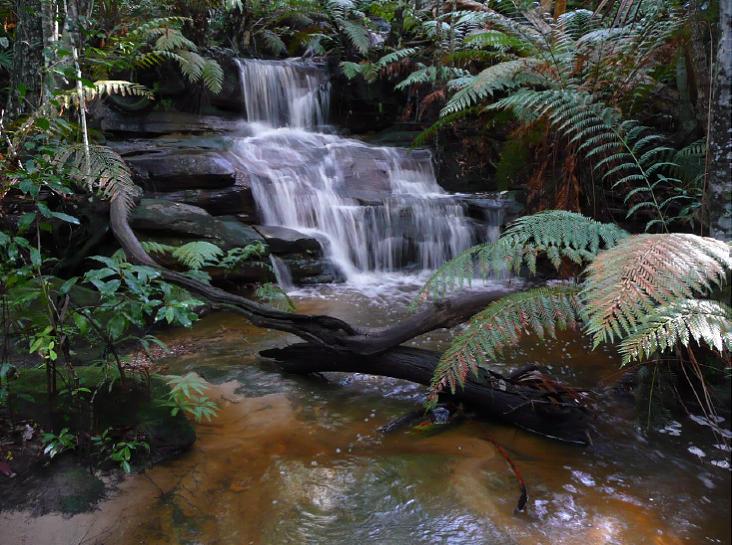
EPA Releases Climate Change Policy And Action Plan
The NSW Environment Protection Authority (EPA) is taking action to protect the environment and community from the impacts of climate change, today releasing its new draft Climate Change Policy and Action Plan which works with industry, experts and the community to reduce greenhouse gas emissions and support resilience.
NSW EPA Chief Executive Officer Tony Chappel said the EPA has proposed a set of robust actions to achieve a 50 per cent reduction in carbon emissions by 2030 (from 2005 levels), ensure net zero emissions by 2050, and improve resilience to climate change impacts.
“NSW has ambitious targets that align with the world’s best scientific advice and the Paris commitments, to limit global warming to an average of 1.5 degrees in order to avoid severe impacts on ecosystems,” Mr Chappel said.
“Over the past few years we have seen first-hand just how destructive the impacts of climate change are becoming, not only for our environment, but for NSW communities too.
“We know the EPA has a critical role to play in achieving the NSW Government’s net-zero targets and responding to the increasing threat of climate change induced weather events.
“Equally, acting on climate presents major economic opportunities for NSW in new industries such as clean energy, hydrogen, green metals, circular manufacturing, natural capital and regenerative agriculture.
“This draft Policy sends a clear signal to regulated industries that we will be working with them to support and drive cost-effective decarbonisation while implementing adaptation initiatives that build resilience to climate change risks.
“Our draft plan proposes a staged approach that ensures the actions the EPA takes are deliberate, well informed and complement government and industry actions on climate change. These actions will support industry and allow reasonable time for businesses to plan for and meet any new targets or requirements.
“Climate change is an issue that we all face so it’s important that we take this journey together and all play our part in protecting our environment and communities for generations to come.”
Actions include:
- working with industry, government and experts to improve the evidence base on climate change
- supporting licensees prepare, implement and report on climate change mitigation and adaptation plans
- partnering with NSW Government agencies to address climate change during the planning and assessment process for activities the EPA regulates
- establishing cost-effective emission reduction targets for key industry sectors
- providing industry best-practice guidelines to support them to reduce their greenhouse gas emissions
- phasing in the introduction of greenhouse gas emission limits on environment protection licences for key industry sectors
- developing and implementing resilience programs, best-practice adaptation guidance and harnessing citizen science and education programs
- working with EPA Aboriginal and Youth Advisory Committees to improve the EPA’s evolving climate change response
EPA Acting Chair Carolyn Walsh said the EPA is a partner in supporting and building on the NSW Government’s work to address climate change for the people of NSW.
“The draft Policy and Action Plan adopts, supports and builds on the strong foundations that have been set by the NSW Government through the NSW Climate Change Policy Framework, Net Zero Plan and Climate Change Adaptation Strategy,” Ms Walsh said.
The EPA will work with stakeholders, including licensees, councils, other government agencies, and the community to help implement the actions.
The draft EPA Climate Change Policy and Action Plan is available at https://yoursay.epa.nsw.gov.au/ and comments are open until 3 November 2022.
Wanted: Photos Of Flies Feeding On Frogs (For Frog Conservation)
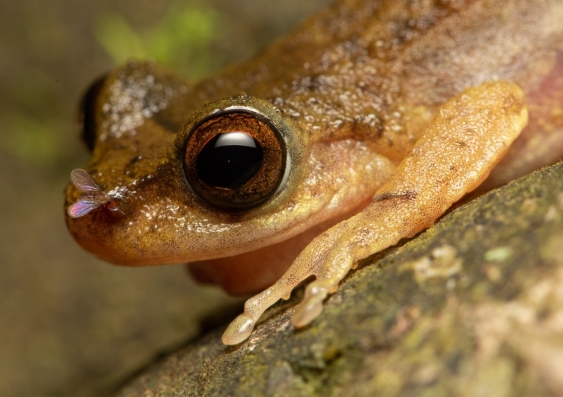
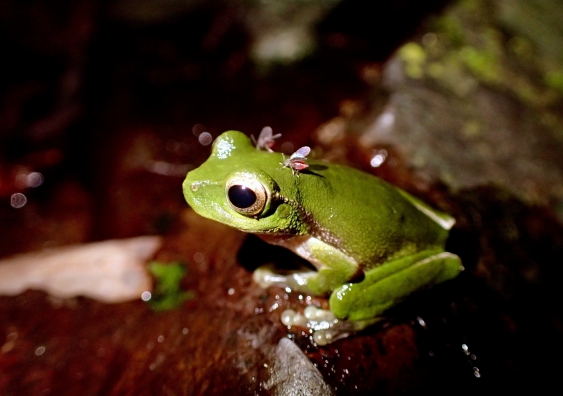
Possums In Your Roof?: Do The Right Thing
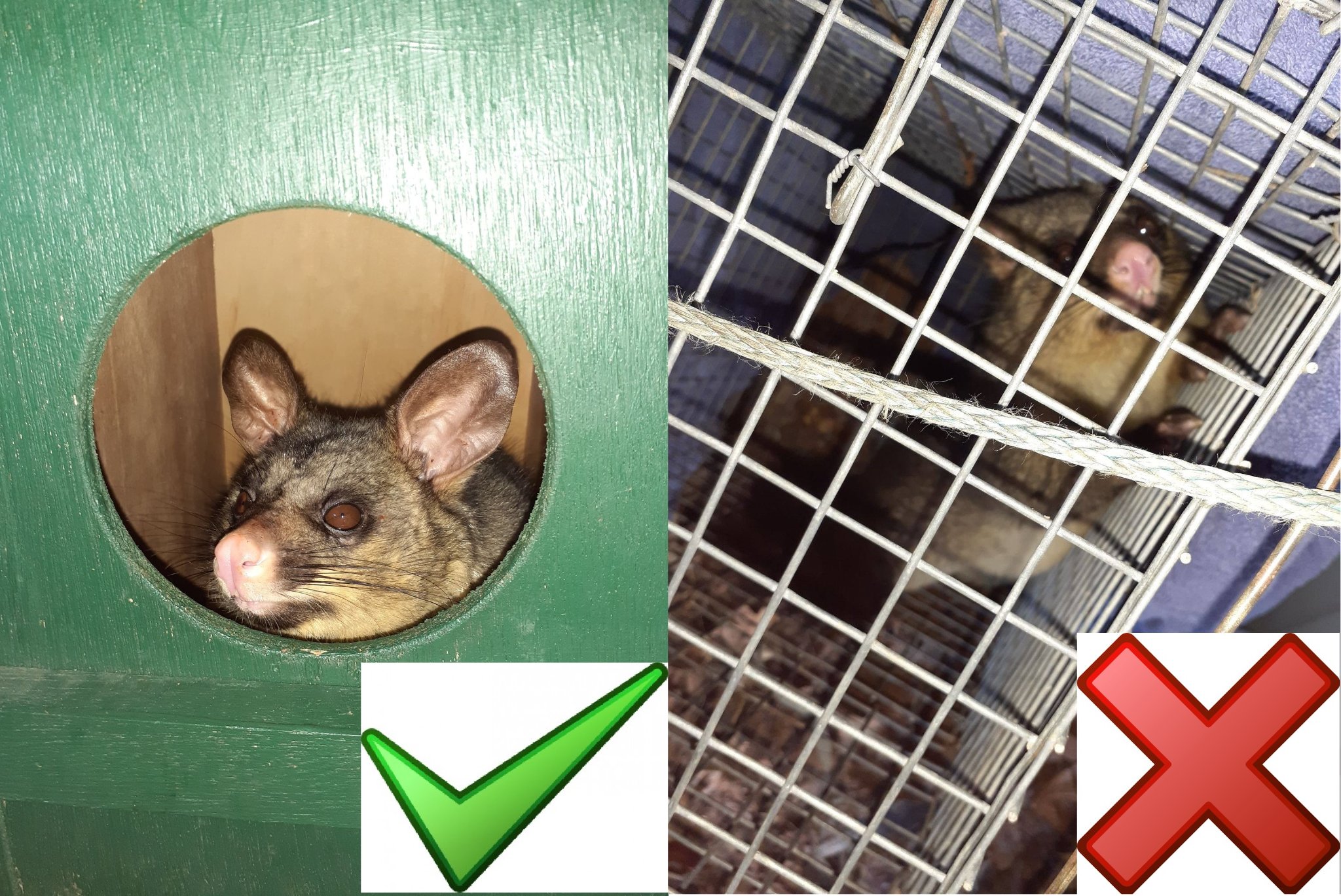
Local Wildlife Rescuers And Carers State That Ongoing Heavy Rains Are Tough For Us But Can Be Tougher For Our Wildlife:
- Birds and possums can be washed out of trees, or the tree comes down, nests can disintegrate or hollows fill with water
- Ground dwelling animals can be flooded out of their burrows or hiding places and they need to seek higher ground
- They are at risk crossing roads as people can't see them and sudden braking causes accidents
- The food may disappear - insects, seeds and pollens are washed away, nectar is diluted and animals can be starving
- They are vulnerable in open areas to predators, including our pets
- They can't dry out and may get hypothermia or pneumonia
- Animals may seek shelter in your home or garage.
You can help by:
- Keeping your pets indoors
- Assessing for wounds or parasites
- Putting out towels or shelters like boxes to provide a place to hide
- Drive to conditions and call a rescue group if you see an animal hit (or do a pouch check or get to a vet if you can stop)
- If you are concerned take a photo and talk to a rescue group or wildlife carer
There are 2 rescue groups in the Northern Beaches:
Sydney Wildlife: 9413 4300
WIRES: 1300 094 737
Please be patient as there could be a few enquiries regarding the wildlife.
Generally Sydney Wildlife do not recommend offering food but it may help in some cases. Please ensure you know what they generally eat and any offerings will not make them sick. You can read more on feeding wildlife here
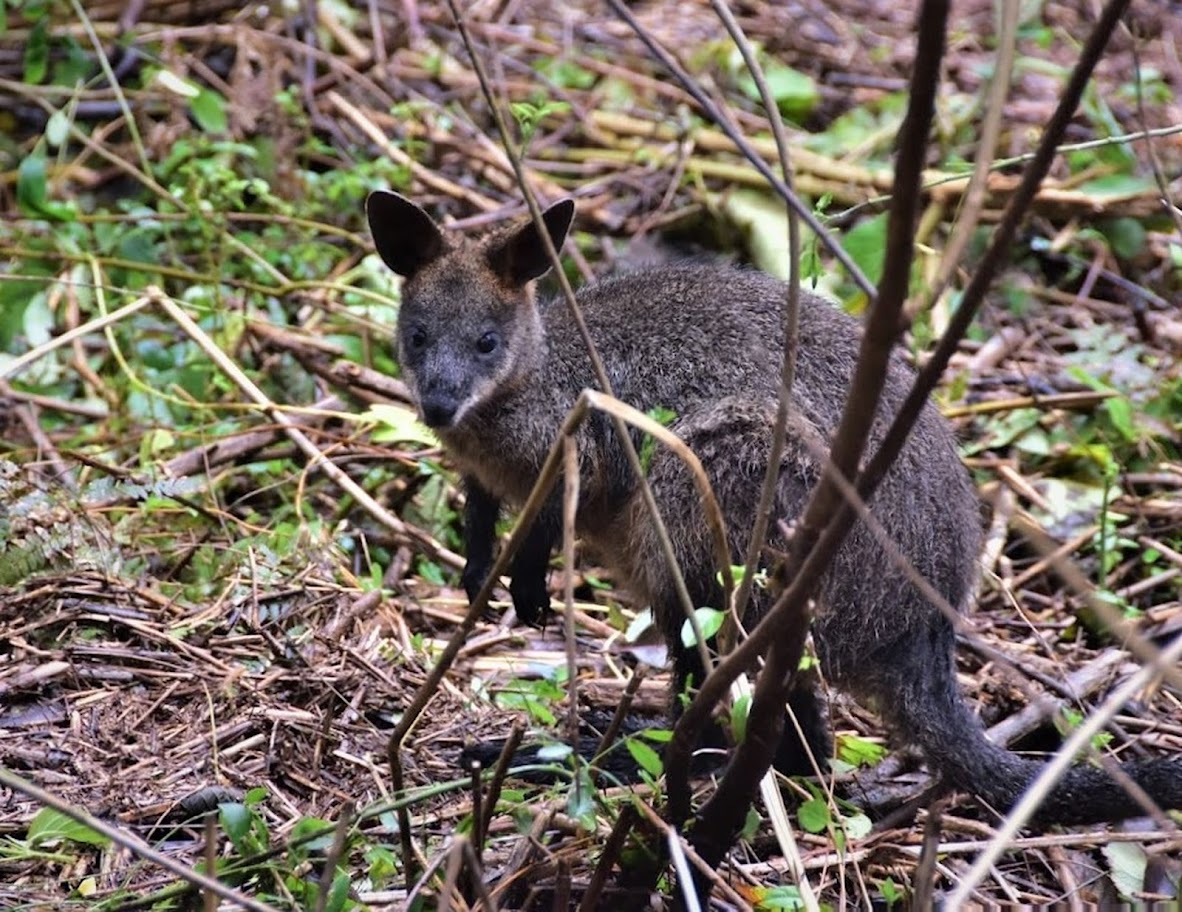
Information courtesy Ed Laginestra, Sydney Wildlife volunteer. Photo: Warriewood Wetlands Wallaby by Kevin Murray, March 2022.
Aviaries + Possum Release Sites Needed

Sydney Wildlife Rescue: Helpers Needed
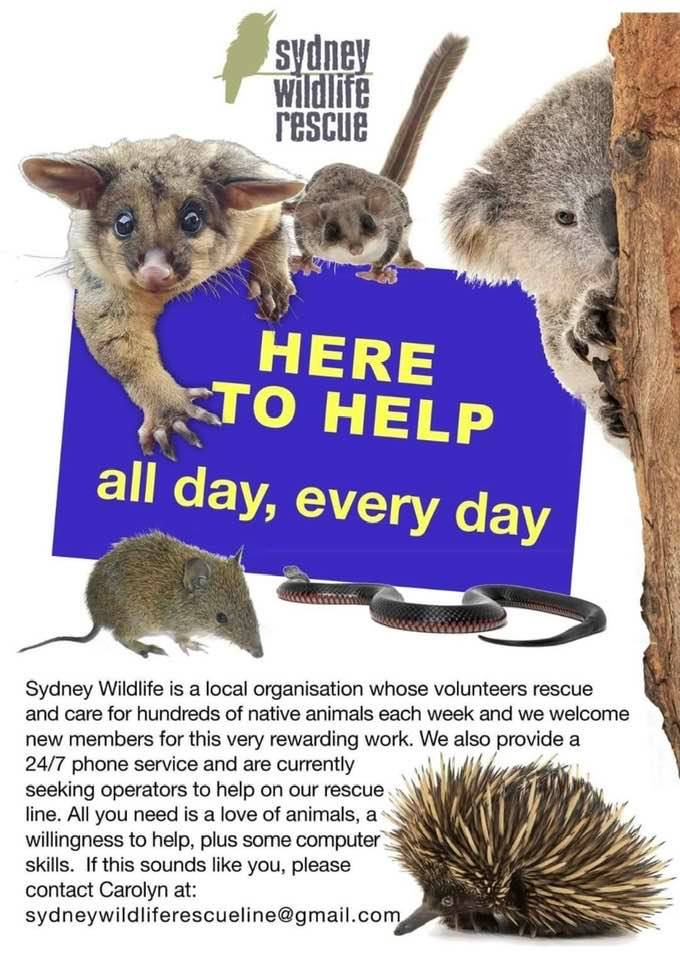
Bushcare In Pittwater
Where we work Which day What time
Avalon
Angophora Reserve 3rd Sunday 8:30 - 11:30am
Avalon Dunes 1st Sunday 8:30 - 11:30am
Avalon Golf Course 2nd Wednesday 3 - 5:30pm
Careel Creek 4th Saturday 8:30 - 11:30am
Toongari Reserve 3rd Saturday 9 - 12noon (8 - 11am in summer)
Bangalley Headland 2nd Sunday 9 to 12noon
Bayview
Winnererremy Bay 4th Sunday 9 to 12noon
Bilgola
North Bilgola Beach 3rd Monday 9 - 12noon
Algona Reserve 1st Saturday 9 - 12noon
Plateau Park 1st Friday 8:30 - 11:30am
Church Point
Browns Bay Reserve 1st Tuesday 9 - 12noon
McCarrs Creek Reserve Contact Bushcare Officer To be confirmed
Clareville
Old Wharf Reserve 3rd Saturday 8 - 11am
Elanora
Kundibah Reserve 4th Sunday 8:30 - 11:30am
Mona Vale
Mona Vale Beach Basin 1st Saturday 8 - 11am
Mona Vale Dunes 2nd Saturday +3rd Thursday 8:30 - 11:30am
Newport
Bungan Beach 4th Sunday 9 - 12noon
Crescent Reserve 3rd Sunday 9 - 12noon
North Newport Beach 4th Saturday 8:30 - 11:30am
Porter Reserve 2nd Saturday 8 - 11am
North Narrabeen
Irrawong Reserve 2nd Saturday 2 - 5pm
Palm Beach
North Palm Beach Dunes 3rd Saturday 9 - 12noon
Scotland Island
Catherine Park 2nd Sunday 10 - 12:30pm
Elizabeth Park 1st Saturday 9 - 12noon
Pathilda Reserve 3rd Saturday 9 - 12noon
Warriewood
Warriewood Wetlands 1st Sunday 8:30 - 11:30am
Whale Beach
Norma Park 1st Friday 9 - 12noon
Western Foreshores
Coopers Point, Elvina Bay 2nd Sunday 10 - 1pm
Rocky Point, Elvina Bay 1st Monday 9 - 12noon
Friends Of Narrabeen Lagoon Catchment Activities

Gardens And Environment Groups And Organisations In Pittwater
‘Gut-wrenching and infuriating’: why Australia is the world leader in mammal extinctions, and what to do about it
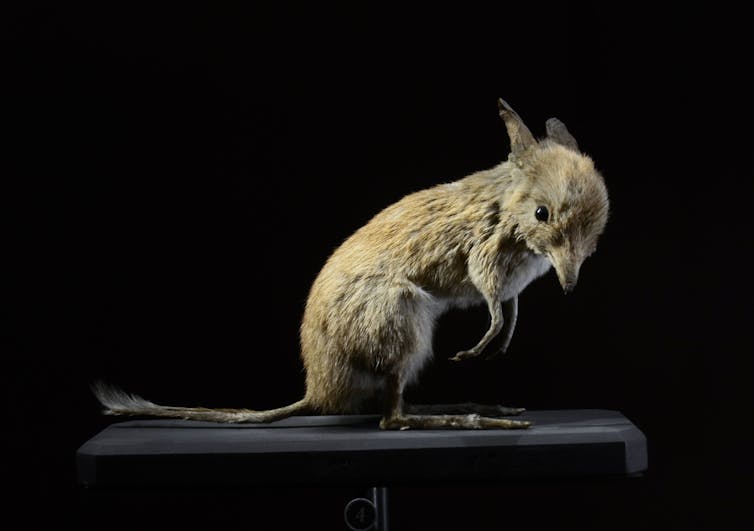
In fewer than 250 years, the ravages of colonisation have eroded the evolutionary splendour forged in this continent’s relative isolation. Australia has suffered a horrific demise of arguably the world’s most remarkable mammal assemblage, around 87% of which is found nowhere else.
Being an Australian native mammal is perilous. Thirty-eight native mammal species have been driven to extinction since colonisation and possibly seven subspecies. These include:
- Yirratji (northern pig-footed bandicoot)
- Parroo (white-footed rabbit-rat)
- Kuluwarri (central hare-wallaby)
- Yallara (lesser bilby)
- Tjooyalpi (lesser stick-nest rat)
- Tjawalpa (crescent nailtail wallaby)
- Yoontoo (short-tailed hopping-mouse)
- Walilya (desert bandicoot)
- toolache wallaby
- thylacine
This makes us the world leader of mammal species extinctions in recent centuries. But this is far from just an historical tragedy.
A further 52 mammal species are classified as either critically endangered or endangered, such as the southern bent-wing bat, which was recently crowned the 2022 Australian Mammal of the Year. Fifty-eight mammal species are classed as vulnerable.
Many once-abundant species, some spread over large expanses of Australia, have greatly diminished and the distributions of their populations have become disjointed. Such mammals include the Mala (rufous hare-wallaby), Yaminon (northern hairy-nosed wombat), Woylie (brush-tailed bettong) and the Numbat.
This means their populations are more susceptible to being wiped out by chance events and changes – such as fires, floods, disease, invasive predators – and genetic issues. The ongoing existence of many species depends greatly upon predator-free fenced sanctuaries and offshore islands.
Without substantial and rapid change, Australia’s list of extinct mammal species is almost certain to grow. So what exactly has gone so horribly wrong? What can and should be done to prevent further casualties and turn things around?
Up To Two Mammal Species Gone Per Decade
Australia’s post-colonisation mammal extinctions may have begun as early as the 1840s, when it’s believed the Noompa and Payi (large-eared and Darling Downs hopping mice, respectively) and the Liverpool Plains striped bandicoot went extinct.
Many extinct species were ground dwellers, and within the so-called “critical weight range” of between 35 grams and 5.5 kilograms. This means they’re especially vulnerable to predation by cats and foxes.
Small macropods (such as bettongs, potoroos and hare wallabies) and rodents have suffered most extinctions – 13 species each, nearly 70% of all Australia’s mammal extinctions.
Eight bilby and bandicoot species and three bats species are also extinct, making up 21% and 8% of extinctions, respectively.
The most recent fatalities are thought to be the Christmas Island pipistrelle and Bramble Cay melomys, the last known record for both species was 2009. The Bramble Cay melomys is perhaps the first mammal species driven to extinction by climate change.
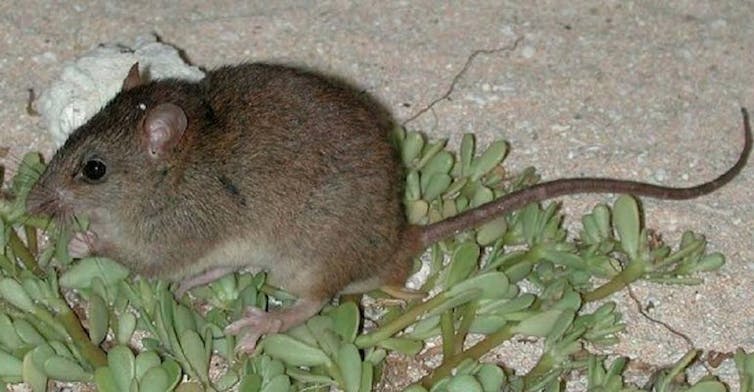
Overall, research estimates that since 1788, about one to two land-based mammal species have been driven to extinction each decade.
When Mammals Re-Emerge
It’s hard to be certain about the timing of extinction events and, in some cases, even if they’re actually extinct.
For example, Ngilkat (Gilbert’s potoroo), the mountain pygmy possum, Antina (the central rock rat), and Leadbeater’s possum were once thought extinct, but were eventually rediscovered. Such species are often called Lazarus species.
Our confidence in determining whether a species is extinct largely depends on how extensively and for how long we’ve searched for evidence of their persistence or absence.
Modern approaches to wildlife survey such as camera traps, audio recorders, conservation dogs and environmental DNA, make the task of searching much easier than it once was.
But sadly, ongoing examination and analysis of museum specimens also means that we’re still discovering species not known to Western science and that tragically are already extinct.
What’s Driving Their Demise?
Following colonisation, Australia’s landscapes have suffered extensive, severe, sustained and often compounding blows. These include:
- widespread habitat modification and destruction
- the introduction of invasive predators, such as feral cats, red foxes and herbivores (European rabbits, feral horses, goats, deer, water buffalo, donkeys)
- toxic “prey” (cane toads)
- intense livestock grazing
- changed fire patterns associated with the forced displacement of First Nations peoples and cultural practices
- climate change
- hunting
- disease.
And importantly, the ongoing persecution of Australia’s largest land-based predator: the dingo. In some circumstances, dingoes may help reduce the activity and abundance of large herbivores and invasive predators. But in others, they may threaten native species with small and restricted distributions.
Through widespread land clearing, urbanisation, livestock grazing and fire, some habitats have been obliterated and others dramatically altered and reduced, often resulting in less diverse and more open vegetation. Such simplified habitats can be fertile hunting grounds for red foxes and feral cats to find and kill native mammals.
To make matters worse, European rabbits compete with native mammals for food and space. Their grazing reduces vegetation and cover, endangering many native plant species in the process. And they are prey to cats and foxes, sustaining their populations.
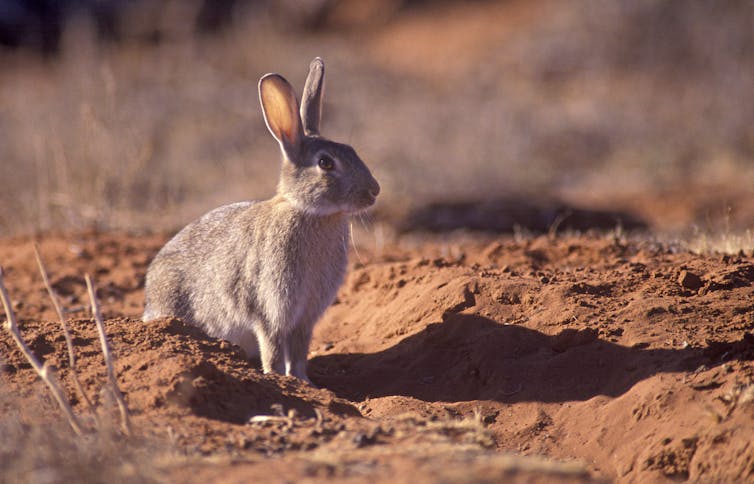
While cats and foxes, fire, and habitat modification and destruction are often cited as key threats to native mammals, it’s important to recognise how these threats and others may interact. They must be managed together accordingly.
For instance, reducing both overgrazing and preventing frequent, large and intense fires may help maintain vegetation cover and complexity. In turn, this will make it harder for invasive predators to hunt native prey.
What Must Change?
Above all else, we genuinely need to care about what’s transpiring, and to act swiftly and substantially to prevent further damage.
As a mammalogist of some 30 years, the continuing demise of Australia’s mammals is gut-wrenching and infuriating. We have the expertise and solutions at hand, but the frequent warnings and calls for change continue to be met with mediocre responses. At other times, a seemingly apathetic shrug of shoulders.
So many species are now gone, probably forever, but so many more are hurtling down the extinction highway because of sheer and utter neglect.
Encouragingly, when we care for and invest in species, we can turn things around. Increasing numbers of Numbats, Yaminon and eastern-barred bandicoots provide three celebrated examples.
Improving the prognosis for mammals is eminently achievable but conditional on political will. Broadly speaking, we must:
- minimise or remove their key threats
- align policies (such as energy sources, resource use, and biodiversity conservation)
- strengthen and enforce environmental laws
- listen to, learn from and work with First Nations peoples as part of healing Country
- invest what’s actually required – billions, not breadcrumbs.
The recently announced Threatened Species Action plan sets an ambitious objective of preventing new extinctions. Of the 110 species considered a “priority” to save, 21 are mammals. The plan, however, is not fit for purpose and is highly unlikely to succeed.
Political commitments appear wafer thin when the same politicians continue to approve the destruction of the homes critically endangered species depend upon. What’s more, greenhouse gas emissions reduction targets are far below what climate scientists say are essential and extremely urgent.
There’s simply no time for platitudes and further dithering. Australia’s remaining mammals deserve far better, they deserve secure futures.![]()
Euan Ritchie, Professor in Wildlife Ecology and Conservation, Centre for Integrative Ecology, School of Life & Environmental Sciences, Deakin University
This article is republished from The Conversation under a Creative Commons license. Read the original article.
Gas Grants For Middle Arm Announcement Astounds Community
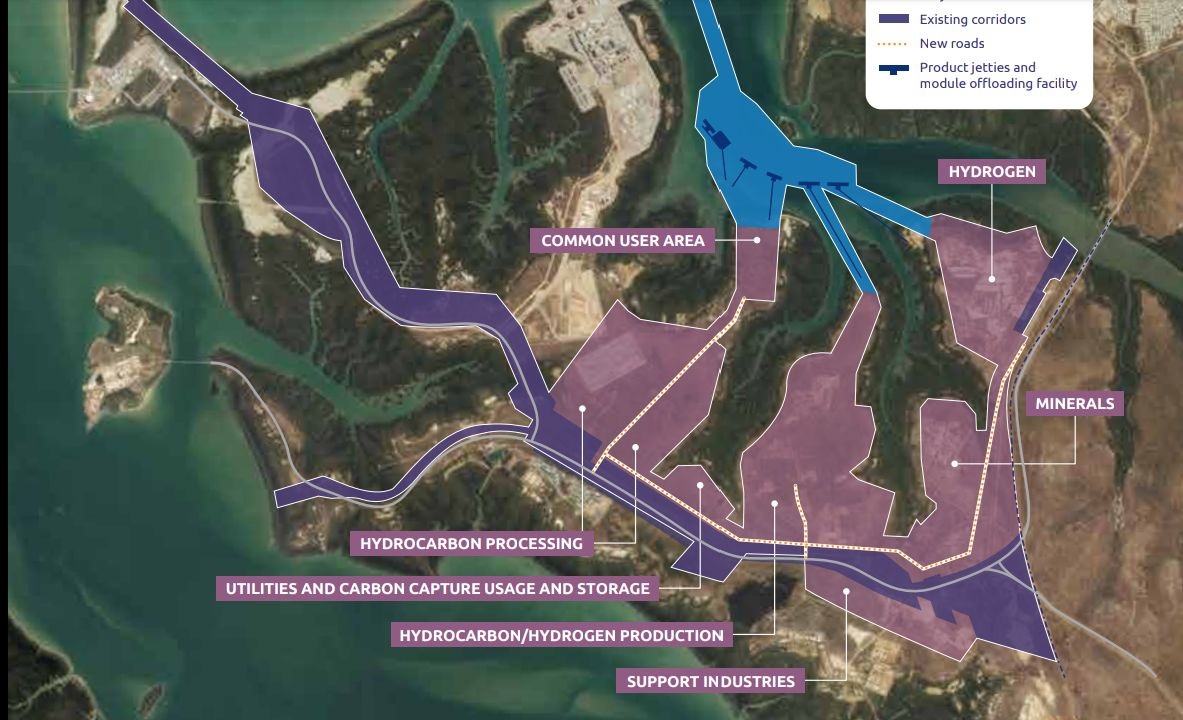
The magnificent Lake Eyre Basin is threatened by 831 oil and gas wells – and more are planned. Is that what Australians really want?
Richard Kingsford, UNSW SydneyThe heart-shaped Lake Eyre Basin covers about one-sixth of Australia. It contains one of the few remaining pristine river systems in the world.
But new research shows oil and gas activity is extending its tentacles into these fragile environments. Its wells, pads, roads and dams threaten to change water flows and pollute this magnificent ecosystem.
The study, by myself and colleague Amy Walburn, investigated current and future oil and gas production and exploration on the floodplains of the Lake Eyre Basin. We found 831 oil and gas wells across the basin – and this number is set to grow. What’s more, state and Commonwealth legislation has largely failed to control this development.
State and national governments are promoting massive gas development to kickstart Australia’s economy. But as we show, this risks significant damage to the Lake Eyre Basin and its rivers.
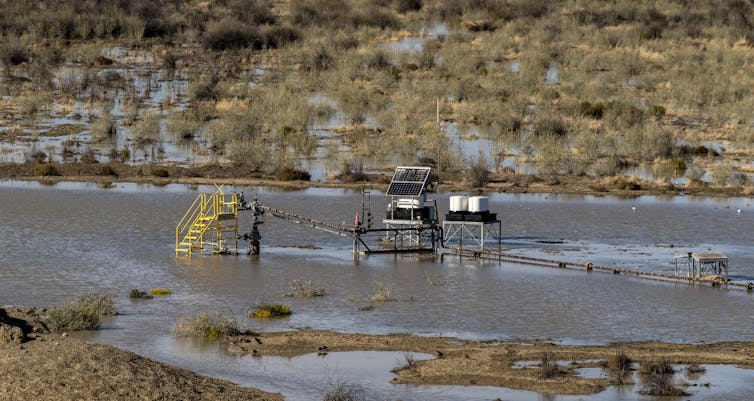
A Precious Natural Wonder
The Lake Eyre Basin is probably the last major free-flowing river system on Earth – meaning no major dams or irrigation diversions stem the rivers’ flow.
This country has been looked after for tens of thousands of year by First Nations people, including the Arrernte, Dieri, Mithaka and Wangkangurru. This care continues today.
The biggest rivers feeding the basin – the Diamantina, Georgina and Cooper – originate in western Queensland and flow to South Australia where they pour into Kathi Thanda-Lake Eyre.
As they wind south, the rivers dissect deserts and inundate floodplains, lakes and wetlands – including 33 wetlands of national importance.
This natural phenomenon has happened for millennia. It supports incredible natural booms of plants, fish and birds, as well as tourism and livestock grazing. But our new research shows oil and gas development threatens this precious natural wonder.
Massive Industrial Creep
Our analysis used satellite imagery to map the locations of oil and gas development in the Lake Eyre Basin since the first oil wells were established in late 1950s.
We found 831 oil and gas production and exploration wells exist on the floodplains of the Lake Eyre Basin – almost 99% of them on the Cooper Creek floodplains. The wells go under the river and its floodplains into the geological Cooper Basin, considered to have the most important onshore petroleum and natural gas deposits in Australia.
Our research also shows how quickly oil and gas mining in the Lake Eyre Basin is set to grow. We identified licensing approvals or applications covering 4.5 million hectares of floodplains in the Lake Eyre Basin, across South Australia and Queensland.
The CSIRO recently examined likely scenarios of 1,000 to 1,500 additional unconventional gas wells in the Cooper Basin in the next 50 years. It predicted these wells would built be on “pads” – areas occupied by mining equipment or facilities – about 4 kilometres apart. They would typically access gas using horizontal drilling and hydraulic fracturing, or fracking.
Fracking is the process of extracting so-called “unconventional gas”. It involves using water and chemicals to fracture deep rocks to extract the gas. This polluted water, known to be toxic to fish, is brought back to the surface and stored in dams.
Two locations we focused on were in South Australia at the protected, Ramsar-listed Coongie Lakes site, which was recognised as internationally significant in 1987. The other site was in Queensland’s channel country, also on the Cooper floodplain.
In total across the Coongie Lakes sites, we found a three-fold increase in wells: from 95 in 1987 to 296 last year. We also identified 869 kilometres of roads and 316 hectares of storage pits, such as those that hold water.
Some of these dams could potentially hold polluted fracking water and become submerged by flooding, particularly at Coongie Lakes.
A Disaster Waiting To Happen?
Examples from around the world already show oil and gas exploration and development can reduce water quality by interrupting sediments and leading to elevated chemical concentrations. Production waste can also degrade floodplain vegetation.
The CSIRO says risks associated with oil and gas development in the Cooper Basin include:
- dust and emissions from machinery that may cause habitat loss, including changes to air quality, noise and light pollution
- disposal and storage of site materials that may contaminate soil, surface water and/or groundwater through accidental spills, leaks and leaching
- unplanned fracking and drilling into underground faults, unintended geological layers or abandoned wells
- gas and fluids contaminating soil, surface water, groundwater and air
- changes to groundwater pressures could potentially reactivate underground faults and induce earthquakes.
Fracking for unconventional gas also requires drawing large amounts of water from rivers and groundwater.
The Laws Have Failed
Our findings raise significant questions for Australian governments and the community.
Are we prepared to accept industrialisation of the Lake Eyre Basin, and the associated risk of pollution and other environmental damage? Have the companies involved earned a social licence for these activities? Where do the profits end up, and who will bear the social, environmental and financial costs of such intense development?
Clearly, state and federal environmental protections have failed to stop unfettered development of the basin.
These policies include the Lake Eyre Basin Agreement, signed by the states, the Commonwealth and the Northern Territory, which has been in place since 2000.
Australia’s federal environment law – the Environment Protection and Biodiversity Conservation Act – is supposed to protect nationally important areas such as Ramsar wetlands. Yet our research identified that just eight developments in the basin were referred to the Commonwealth government for approval and with only one deemed significant enough for assessment. This legislation does not deal adequately with the cumulative impacts of development.
And finally, gas extraction and production is associated with substantial “fugitive” emissions - greenhouse gases which escape into the atmosphere. This undermines Australia’s emissions reduction efforts under the Paris Agreement.
The governments of South Australia and Queensland should restrict mining development in the Lake Eyre Basin. And stronger federal oversight of this nationally significant natural treasure is urgently needed.
In response to this article, Chief executive of the Australian Petroleum Production & Exploration Association, Samantha McCulloch, said in a statement:
The oil and gas industry takes its responsibilities to the environment and to local communities seriously and it is one of the most heavily regulated sectors in Australia. The industry has been operating in Queensland for more than a decade and the gas produced in Queensland plays an important role in Australia’s energy security.
Richard Kingsford, Professor, School of Biological, Earth and Environmental Sciences, UNSW Sydney
This article is republished from The Conversation under a Creative Commons license. Read the original article.
Tasmanian Fast-Tracked Rezoning Laws For Development Alongside Critically-Endangered Forty-Spotted Pardalote Gets Federal Approval - Bird Week 2022
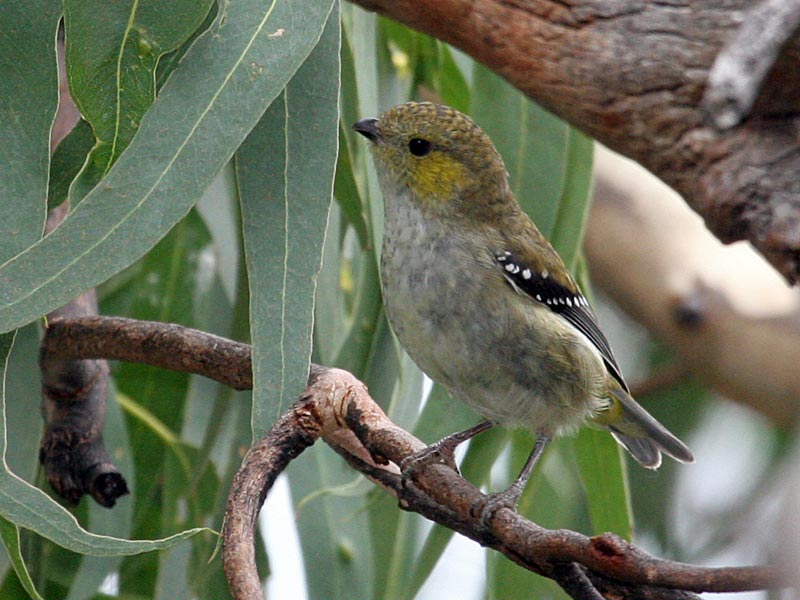
Release Of Environment Ministers' Meeting Communique
- To work collectively to achieve a national target to protect and conserve 30% of Australia’s landmass and 30% of Australia’s marine areas by 2030.
- To note the Commonwealths’ intention to establish a national nature repair market and agreed to work together to make nature positive investments easier, focusing on a consistent way to measure and track biodiversity.
- To work with the private sector to design out waste and pollution, keep materials in use and foster markets to achieve a circular economy by 2030.
NSW Continues To Lead On A Better, Cleaner Environment: NSW Minister For Environment James Griffin
Scotts Head Development Withdrawal A Win For Community Power: Greens
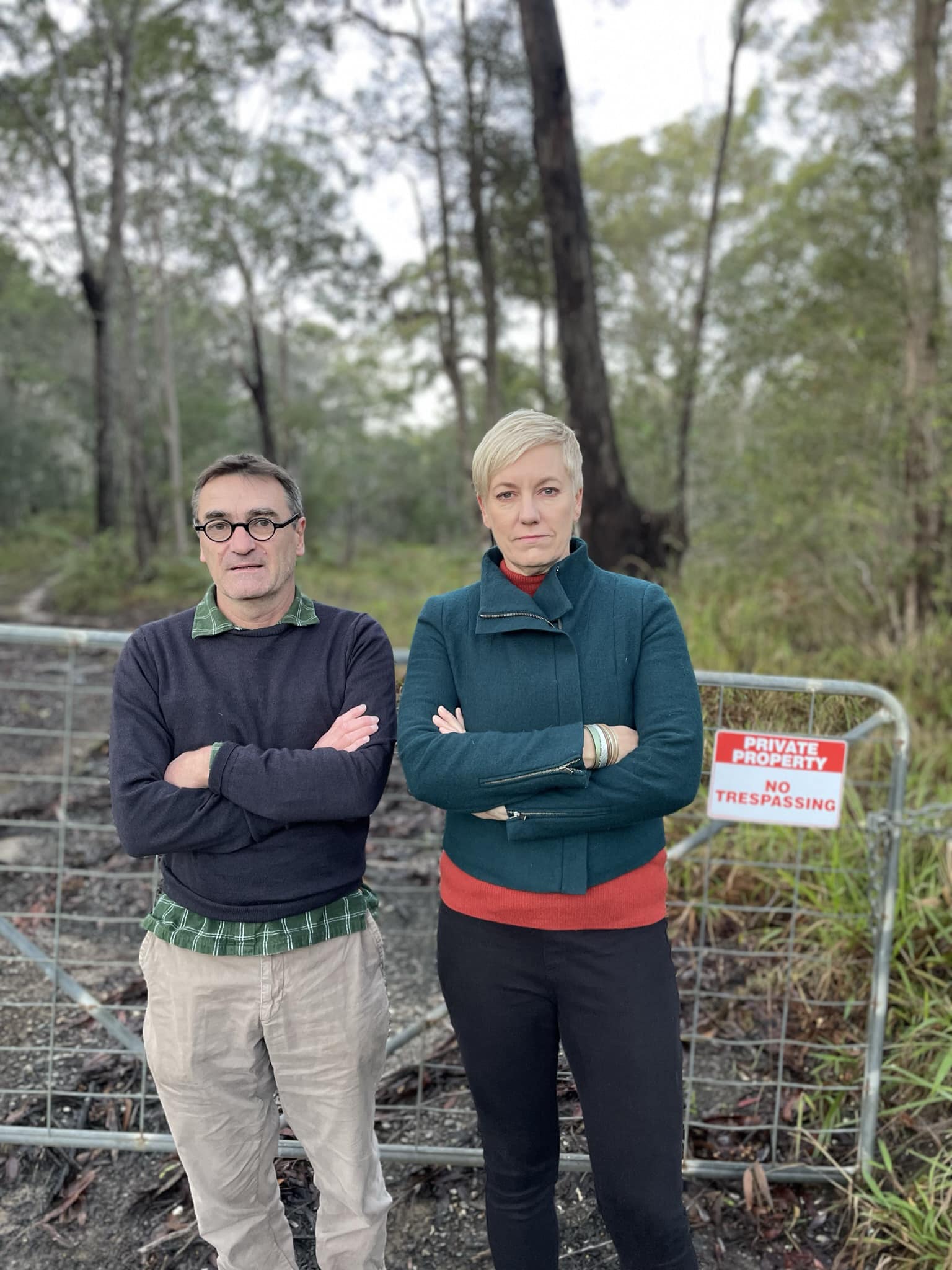
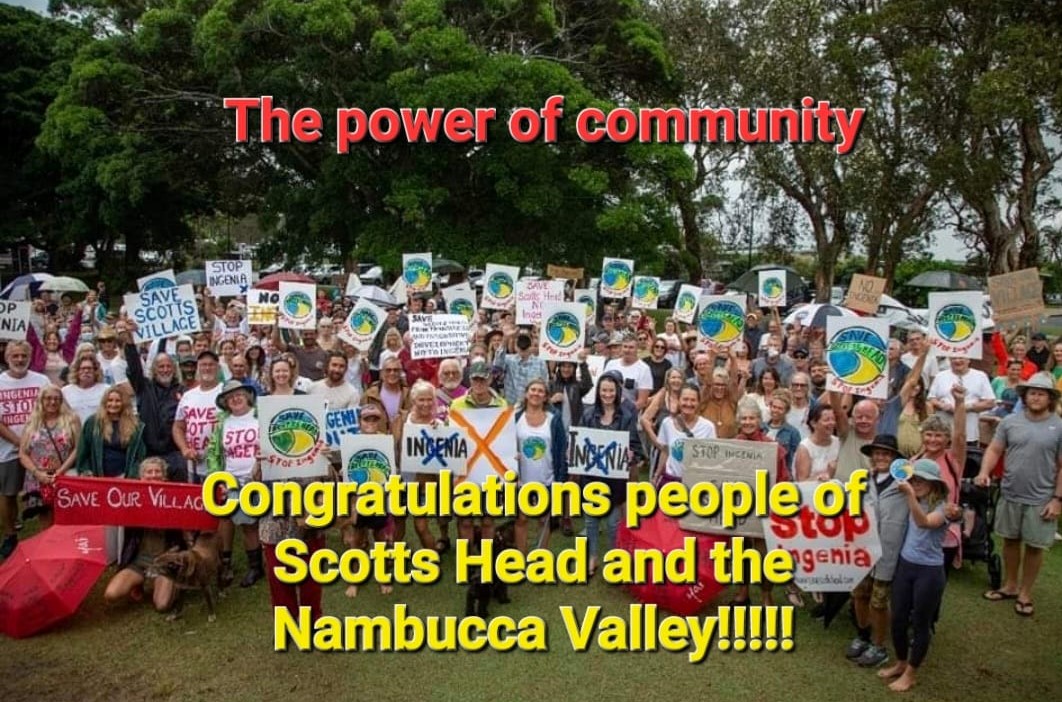
Calling All Slug Sleuths
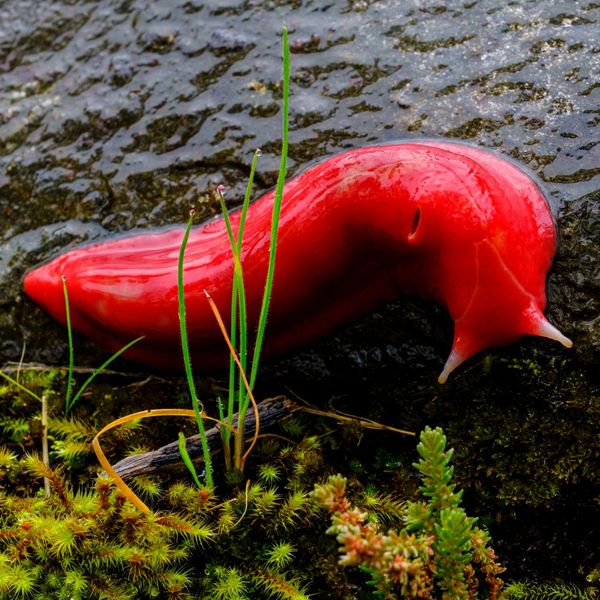
How to ensure the world’s largest pumped-hydro dam isn’t a disaster for Queensland’s environment
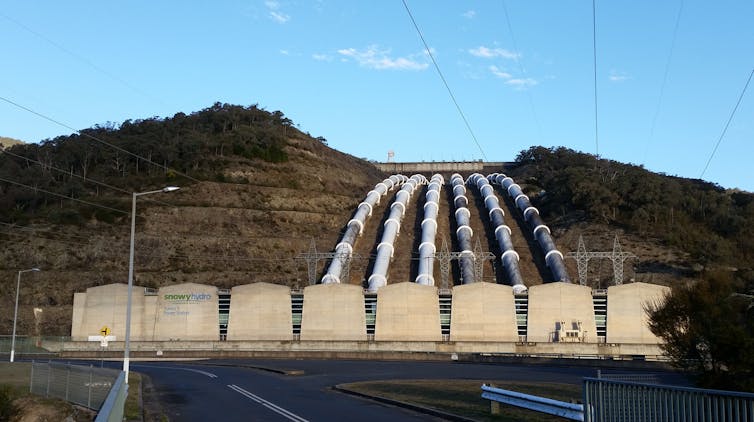
To quit coal and move to renewables, we need large-scale energy storage. That’s where pumped hydro comes in. Queensland’s ambitious new plan involves shifting from a coal-dominated electricity grid to 80% renewables within 13 years, using 22 gigawatts of new wind and solar. The plan relies on two massive new pumped hydro developments to store electricity, including the biggest proposed in the world.
While it sounds high-tech, it’s very simple: take two dams at different elevations. Pump water to the top dam when cheap renewables are flooding the grid. Run the water down the slope and through turbines to make power at night or when the wind isn’t blowing.
When dams are built badly, however, they can trash the environment. For two decades, I’ve pointed out the environmental destruction conventional dams can cause. But now we urgently need more pumped hydro dams to enable Australia’s transition to fully renewable power.
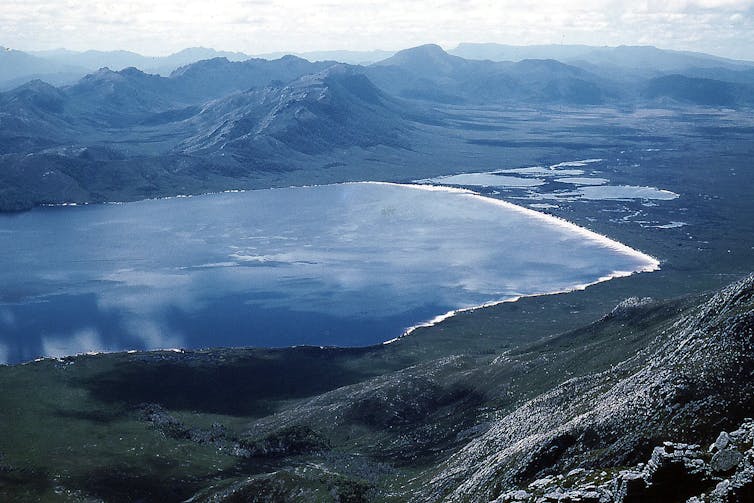
Queensland Is Getting Pumped
Queensland’s huge new renewable energy plan relies heavily on two massive pumped hydro projects. Inland from the Sunshine Coast is Borumba Dam, which could deliver two gigawatts of 24-hour storage by 2030. This was first proposed last year. The new proposal is Pioneer-Burdekin, west of Mackay, which is intended to store five gigawatts of 24-hour storage from the 2030s. It would involve relocating residents of the small town of Netherdale, which would be inundated.
For consumers, this means energy reliability. Each gigawatt of stored power could supply around two million homes – and Queensland has around two million households.
Environmentally, the good news is we can learn from previous mistakes and build this vital infrastructure carefully to minimise local environmental damage and maximise the broader environmental benefit of quitting coal power.
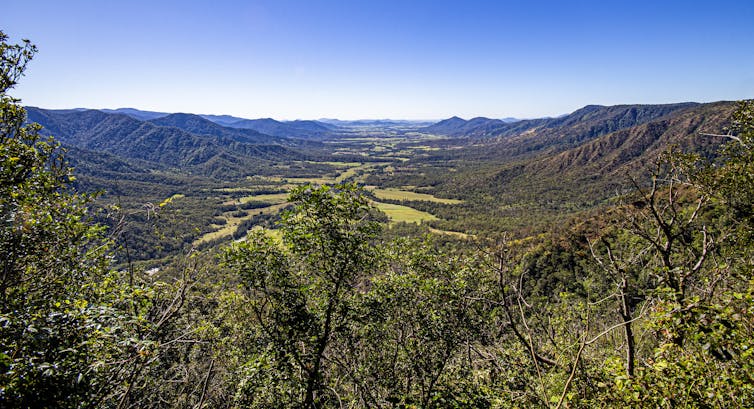
Why Is Pumped Hydro So Important To The Energy Transition?
Solar and wind power can produce vast quantities of cheap power – but not all the time. Pumped hydro is one way to store renewable energy when it’s being generated and releasing it later when needed.
While grid-scale batteries such as Victoria’s Big Battery have drawn plenty of media coverage, they are better at storing smaller amounts of electricity and releasing it quickly. Pumped hydro is slightly slower to start feeding back to the grid, but big facilities can keep generating power for days.
Renewable fuels such as green hydrogen and ammonia may be available in the future, but not now. Nuclear energy is very expensive and would take decades to build. Batteries cannot meet supply gaps longer than a few hours, and come with environmental costs from the mining of raw materials, manufacture, and recycling and disposal of toxic materials.
That leaves pumped hydro as a vital option – especially on cold, still and overcast days in winter when solar and wind produce very little electricity.
So Why Is Pumped Hydro A Better Environmental Prospect?
Conventional hydropower dams destroy river ecosystems and flood forests, towns and prime farm land. Globally, the hydropower industry anticipates expanding by 60% by 2050 to provide renewable electricity and storage.
I’m less worried about pumped hydro, for three reasons.
First, the two reservoirs can be built away from rivers. This alone greatly reduces the damage done by damming rivers and flooding fertile valleys.
Second, the area flooded is generally an order of magnitude smaller than conventional hydropower. This is because the great elevation difference between the two reservoirs may enable more power to be generated from limited water.
And third, pumped hydro doesn’t need much extra water once filled, as the water cycles around. A little topping up to replace losses from evaporation and seepage is all that’s needed.
More than 3,000 potential sites for pumped hydro have been identified in Australia. Importantly, these are all outside formal nature reserves and mostly located along the Great Dividing Range. We’d only need around 20 of these sites to be developed to store power for the nation. That’s around the same number currently planned, built or under construction in Tasmania, South Australia, New South Wales and Queensland.
Nearly all large renewable energy developments meet local opposition based on non-financial values. Opponents of big pumped hydro developments such as Snowy 2.0 have called for other sites to be developed instead.
If we took this approach, however, we could multiply the environmental disruption. That’s because Snowy 2.0, as well as the proposed Borumba and Pioneer-Burdekin projects in Queensland are huge. They could each generate up to ten times more power than most of the other projects being planned elsewhere.
Shifting elsewhere could mean many more smaller projects, which means more roads, transmission lines and reservoirs.

Avoiding The Mistakes Of The Past
Environmental disruption from pumped hydro differs greatly depending on the site.
At the site selection stage, it’s vital to avoid areas of high conservation and Indigenous cultural value.
We can limit environmental damage by using existing dams, as we’re seeing at Snowy 2.0. Old mines in the right locations can have a second life as pumped hydro, as the Kidston project in Queensland demonstrates.
By using existing dams or mines, we can actually begin repairing past damage, such as by improving old dams to boost environmental flows.
That’s not to say damage won’t be done. Pumped hydro has been linked to the introduction of diseases affecting wildlife, as well as invasive plant and animal species.
Roads and transmission lines are one of the biggest impacts on the natural world. For example, nine kilometres of new overhead transmission lines are proposed to access the Snowy 2.0 project, which involves clearing forest in Kosciuszko National Park.
We could dramatically reduce environmental damage and visual clutter by putting the lines underground, or building close to existing power lines.
So, the choice is ours. While pumped hydro is a lot less damaging than traditional hydroelectricity, it will cause some environmental damage.
That’s why pumped hydro developers must choose sites and build carefully, to minimise environmental damage and maximise the benefits of storage. After all, this technology offers the enormous environmental good of freeing ourselves from the need to burn coal, gas and oil every hour of every day.
This article has been corrected. It originally suggested more habitat would be cleared for new Snowy 2.0 transmission lines than for the project’s new roads and pipelines.![]()
Jamie Pittock, Professor, Fenner School of Environment & Society, Australian National University
This article is republished from The Conversation under a Creative Commons license. Read the original article.
Rewiring The Nation Supports Its First Two Transmission Projects
NSW Government Pushes Ahead With Dungowan Dam - EIS Now On Display - Despite Infrastructure Australia Stating Is Not On Priority List
''The New Dungowan Dam and Pipeline aims to increase town water supply for Tamworth and maintain water reliability for agricultural production in the Peel Valley. The proposal was developed in response to long periods of drought and water restrictions. At a time in 2019, Tamworth was 12 months away from running out of water from its primary water source, the Chaffey Dam.The project has a capital cost of more than $1 billion and a benefit cost-ratio of just 0.09. Although it offers sustainability and resilience benefits, our assessment found that similar community benefits could be achieved through a combination of lower cost build and non-build options.This includes increasing the amount of water from Chaffey Dam that is available for urban use, along with policy changes such as demand management and water use efficiency measures.We would welcome a revised business case for an investment solution that better aligns to the identified problems and opportunities for providing increased water security to the Tamworth region.'' Infrastructure Australia, the federal arm, stated.
NSW Government Announces Supplementary Water For Murray Irrigators
Chasm Opens Up Around Liverpool Plains Gas Pipeline
Mining Lobbyists Weakens Well-Intentioned Queensland Environmental Laws Once Again
- Updating environmental conditions for older coal and gas projects operating under conditions that are not up to modern standards.
- Requiring a condition about the scale and intensity of an activity
- Introducing uniform conditions to similar Environmental Authorities.
- All major amendments to Environmental Authorities will now be publicly notified, giving local communities a say.
- The public interest of projects will be assessed by a pool of independent assessors.
- Companies will have to progress their projects or withdraw from the assessment process, mitigating a problem where communities faced years of heartache and limbo while waiting to see if a project would go ahead.
Our environmental responses are often piecemeal and ineffective. Next week’s wellbeing budget is a chance to act
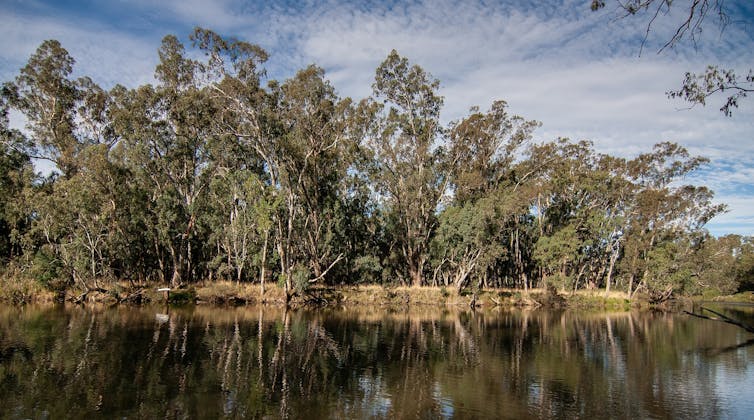
Treasurer Jim Chalmers’ federal budget next week will for the first time include a section on wellbeing, which aims to measure how well Australians are doing in life.
The wellbeing budget will, among other things, assess the state of our natural places using a set of environmental indicators. But what indicators? And what environmental information should be used?
Getting meaningful environmental measures into the wellbeing budget won’t be easy. And tokenism won’t do.
We need a system providing comprehensive, regular and up-to-date information that can genuinely inform environmental and economic decisions.
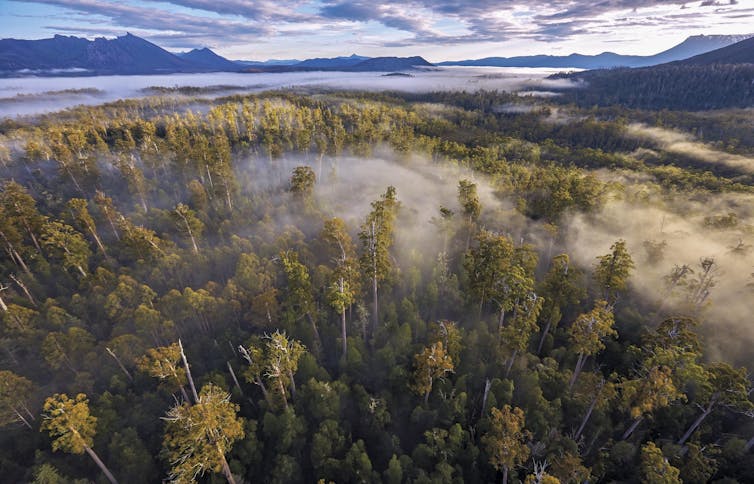
An Information ‘Grab Bag’
Australia has, for too long, relied on the five-yearly State of the Environment reports for updates on how our environment is faring, using a grab-bag of information. As the latest report noted:
Australia currently lacks a framework that delivers holistic environmental management to integrate our disconnected legislative and institutional national, state and territory systems, and break down existing barriers to stimulate new models and partnerships for innovative environmental management and financing.
In other words, we cannot get our environmental act together. Our responses to problems are often piecemeal and ineffective. We do not even have the information we need to fix them.
We’re yet to see what environmental information is included in next week’s wellbeing budget.
The Nine newspapers on Wednesday reported that no indicators have been agreed upon as yet, but the budget papers will contain a chapter on methods used in other jurisdictions, such as the Organisation for Economic Co-operation and Development’s long-running wellbeing framework.
Given the dearth of good information, the government must resist the temptation to rely on partial, uninformative or misleading environmental statistics.
These might include the number of listed threatened species (which would be larger if the environment department had been better-resourced) or the extent of the network of protected areas (which is large but significantly under-represents many ecosystems).
There’s no problem starting with what we have. But we must get to what we need.
We could draw inspiration from the giant information and policy apparatus in the public service that helps us track economic progress, and use a United Nations framework called the System of Environmental Economic Accounting (sometimes shortened to SEEA).
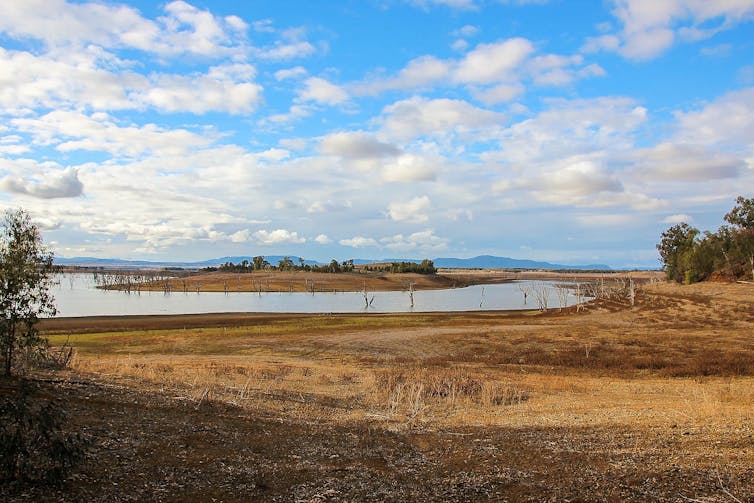
The Giant Information And Policy Apparatus
Every day, thousands of public servants work to gauge what the economy is doing and figure out what it means for industry, the government and the public.
Gross domestic product is measured, reported and debated. The Australian Bureau of Statistics releases it to a set schedule, without needing ministerial approval. Good or bad, the data comes out.
Officials from treasury, the finance department and the Reserve Bank pore over the figures. Their analyses and advice are sent to the treasurer, prime minister and cabinet.
If growth is too strong, the Reserve Bank might increase interest rates. If the economy is weak, the government might stimulate it with infrastructure spending.
Compare this to what we have for the environment.
A five-yearly State of the Environment report. In between reports, environmental problems are identified by scientists, environment groups and concerned citizens. Environmental laws are largely reactive. The agencies tasked with responding have limited funding and information.
The result? We consume the environment salami, one slice at a time, without knowing how much is left.
One example is the box-gum grassy woodlands once common across much of southeast Australia. These woodlands were protected under Australia’s most significant environmental law, the Environment Protection and Biodiversity Conservation (EPBC) Act.
A recovery plan was prepared. But there’s no evidence the plan was delivered and the ecosystem is still no better off.
In his 2020 review of the EPBC Act, Professor Graeme Samuel recommended an overhaul, saying
National Environmental Standards should be immediately developed and implemented to provide clear rules and improved decision-making.
Recognising this couldn’t happen without a system of comprehensive environmental information, Samuel recommended building one including national environmental-economic accounts.
These should be tabled annually in parliament alongside traditional budget reporting.
Samuel’s approach strongly resembles the way governments manage the economy: use regular information to adjust policy settings to stay on trajectory towards desired outcomes.
Environment Minister Tanya Plibersek has hinted she is inclined to follow Samuel, describing his review as “thorough”.
So if environmental management is going to emulate economic management and be informed by the accounts Samuel envisioned, then just what are they?
What Is Environmental-Economic Accounting And What’s The UN-Backed System?
Environmental-economic accounting is an information system blueprint.
SEEA-based accounts are ready-made to provide information for environmental decision-making, just as the national accounts inform economic decision-making.
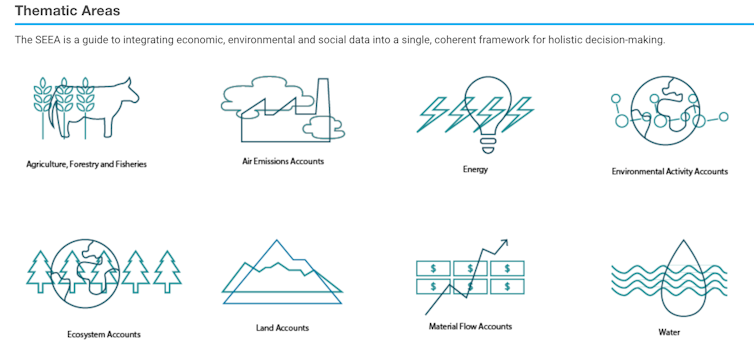
This UN-backed system was only completed in 2021, so real-world examples remain few. But one Victorian study shows the potential.
The accounts in the study showed the economic benefit of harvesting Central Highlands native forests for timber were far outweighed by the economic benefit of maintaining the forests for carbon storage and water supply. In other words, the forest is more valuable if you just leave it alone.
Ceasing harvesting would also bring major biodiversity gains. An assessment of all regional forest agreement areas in Victoria gave similar results.
On paper, Australia’s governments in 2018 endorsed the SEEA and adopted a national strategy to implement it.
In practice however, these governments are yet to produce the vision or political will to build a such a system that will actually inform environmental decisions.
Overseas, change is underway. The US, previously a laggard, now has an ambitious strategy to build environmental-economic accounts into their national information system.
An Urgent Need
Establishing a comprehensive set of environmental-economic accounts is the first step in delivering integrated environmental and economic management.
The United Nation’s System of Environmental-Economic Accounting offers a way forward. Graeme Samuel recommended it. Now government must deliver it. But it will take time and it won’t be cheap.
Early signs are positive but can Plibersek and Chalmers stay the course? Our future depends on it.![]()
Michael Vardon, Associate Professor at the Fenner School, Australian National University and Peter Burnett, Honorary Associate Professor, ANU College of Law, Australian National University
This article is republished from The Conversation under a Creative Commons license. Read the original article.
Glaciers in the Alps are melting faster than ever – and 2022 was their worst summer yet
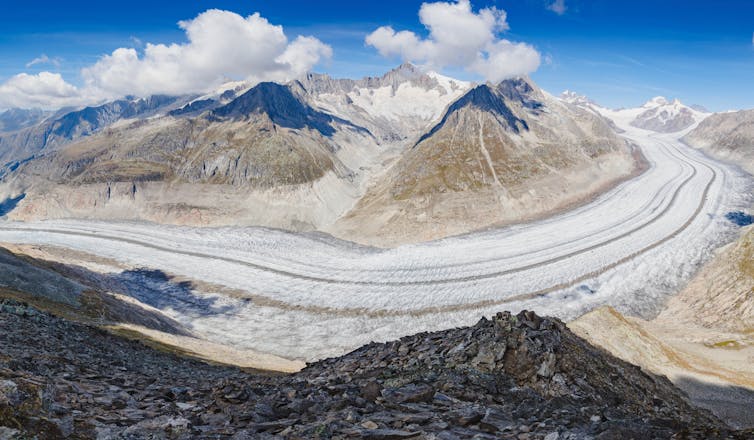
Finally, after what was arguably the worst summer on record for glaciers, snow has begun to fall in the European Alps. It is much needed. Over the 19 years that I have visited and studied the glaciers in Switzerland, I have not seen a summer like 2022. The scale of change is staggering.
Glaciologists like me used to use the word “extreme” to describe annual ice loss of around 2% of a glacier’s overall volume. This year Switzerland’s glaciers have lost an average of 6.2% of their ice – extreme indeed.
The new flurries of snow will form a protective blanket to shield and reflect 90% of the sun’s radiation back into the atmosphere and limits the warming and melting of the ice beneath. When snow falls over the winter, and then subsequently doesn’t melt over the summer, it adds to the mass of a glacier. Over a few similar years, gravity would take over and glaciers would start to advance downhill.
However over the past century, that has not been the case. The protective layers of snow have not been thick enough to offset the warming summer temperatures and on average glaciers around the world have been wasting away since the end of the little ice age in the mid-late 1800s.
Saharan Sand And A Huge Heatwave
Back to this summer. Across the Alps, the preceding winter had very limited snowfall and therefore glaciers were not well insulated against the forthcoming summer melt season.
Spring was particularly harsh as natural atmospheric weather patterns carried Saharan dust to Europe and blanketed the Alpine landscape. Since dust absorbs more solar energy than snow (which is white and therefore more reflective), the now orange-tinted snow melted faster than ever.
Then a major heatwave saw temperature records smashed across Europe, with parts of the UK reaching 40°C for the first time. The Alps were not spared. For instance Zermatt, a famous car-free Swiss village in the shadow of the Matterhorn, recorded temperatures up to 33°C despite being 1,620 meters above sea level.
Glaciers in particular took a beating. By July, the Alps looked like they normally look in September: snow free, with snow and ice-fed rivers flowing at their peak. This was not normal.
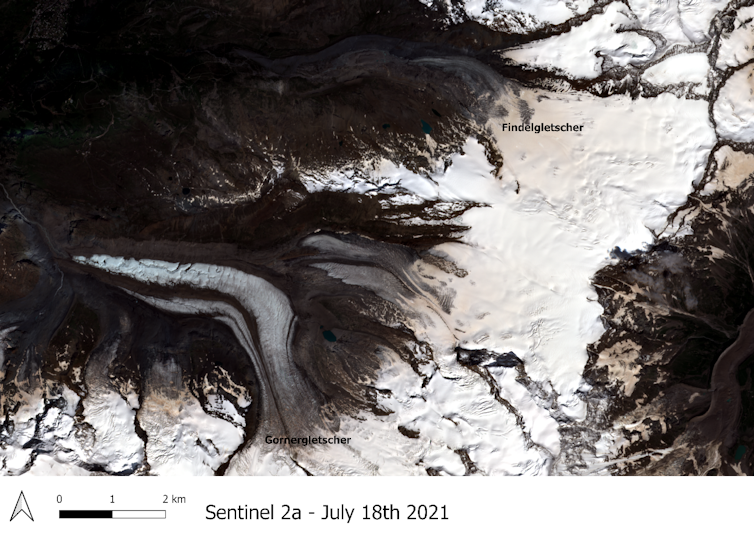
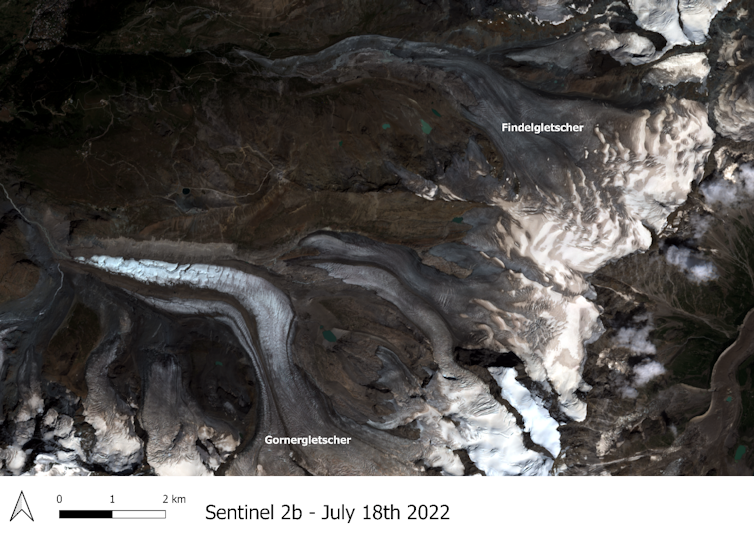
The last time glaciers had an extreme melt season was in 2003 when, again, temperatures were very high across Europe, and a heatwave killed at least 30,000 people (more than 14,000 in France alone). That calendar year, 3.8% of glacier ice melted across Switzerland.
This year, for the first time ever, Zermatt closed its summer skiing. Guides stopped leading high mountain expeditions as permafrost – the frozen ground that binds rocks together – was thawing and causing almost constant rockfalls. Mont Blanc was closed.
50 Years Of Data
We are able to put this in historical context thanks in part to work by the charitable organisation Alpine Glacier Project which was established in 1972 and, along with the University of Salford where I work, has led scientific expeditions to glaciers near Zermatt every summer for 50 years.
Scores of students have helped to observe the effect of our warming climate through chemically monitoring changes in meltwater, topographically surveying the landscape and by taking photos from the same position over the years. Over the project’s five decades, Gorner Glacier and Findel Glacier have retreated 1,385 metres and 1,655 metres respectively.

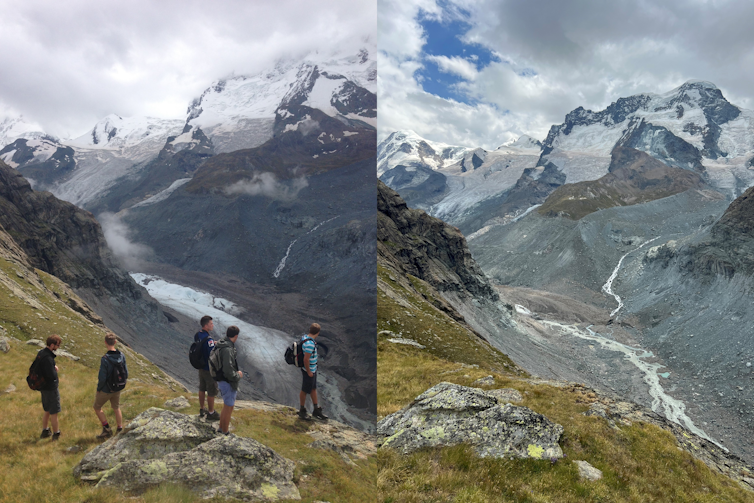
In Switzerland these glacial meltwaters are used for hydropower. In fact, water falling on 93% of Switzerland ultimately passes through at least one electric power plant before even leaving the country. So one consequence is that melting glaciers help to compensate for low rainfall in times of drought, filling reservoirs to supply the nations energy supply.
You could argue that not all glaciers were equally affected by this summer’s catastrophic retreat and ice loss. In part, this is true. The extent to which a glacier has melted does depend on the altitude at which it is located, how steep the glacier tongue is, and how heavily it is covered with debris. There may too be localised climate factors.
However, research just published has shown that Austrian glaciers have also lost more glacial ice in 2022 than they have in 70 years of observations and therefore it is quite clear that severe melt has been the norm in 2022.
Visiting and viewing the geography of high mountain environments is a breathtaking experience, but my fear is that the continued ice melt and extreme temperatures seen this year are not an anomaly. Many more glaciers could be lost entirely within a generation.![]()
Neil Entwistle, Professor of River Science and Climate Resilience, University of Salford
This article is republished from The Conversation under a Creative Commons license. Read the original article.
Farm floods will hit food supplies and drive up prices. Farmers need help to adapt as weather extremes worsen
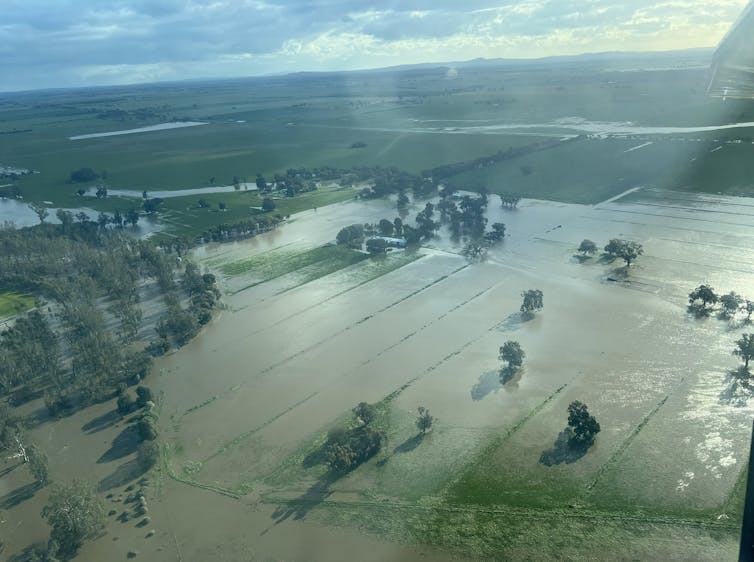
Some of Victoria’s most important agricultural regions are among the areas worst hit by severe floods inundating the state this week.
This may lead to food shortages and higher supermarket prices for milk, fruit, vegetables and other farm products. Indeed, about 20% of Victoria’s milk is produced in flood-affected regions, and millions of litres now may be lost.
For farmers, the floods will certainly be devastating. Over the last five years, Australian farm businesses have faced a relentless string of extreme events, from drought to unprecedented bushfires.
Now, floods are destroying crops, drowning livestock or damaging equipment and infrastructure. Indirect impacts also flow from road closures and electricity outages that can severely interrupt farm operations, damaging products and harming animal welfare.
Farmers face a multitude of challenges in future. Climate change is projected to lead to more frequent severe floods, as well as other climate extremes such as heatwaves and drought. How do farmers adapt to these changes and how can governments support them?
How Floods Damage Farms
Some of the areas hardest-hit by current flooding are in northern Victoria, including Shepparton, Rochester and Echuca – some of Victoria’s most important growing regions.
The damage floods inflict on farms can last long after the water has receded. Farm activities may be interrupted by water-logged soils for days or weeks. Fertile topsoil also can be lost due to water erosion, potentially leading to long-term yield declines.
Livestock can also be harmed. For example, the 2019 flood in Queensland killed hundreds of thousands of cows. Surviving, flood-affected livestock can suffer long-term health conditions, including parasites and bacterial infections, and this has big implications for animal welfare and farm productivity.
The indirect impacts of flooding on farm businesses can be equally harmful. For example, when roads are blocked, agricultural products cannot be transported to processing facilities or retailers.
Power outages also mean many Victorian farmers cannot milk their cows, or must dispose of milk that cannot be transported to processing sites in time. This may lead to large losses for producers and higher supermarket prices for consumers.
Farms And Climate Change
Floods are just the beginning. Farmers face a range of climate extremes, which are becoming more frequent and severe with time. Over recent decades, global warming has shifted Australia’s climate towards higher temperatures and lower winter rainfall, posing significant challenges for farmers.
According to the Bureau of Meteorology, winter rainfall in the southeast of Australia has declined by 12% since the late 1990s, and 16% since 1970 in the southwest of Australia. Combined with streamflow declines across southern Australia, this has reduced soil moisture and the amount of water available for irrigation.
In fact, changes in climate between 2001 and 2020 (relative to 1950 to 2000) have reduced annual average farm profits by an estimated 23%, according to modelling by the Australian Bureau of Agricultural and Resource Economics and Sciences (ABARES). The most severe impacts have been seen in south-western and south-eastern Australia.
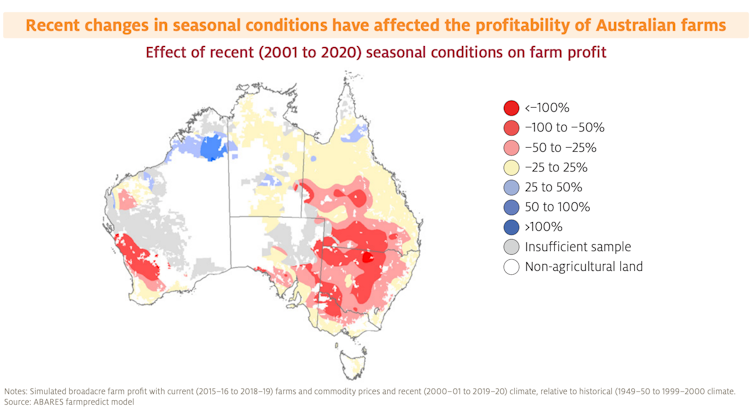
Even more challenging have been the observed changes in climate variability and extremes, such as increases in the risk of bushfires or severe flooding. These are less predictable and more difficult to adapt to than relatively gradual changes.
One of the biggest challenges for agricultural businesses and the Australian community are increasing risks of compounding climate extremes. These involve multiple climate hazards happening at the same time, in the same location or in connected regions – or multiple climate extremes happening in short succession.
Such compounding events can overwhelm the capacity for farmers, emergency services and the broader community to cope.
The extremes of the last five years are a clear example. Severe drought in 2017-2019 was followed by the devastating bushfires in 2019-2020, before three consecutive flooding years due to La Niña.
The drought, for instance, caused wheat production in 2018-2019 to drop to its lowest level since 2008 (down by 16% compared to the previous financial year), and rice and cotton production were down by 90% and 56%.
Climate change is projected to further increase the severity and frequency of many types of climate extremes, depending on global greenhouse gas emissions. Australia will be particularly affected, as hotter temperatures and less rainfall will make parts of Australia more arid.
It’s important to note that such extremes poses significant threats to the mental health of farmers and rural communities.
Research this year, for example, investigated drought and mental health in Australia’s rural communities. It found that each year on average, 1.8% of suicides among rural working-age men could be attributed to drought. Under the driest future climate change scenario, this will increase to 3.3%.
What Can Farmers Do To Adapt?
Australian farmers are experienced in managing climate variability and extremes, and continuously adapt to changes by modifying current farm management practices to reduce risks. These strategies include:
- adjusting planting and harvest dates
- modifying their use of irrigation, such as by upgrading irrigation equipment to more efficient systems
- using minimum tillage practices (soil turnover) to reduce soil erosion and increase water retention
- adjusted livestock management, such as providing shade and cooling for livestock during heatwaves
- optimising the application of fertilisers.
Farmers also adapt by diversifying their farms. For example, they might transition from purely cropping to mixed crop-livestock farming.
Another important way farmers can adapt to extremes is by using forecasting information. Farmers make use of a wide range of weather and commodity price forecasts to prepare for the season ahead. This includes the Bureau of Meteorology’s seasonal climate and water outlooks, ABARES’ agricultural outlook and forecasting information provided by state departments and agricultural consultancies.
New climate information services that are more specific to the needs of agricultural managers have become available. Still, more research is needed to further improve and tailor forecasts, to help farmers make better decisions and manage the risks of climate extremes.
Government support is also crucial to help Australian farmers adapt to climate change. Another important area where governments can provide valuable support is by funding research and development into adapting agricultural production and supply chains.
A good example is the Future Drought Fund, which supports research and innovation to enhance drought preparedness in the agricultural sector.
But ultimately, the most important way to cope with future climate change is by reducing greenhouse gas emissions. Until we reach net-zero emissions globally, the planet will continue to warm and climate extremes will become more likely and more severe in many regions.![]()
Elisabeth Vogel, Postdoctoral research fellow, UNSW Sydney
This article is republished from The Conversation under a Creative Commons license. Read the original article.
The air we breathe: how I have been observing atmospheric change through art and science
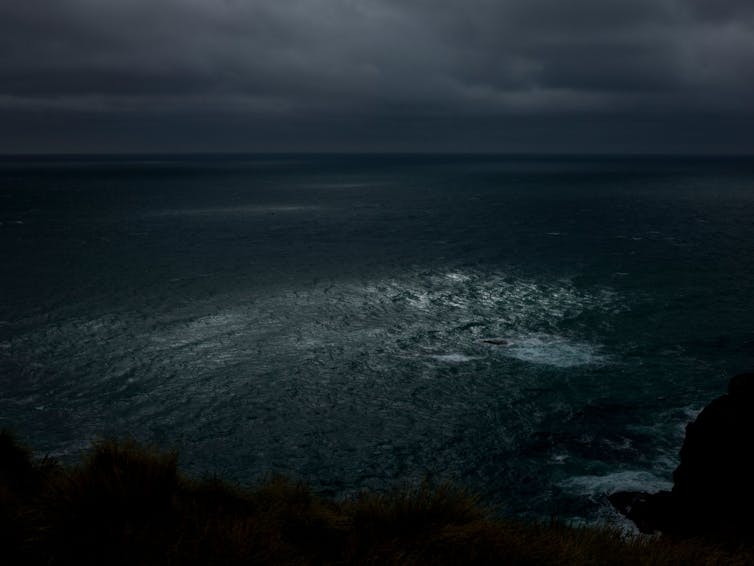
Overlooking the Bass Strait on the remote and windy northwest tip of Lutruwita/Tasmania is the Kennaook/Cape Grim Baseline Air Pollution Station.
The air that arrives at Kennaook has travelled thousands of kilometres. It hasn’t touched land for many days, weeks or even months. It is said to be some of the cleanest in the world.
The powerful westerly winds – the “roaring forties” – carry air masses across the Southern Ocean, reaching land well-mixed and uncontaminated by recent human activity.
Considered “baseline”, this air is representative of true background atmospheric conditions, and grants us insight into the driving forces behind human-driven climate change.
When I arrived at Kennaook in mid-April, it was late afternoon and a storm was brewing. The wind was blowing from the southwest at a steady 54 kilometres an hour – baseline conditions – and the carbon dioxide levels were 413.5 parts per million.
More than 40 years ago, scientists warned CO₂ levels like these would create catastrophic and irreversible environmental damage and species collapse.
I climbed the stairs to the top deck, set up my camera and tripod, and started filming.
Making Invisible Visible
Much of my work has been about the ongoing human and environmental harm caused by uranium mining and atomic testing programs. The invisibility of both the harm and the substances has continued to challenge me creatively.
How do you make visible the invisible? How do you communicate imperceptible change?
Discovering there is a place that captures, archives and measures the air and these imperceptible changes presented me with an opportunity to do just that.
I have since based my creative-practice PhD on the work done at Kennaook/Cape Grim, working alongside the scientists from the Bureau of Meteorology and the CSIRO.
As an artist whose projects have a documentary basis, I use photography, video and sound to respond to place through story, and expand out from there to go beyond what is simply before me.
I believe art has the capacity to reach us in ways other forms of information cannot, revealing the imperceptible hidden in the everyday. In this case: what stories are we breathing?
Sarah Sentilles wrote in The Griffith Review that art shows us “the world is made and can be unmade and remade”.
In troubled times, we are collectively searching for ways to unmake and remake the world around us. Art is one way to unlock that capacity.
The Present Emergency
For this project, titled The Smallest Measure, I have taken an intentionally slow, observational approach, using “slow cinema” techniques to respond to the slow science carried out on site and to the “slow violence” of climate change.
Slow cinema, says writer Matthew Flanagan, “compels us to retreat from a culture of speed […] and physically attune to a more deliberate rhythm”.
Slow violence is described by environmental literature professor Rob Nixon as “a violence that occurs gradually and out of sight […] an attritional violence that is typically not viewed as violence at all."
This kind of violence is so embedded within daily life, connected to commonplace activities and daily rituals we don’t see it at all, let alone regard it as an emergency. In using slow aesthetic techniques, myself and the viewer use our own capacities to observe and pay attention to the damage within the everyday.
On the top deck of the station, as I watch the storm roll across the ocean, I wonder where the air has come from, who else has breathed it, what is inside of it and how long it has been on its journey.
While at Kennaook, I film and record the landscape and science working together, in constant conversation.
Inside the station, the scientists and technicians are at work. A day is spent cleaning one of the instruments, tubes are flushed and reflushed, tests are run. All the while the air is flowing in from the outside through pipes and into different machines, registering numbers and building graphs, telling us what gases are contained within it and which direction it may have come from.
If there is a sudden spike, it has come from a car outside the station. If it is a more consistent patch of dirty contaminants, the air is probably coming from the north, from Melbourne.
Meanwhile, outside the station, the landscape is working too. The ocean currents ebb and flow, the waves crash onto the rocks below, the wind keeps on blowing, making patterns across the grass, sometimes with such force it is destabilising.
My work doesn’t show dramatic scenes or spectacularly catastrophic events. Instead, through slow visual, aural and scientific processes of attention and observation it shows the emergency is already here. We are entangled within it.
If we really want to, we have the capacity to respond. ![]()
Jessie Boylan, PhD student, RMIT University
This article is republished from The Conversation under a Creative Commons license. Read the original article.
Facing the dual threat of climate change and human disturbance, Mumbai – and the world – should listen to its fishing communities
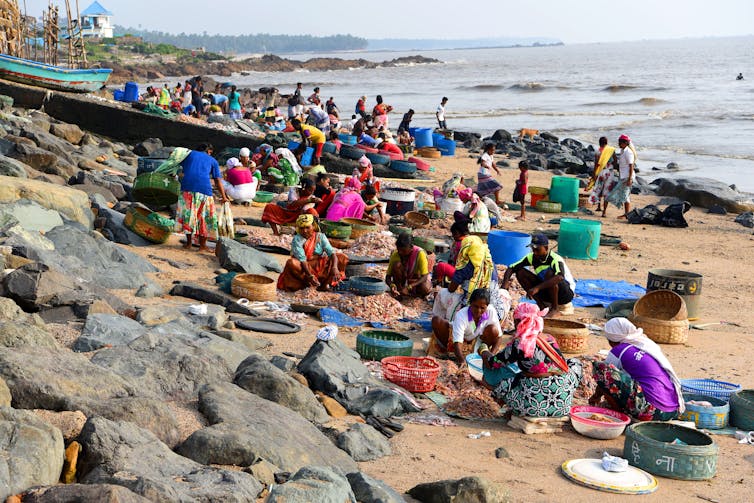
Coastal cities and settlements are at the forefront of climate disruption. Rising sea levels, warmer seas and changes in rainfall patterns are together creating conditions that mean misery for coastal dwellers.
Disasters triggered by extreme weather often make headlines, but many problems linked to the climate are harder to see. These include the effects of warmer sea temperatures on marine ecosystems, the encroachment of seawater into once-fertile land, and coastal erosion.
Climate risks vary for coastal cities around the world. But according to the Intergovernmental Panel on Climate Change, people living in coastal settlements with high social inequality are particularly at risk. This includes cities with a high proportion of informal settlements and those built near river deltas.
The Koli people are one such community. As the original inhabitants of Mumbai, they are spread across a number of historic fishing villages on the city’s coast. But they have steadily been marginalised. Mumbai’s official development plan ignores the role of the Koli, and the ecosystems they depend on, in reducing the climate risks facing the city.
This has forced the community to take risk mitigation into their own hands. Through our work with the Koli community, we have seen how their response to human threats has the potential to create a city more resilient to environmental change.
Mumbai’s Environmental Problem
In Mumbai, enormous wealth co-exists with poverty. Largely built on reclaimed land, the city has undergone rapid development.
Poor waste management, property development and increasingly frequent extreme weather have reduced mangrove cover and polluted the city’s coastal waters. Mangroves are important breeding grounds for a diverse range of aquatic species. Many of these species, such as the Bombay Duck and Pomfret, are vital sources of income for Koli fishers and are key to mangrove biodiversity.
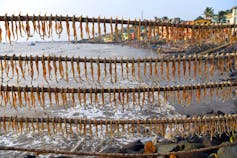
But fish stocks are disappearing fast. Environmental degradation combined with intensive trawling has led to declining catches for traditional fishers. This has affected livelihoods, with Koli women feeling the impact particularly strongly due to their prominent role in processing and selling fish.
Studies have also shown that mangrove forests protect coastal areas from storm surges and coastal erosion. Reduced mangrove cover means extreme weather events now inflict severe damage to fishing infrastructure. Cyclone Tauktae in 2021 inflicted losses of 10 billion rupees (£109,000) to coastal fishers – damage to fishing boats alone was worth 250,000 rupees (£2,700).
Taking The Initiative
Following Cyclone Tauktae, the Koli produced reports documenting the changing frequency and intensity of cyclones affecting the region. These reports, supplemented by media coverage, have raised awareness of the community’s vulnerability towards climate change.
This has allowed the Koli to collaborate with various groups to reduce their vulnerability. We have been working with the Koli community through our own research project, Tapestry. Our research has involved creating photographs and maps with the community to build a more comprehensive understanding of the consequences of climate change and environmental degradation for the region. This has highlighted the importance of mangroves for marine biodiversity and flooding protection.
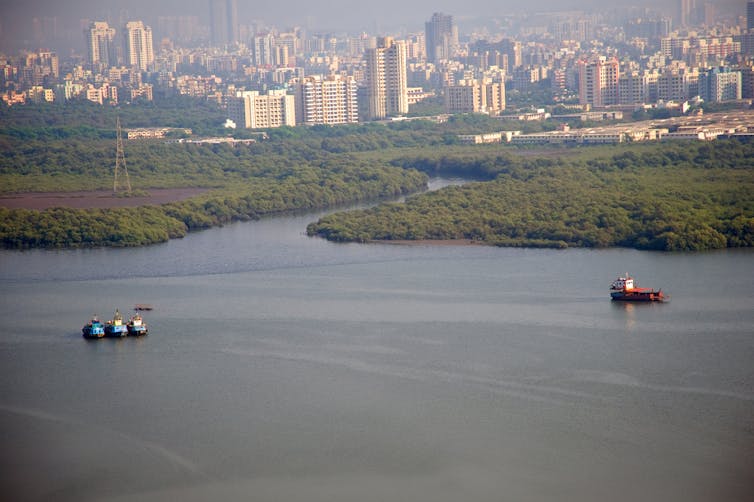
The efforts of the Conservation Action Trust, a Mumbai-based non-profit organisation that aims to protect forests and wildlife, have also been key in protecting mangroves. They found that mangroves were being cleared to make way for golf courses, residential buildings, rubbish dumps and transport infrastructure. They were instrumental in the development of the Mangrove Cell, a government agency that monitors efforts to conserve and enhance mangrove cover in India’s western Maharashtra state.
Addressing water pollution also emerged as a priority through discussions with the Koli community. Our project partner Bombay61 has since implemented measures to improve water quality. Over three days, a pilot trial of net filters collected around 500kg of waste from a single creek. This initiative also challenges the perception of creeks as “drains” or “sewers”.
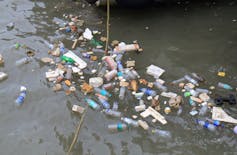
Engagement between the Koli community, environmental organisations, government officials and local public events and exhibitions has allowed more equitable solutions to human threats to be explored. These highlight the importance of local communities to resource governance and urban planning, and could help dissuade the government from destructive future development plans.
The lessons from the Koli experience extend beyond just Mumbai. While each coast and city will face different threats, the seeds of responses can be found in the people who know and understand the environments in which they live. Working with grassroots methods and groups can reveal how action can respond to local needs and address more than just physical climate risks.
If local strategies can be scaled up, they could transform urban planning and climate change mitigation. These strategies must address the need to adapt to climate change and minimise human disturbance. Paying attention to local people’s struggles and harnessing their ideas can be an essential part of creating cities that are more resilient to future threats.![]()
Lyla Mehta, Professorial Fellow, Institute of Development Studies; D Parthasarathy, Professor of Sociology, Indian Institute of Technology Bombay, and Shibaji Bose, PhD Student in Community Voices, National Institute of Technology Durgapur
This article is republished from The Conversation under a Creative Commons license. Read the original article.
Eels are some of nature’s weirdest creatures. Here are 5 reasons why they’re such cool little freaks
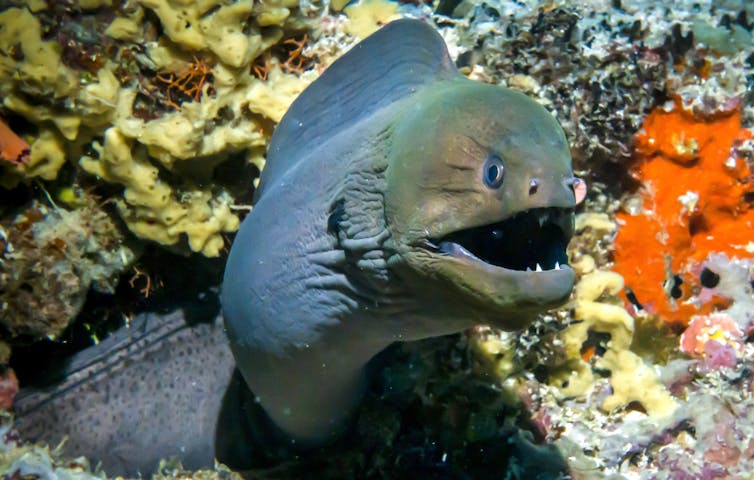
It’s the question that baffled scientists for hundreds years – where on Earth do eels come from?
Aristotle’s best guess was that they spontaneously generated. Danish biologist Johannes Schmidt was pretty sure they spawned in the Sargasso Sea – right near the Bermuda Triangle, for a little extra mystery. His extensive biological surveys over 100 years ago found lots of young eels in this area, leading him to conclude they must hatch somewhere nearby.
But eggs or adult eels breeding were never seen anywhere nearby. So the question remained unanswered … until now.
Last week, a team of researchers were able to confirm that yes, the 1-metre long European eel people knew from their local river really did come from a sub-tropical sea up to 10,000 kilometres away. This team had something history’s biggest thinkers didn’t: cool tech.
Pop-up Satellite Archival Tags are a relatively new type of tracking device that allows scientists to map the movements of marine creatures in a way that simply wasn’t possible before. The tags record where the animals travel, how fast they move, and even how deep they dive. Then, the tags detach and float to the surface where they can transmit data back into the hands of eager scientists.
The European eel’s migration is impressive, but they are still shrouded in mystery. All the eels on the mainland come from the same spawning place – yes, even the eels in backyard ponds, which can slither along land to the sea after only a little rain. Eels can even climb up enormous dam walls! But how do they know where to go? How do they decide when?
Australia, too, has its own illustrious eels. They generally keep to themselves, so much so that most of us wouldn’t even know they’re there. But with all this rain and flooding, there’s a chance you might stumble across one soon.
So I thought this was a good time to share five things you might not know about eels, including in Australia.

1. We Have Our Own Marvellous Migration Story In Australia
While not quite as long as the European eel’s journey, Australia’s short-finned eels undertake a massive migration.
In research published last year, researchers from the Arthur Rylah Institute and Gunditj Mirring Traditional Owner Aboriginal Corporation used satellite tracking tags to map the path of 16 eels from Port Phillip Bay off Melbourne, to the Coral Sea outside the Great Barrier Reef. Some travelled almost 3000km in just five months.
It’s an arduous journey. The tags showed some eels dive to depths of almost 1,000m below the ocean surface, taking advantage of currents and dodging predators. Not all were successful though - at least five of the tracked eels were eaten by sharks or whales.
2. Eels Are Obstacle Course Masters
When you stop to think about it, there are more than a few obstacles between inland fresh waters and the ocean. Many of the swamps and wetlands that would traditionally have offered safe passage have been filled in, replaced by farms, dams and cities.
And yet, eels find a way. One key feature is their ability to breathe through their skin, meaning even the shallowest drain or puddle-soaked lawn is enough water for them to move through.
According to urban legends, eels have been seen slithering through urban gutters, sports ovals, or over university campus fountains, following ancient pathways back out to sea.
3. Eels Are Expert Transformers
Imagine if you had to go through puberty four or five times, with each bodily change more dramatic than the last. Then you’d have a pretty good understanding of what it’s like to be an eel.
Migrating eels have to go from being a saltwater fish to a freshwater fish and back again, which means they have incredible life cycles. They start out as as tiny larva out in the ocean in the Sargasso or Coral Sea where they spawn, before morphing into translucent “glass eels”.
After that, they shape-shift into darker “elvers” at about one year old as they make their way back to fresh water, where they eventually mature into the adult eels that live in our rives, lakes and dams.
When the time comes, they make their final transformation into lean, mean, migrating machines – known as silver eels.
Their eyes grow larger and their heads becomes pointed and streamlined. They also stop eating, as their stomachs shrink to make way for bigger gonads (all the better to spawn with).
4. Sigmund Freud Was An Eel Fan, Too
Speaking of gonads, Sigmund Freud (yes, that Freud) spent the early years of his research career trying to understand the sexual anatomy of eels.
Unfortunately for Freud, and the eels, the only way to tell if an eel is male or female is to dissect it to observe it’s internal reproductive organs.
Despite performing hundreds of dissections, Freud rarely found male eels. Turns out, this is because eels don’t develop reproductive parts until later in life – usually not until they’re at least ten years old.
5) Eels Can Live Very Long Lives
Yes, these long fish have long lives, with some eels living to be more than 50 years old.
One man in Sweden claimed his backyard eel lived to 155, while another eel reportedly lived to 85 in a Swedish Aquarium.
Eels spend the first few years of life getting from their spawning grounds back to fresh water, and the last few making the return journey out to sea. They only make this spawning once – after that, they die.
Why Is This Kind Of Research Important?
There’s still so much we don’t understand about eels around the world. But satellite research such as that published this week, takes us a step closer to pulling all the pieces together.
This has real implications for how we look after eel populations. The European eel (Anguilla anguilla) is critically endangered, with the species experiencing declines of up to 95% in the last 50 years.
We don’t really know how well Australian eels are tracking. If we understand where animals breed and how they get there, it means we can find ways to help, rather than hinder their journey, and protect the places that are important.

The Conversation is grateful for the contribution of Australia’s number 1 eel enthusiast, Dr Emily Finch, whose twitter thread inspired this article![]()
Kylie Soanes, Postdoctoral Fellow, School of Ecosystem and Forest Sciences, The University of Melbourne
This article is republished from The Conversation under a Creative Commons license. Read the original article.
Right now, more adult incontinence products than baby nappies go to landfill. By 2030, it could be ten times higher
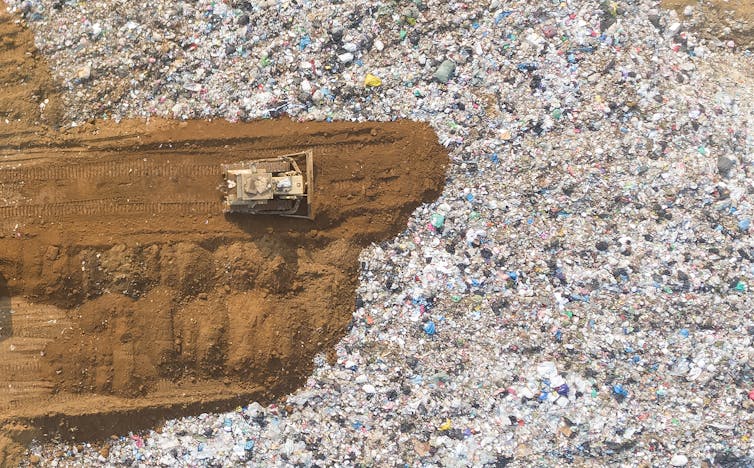
Many parents worry about the waste created by disposable nappies.
But while baby nappy waste is well known, there’s a hidden waste stream that our research has found is actually a bigger issue. More adult incontinence products go to landfill than baby nappies in Australia.
Adult incontinence is often underreported and undertreated. The social stigma and lack of access to affordable health support may stop people seeking treatment and instead rely on incontinence products.
As Australia’s population ages, this issue will grow. By 2030, we predict adult incontinence waste will be four to ten times greater than baby nappies. We’ll need to get much better at dealing with the waste issues associated with these products.

Adult Incontinence Is Common And Long-Lasting
The reason these products will soon outstrip baby nappies is because infants usually only need nappies for a couple of years. By contrast, adult incontinence can stay with you for a lot longer – and it can emerge in many different ways.
How common is adult incontinence? It varies widely. The risk of urinary incontinence increases with age, and women experience higher levels of incontinence compared to men across all age groups. Women over 60 experience the biggest issues, with an estimated 30% to 63% of women over 65 living with some degree of urinary incontinence.
It’s common for people to manage their incontinence with single-use absorbent hygiene products, an umbrella term for incontinence products for both babies and adults.

Like baby nappies, adult incontinence products are usually made from a combination of natural fibres, plastics, glues and synthetic absorbent materials.
What happens to these products after use varies around the world, and can range from illegal dumping, to landfill, composting or burning in a waste-to-energy plant.
In Australia, both infant and adult products typically end up in landfill. The problem is, when you deposit organic waste in landfill, it gives off biogas (a mix of methane and carbon dioxide) and leachate, a polluted liquid that can leak through the lining at the bottom of landfills.
Some landfills in Australia are equipped with collection systems for leachate and biogas – but not all. Biogas emissions and leachate leaks can still occur even if there are collection systems in place.
Food and garden waste are the main source of biogas and organic contaminants in leachate. While councils look to remove food and garden waste from landfills, our ageing population will contribute more incontinence product waste to them.
Could We Divert Adult Incontinence Products From Landfill?
Right now, we estimate about half of all adult incontinence products used in Australia end up in landfills without biogas collection.
The European Union has moved to ban disposal of untreated organic waste – including these products – to landfill. Because adult incontinence products usually contain plastics, the EU requires them to be incinerated where possible rather than biodegraded. Australia has no such laws for this waste.
Could biodegradable incontinence products tackle the waste issue? Only if there are systems in place to manage the waste and recover the resources.
A recycling pathway for biodegradable incontinence products could include anaerobic digestion – systems that harness bacteria to take our waste and make useful products such as renewable natural gas and biofertiliser. This waste stream could also be composted, if the temperature rises high enough to kill off any pathogens and recover the resources.
Problem Solving
This is only part of the solution. Tackling the stigma around incontinence and ensuring access to affordable treatment options could cut the waste stream.
Encouraging manufacturers to use biodegradable materials for both adult and baby incontinence products could enable resource recovery, provided policies, systems and infrastructure are put in place to divert and process the waste. And while this is happening, it’s important these improved incontinence products are accessible and affordable to people who need them.
The reason disposable baby nappies and adult incontinence products have come to dominate the market is simple: they’re convenient, despite the environmental impact. This is especially true for the quality of life for our ageing population.
As our population gets older, we’ll need to rethink this. Let’s bring the issue into the open and talk about it. And let’s find alternative solutions that give people dignity and a better quality of life – while minimising landfill waste and the impact on our environment. ![]()
Beth Rounsefell, Casual Academic, The University of Queensland; Emma Thompson-Brewster, Lecturer, Southern Cross University, and Kate O'Brien, Professor, The University of Queensland
This article is republished from The Conversation under a Creative Commons license. Read the original article.
Pittwater Reserves: Histories + Notes + Pictorial Walks
A History Of The Campaign For Preservation Of The Warriewood Escarpment by David Palmer OAM and Angus Gordon OAM
America Bay Track Walk - photos by Joe Mills
An Aquatic June: North Narrabeen - Turimetta - Collaroy photos by Joe Mills
Angophora Reserve Angophora Reserve Flowers Grand Old Tree Of Angophora Reserve Falls Back To The Earth - History page
Annie Wyatt Reserve - A Pictorial
Avalon's Village Green: Avalon Park Becomes Dunbar Park - Some History + Toongari Reserve and Catalpa Reserve
Bairne Walking Track Ku-Ring-Gai Chase NP by Kevin Murray
Bangalley Headland Bangalley Mid Winter
Banksias of Pittwater
Barrenjoey Boathouse In Governor Phillip Park Part Of Our Community For 75 Years: Photos From The Collection Of Russell Walton, Son Of Victor Walton
Barrenjoey Headland: Spring flowers
Barrenjoey Headland after fire
Bayview Baths
Bayview Wetlands
Beeby Park
Bilgola Beach
Botham Beach by Barbara Davies
Bungan Beach Bush Care
Careel Bay Saltmarsh plants
Careel Bay Birds
Careel Bay Clean Up day
Careel Bay Playing Fields History and Current
Careel Creek
Careel Creek - If you rebuild it they will come
Centre trail in Ku-ring-gai Chase National Park
Chiltern Track- Ingleside by Marita Macrae
Clareville Beach
Clareville/Long Beach Reserve + some History
Coastal Stability Series: Cabbage Tree Bay To Barrenjoey To Observation Point by John Illingsworth, Pittwater Pathways, and Dr. Peter Mitchell OAM
Cowan Track by Kevin Murray
Curl Curl To Freshwater Walk: October 2021 by Kevin Murray and Joe Mills
Currawong and Palm Beach Views - Winter 2018
Currawong-Mackerel-The Basin A Stroll In Early November 2021 - photos by Selena Griffith
Currawong State Park Currawong Beach + Currawong Creek
Deep Creek To Warriewood Walk photos by Joe Mills
Drone Gives A New View On Coastal Stability; Bungan: Bungan Headland To Newport Beach + Bilgola: North Newport Beach To Avalon + Bangalley: Avalon Headland To Palm Beach
Duck Holes: McCarrs Creek by Joe Mills
Dunbar Park - Some History + Toongari Reserve and Catalpa Reserve
Dundundra Falls Reserve: August 2020 photos by Selena Griffith - Listed in 1935
Elsie Track, Scotland Island
Elvina Track in Late Winter 2019 by Penny Gleen
Elvina Bay Walking Track: Spring 2020 photos by Joe Mills
Elvina Bay-Lovett Bay Loop Spring 2020 by Kevin Murray and Joe Mills
Fern Creek - Ingleside Escarpment To Warriewood Walk + Some History photos by Joe Mills
Iluka Park, Woorak Park, Pittwater Park, Sand Point Reserve, Snapperman Beach Reserve - Palm Beach: Some History
Ingleside
Ingleside Wildflowers August 2013
Irrawong - Ingleside Escarpment Trail Walk Spring 2020 photos by Joe Mills
Irrawong - Mullet Creek Restoration
Katandra Bushland Sanctuary - Ingleside
Lucinda Park, Palm Beach: Some History + 2022 Pictures
McCarrs Creek
McCarr's Creek to Church Point to Bayview Waterfront Path
McKay Reserve
Mona Vale Beach - A Stroll Along, Spring 2021 by Kevin Murray
Mona Vale Headland, Basin and Beach Restoration
Mount Murray Anderson Walking Track by Kevin Murray and Joe Mills
Mullet Creek
Narrabeen Creek
Narrabeen Lagoon Catchment: Past Notes Present Photos by Margaret Woods
Narrabeen Lagoon State Park
Narrabeen Lagoon State Park Expansion
Narrabeen Rockshelf Aquatic Reserve
Nerang Track, Terrey Hills by Bea Pierce
Newport Bushlink - the Crown of the Hill Linked Reserves
Newport Community Garden - Woolcott Reserve
Newport to Bilgola Bushlink 'From The Crown To The Sea' Paths: Founded In 1956 - A Tip and Quarry Becomes Green Space For People and Wildlife
Pittwater spring: waterbirds return to Wetlands
Pittwater's Lone Rangers - 120 Years of Ku-Ring-Gai Chase and the Men of Flowers Inspired by Eccleston Du Faur
Pittwater's Parallel Estuary - The Cowan 'Creek
Resolute Track at West Head by Kevin Murray
Resolute Track Stroll by Joe Mills
Riddle Reserve, Bayview
Salvation Loop Trail, Ku-Ring-Gai Chase National Park- Spring 2020 - by Selena Griffith
Seagull Pair At Turimetta Beach: Spring Is In The Air!
Stapleton Reserve
Stapleton Park Reserve In Spring 2020: An Urban Ark Of Plants Found Nowhere Else
Stony Range Regional Botanical Garden: Some History On How A Reserve Became An Australian Plant Park
The Chiltern Track
The Resolute Beach Loop Track At West Head In Ku-Ring-Gai Chase National Park by Kevin Murray
Topham Track Ku-Ring-Gai Chase NP, August 2022 by Joe Mills and Kevin Murray
Towlers Bay Walking Track by Joe Mills
Trafalgar Square, Newport: A 'Commons' Park Dedicated By Private Landholders - The Green Heart Of This Community
Tranquil Turimetta Beach, April 2022 by Joe Mills
Turimetta Beach Reserve by Joe Mills, Bea Pierce and Lesley
Turimetta Beach Reserve: Old & New Images (by Kevin Murray) + Some History
Turimetta Headland
Warriewood Wetlands and Irrawong Reserve
Whale Beach Ocean Reserve: 'The Strand' - Some History On Another Great Protected Pittwater Reserve
Wilshire Park Palm Beach: Some History + Photos From May 2022
Winji Jimmi - Water Maze

New Shorebirds WingThing For Youngsters Available To Download
A Shorebirds WingThing educational brochure for kids (A5) helps children learn about shorebirds, their life and journey. The 2021 revised brochure version was published in February 2021 and is available now. You can download a file copy here.
If you would like a free print copy of this brochure, please send a self-addressed envelope with A$1.10 postage (or larger if you would like it unfolded) affixed to: BirdLife Australia, Shorebird WingThing Request, 2-05Shorebird WingThing/60 Leicester St, Carlton VIC 3053.

 Shorebird Identification Booklet
Shorebird Identification Booklet
The Migratory Shorebird Program has just released the third edition of its hugely popular Shorebird Identification Booklet. The team has thoroughly revised and updated this pocket-sized companion for all shorebird counters and interested birders, with lots of useful information on our most common shorebirds, key identification features, sighting distribution maps and short articles on some of BirdLife’s shorebird activities.
The booklet can be downloaded here in PDF file format: http://www.birdlife.org.au/documents/Shorebird_ID_Booklet_V3.pdf
Paper copies can be ordered as well, see http://www.birdlife.org.au/projects/shorebirds-2020/counter-resources for details.
Download BirdLife Australia's children’s education kit to help them learn more about our wading birdlife
Shorebirds are a group of wading birds that can be found feeding on swamps, tidal mudflats, estuaries, beaches and open country. For many people, shorebirds are just those brown birds feeding a long way out on the mud but they are actually a remarkably diverse collection of birds including stilts, sandpipers, snipe, curlews, godwits, plovers and oystercatchers. Each species is superbly adapted to suit its preferred habitat. The Red-necked Stint is as small as a sparrow, with relatively short legs and bill that it pecks food from the surface of the mud with, whereas the Eastern Curlew is over two feet long with a exceptionally long legs and a massively curved beak that it thrusts deep down into the mud to pull out crabs, worms and other creatures hidden below the surface.
Some shorebirds are fairly drab in plumage, especially when they are visiting Australia in their non-breeding season, but when they migrate to their Arctic nesting grounds, they develop a vibrant flush of bright colours to attract a mate. We have 37 types of shorebirds that annually migrate to Australia on some of the most lengthy and arduous journeys in the animal kingdom, but there are also 18 shorebirds that call Australia home all year round.
What all our shorebirds have in common—be they large or small, seasoned traveller or homebody, brightly coloured or in muted tones—is that each species needs adequate safe areas where they can successfully feed and breed.
The National Shorebird Monitoring Program is managed and supported by BirdLife Australia.
This project is supported by Glenelg Hopkins Catchment Management Authority and Hunter Local Land Services through funding from the Australian Government’s National Landcare Program. Funding from Helen Macpherson Smith Trust and Port Phillip Bay Fund is acknowledged.
The National Shorebird Monitoring Program is made possible with the help of over 1,600 volunteers working in coastal and inland habitats all over Australia.
The National Shorebird Monitoring program (started as the Shorebirds 2020 project initiated to re-invigorate monitoring around Australia) is raising awareness of how incredible shorebirds are, and actively engaging the community to participate in gathering information needed to conserve shorebirds.
In the short term, the destruction of tidal ecosystems will need to be stopped, and our program is designed to strengthen the case for protecting these important habitats.
In the long term, there will be a need to mitigate against the likely effects of climate change on a species that travels across the entire range of latitudes where impacts are likely.
The identification and protection of critical areas for shorebirds will need to continue in order to guard against the potential threats associated with habitats in close proximity to nearly half the human population.
Here in Australia, the place where these birds grow up and spend most of their lives, continued monitoring is necessary to inform the best management practice to maintain shorebird populations.
BirdLife Australia believe that we can help secure a brighter future for these remarkable birds by educating stakeholders, gathering information on how and why shorebird populations are changing, and working to grow the community of people who care about shorebirds.
To find out more visit: http://www.birdlife.org.au/projects/shorebirds-2020/shorebirds-2020-program
Aussie Bread Tags Collection Points

You Are Invited: Youth Congress This November

Northern Beaches Eco Awards 2022 Award Winners Shows Next Generation Have Protection Of Wildlife Firmly In Their Sights
Congratulations to the young men who are known as the Alpine Odyssey group on receiving a Special Commendation in this year's Eco Awards.
Readers may recall our earlier Profile on these young men and their aims to help our native wildlife, visit: Alpine Odyssey - Trekking For Wildlife
Earlier this year six local men trekked 680km over six weeks, through rugged terrain, across three states and raised $20,000 to purchase a Search and Rescue ATV (all- terrain vehicle) for Sydney Wildlife. This vehicle will assist rescuers on the Northern Beaches to reach distressed wildlife in difficult locations, especially after flooding and fires. The Alpine Odyssey group included: Connor Greig, Ben Harris, Yannick Muller, Harry Peters, Alex Burton and Jonty Earp.
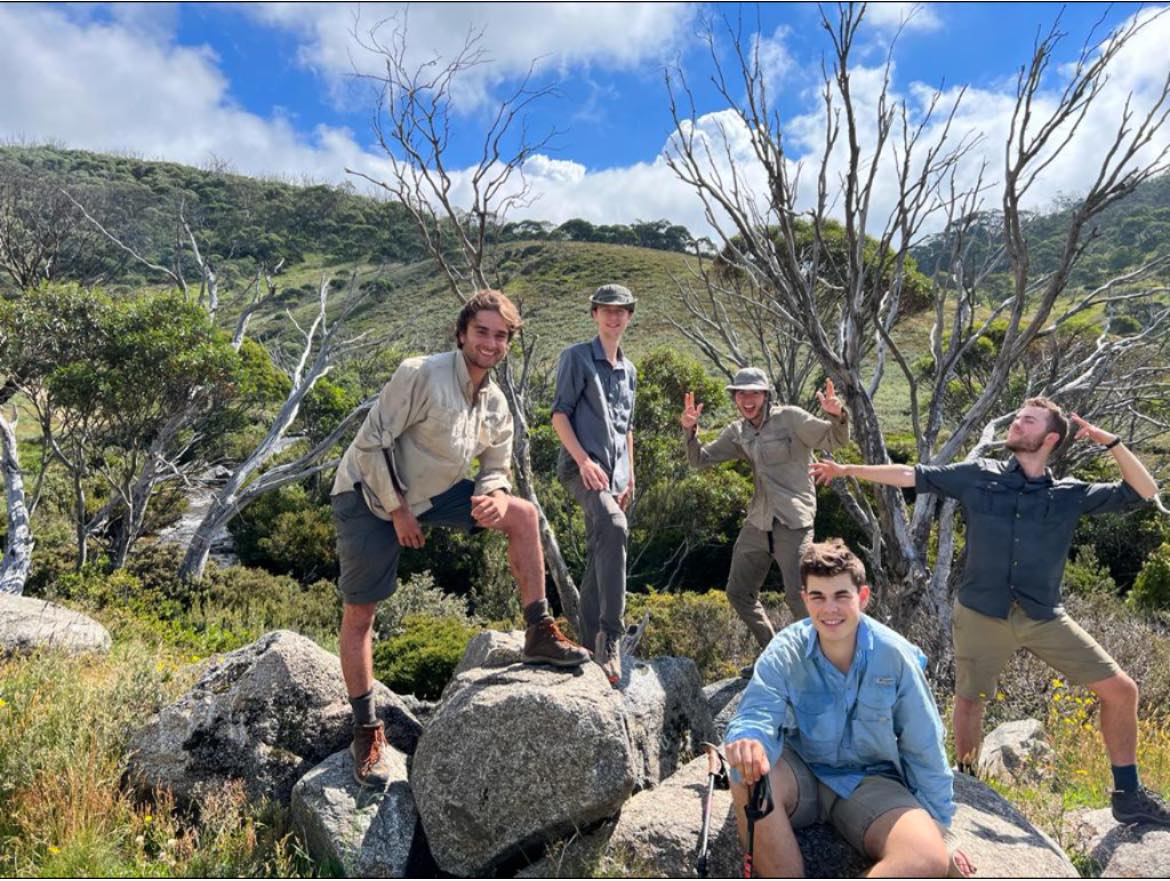
We'd also like to recognise Little Penguin Warden volunteer with National Park & Wildlife Service (NPWS)Taylor Springett who won this years' award in the Youth category
Taylor became involved in the volunteering program through her high school, Mosman High, and the school environment committee which frequently collaborated with Mel Tyas from NPWS. She participated in the annual Penguin Warden training day when in Year 7 and then became a volunteer at Manly Wharf and then in the National Park.
The Penguin Wardens monitor and keep safe the Little Penguins in Spring Cove (including Collins Flat and Store Beach) as well as at Little Manly.
Thank you Taylor!
Did you know that we once had Little Penguins right along coast - that they would come ashore on every beach to make nests and raise young? Yes - we did. You may even see some offshore when surfing - they're still around, although increasingly at risk from predators such as introduced foxes or those who take their dogs offleash into their homes. This si the prime reason we need Penguin Wardens.
A few insights from just a few years ago.
In June 2019 we brought you some news about a project to put fireproof burrows on Lion Island for the colony that lives there - these penguins are seen in the Pittwater estuary and right along the coastal beaches. They used to have nests and colonies on the beaches all along our coast as well - at Turimetta Beach, Narrabeen and Long Reef in particular.
Here's some at Narrabeen in 1955 - and reports of them at Long Reef as well:
When summer comes . . .
.jpg?timestamp=1619878281381)
HE MUST go down to the sea again, the lonely sea and the sky- but only for dinner. This hungry little chap couldn't wait for the rest of the flock that gathers for a nightly 3 a.m. party on the beach. Then they return to their nests to sleep all day.
.jpg?timestamp=1619878349216)
HOUSING TROUBLES begin, at Mrs. E. Whittaker warns off a mother bird for squatting with its young beside her shed. But (inset) the penguin family sits tight till ready to vacate.
PENGUINS at the bottom of their garden
Spring comes with a difference to the gardens of waterfront homes in Ocean Street, Narrabeen, north of Sydney. It brings flocks of fairy penguins-the smallest of the breed-sauntering in from the sea to take up residence for their nesting season. As daytime guests they're welcome, but at nightfall they head down to the sea for food-making noises that keen everyone else awake, too. They stay for a few months.
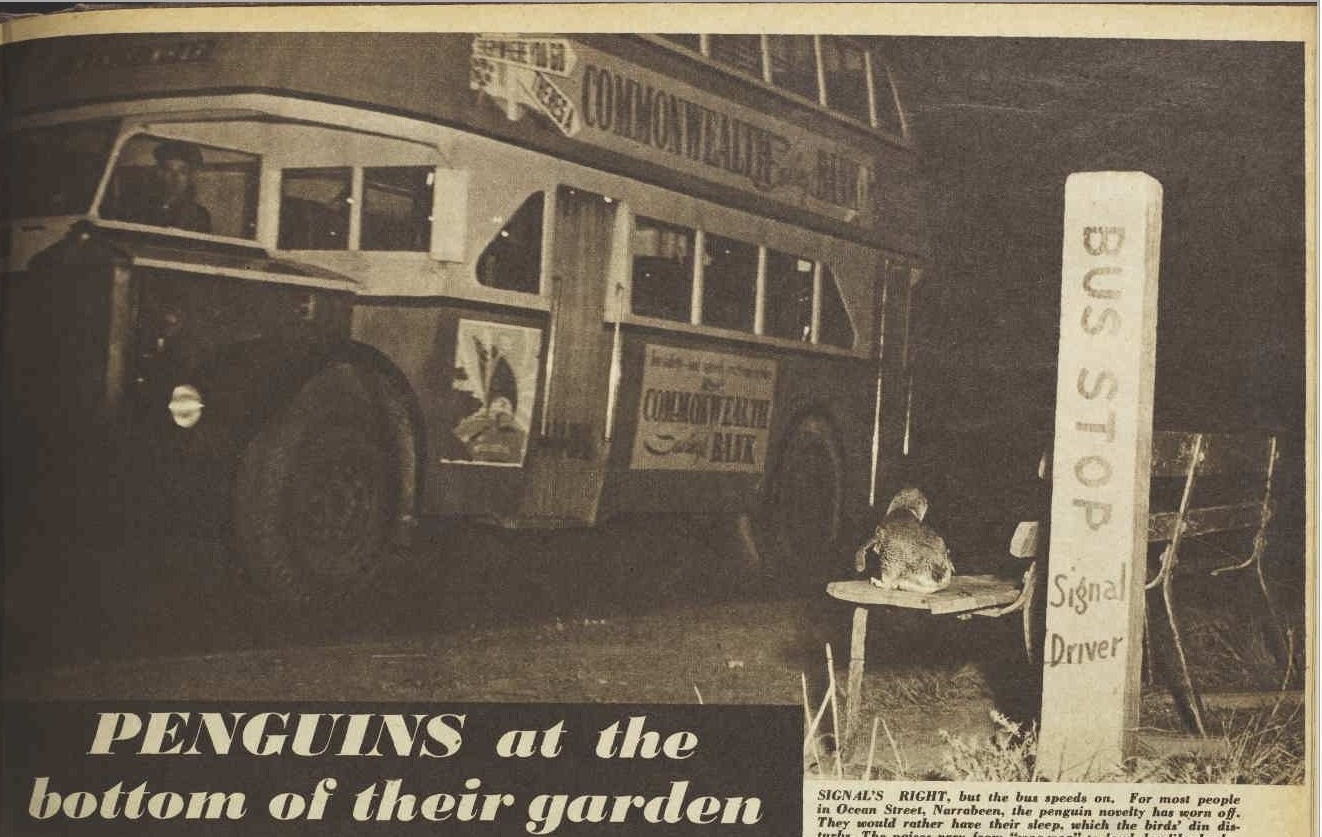
HUNTING for invaders under the house, this family is helped by neighbors. Householders have M tried fencing and boarding around their houses, but still the penguins come to nest each year.
SIGNAL'S RIGHT, but the bus speeds on. For most people in Ocean Street, Narrabeen, the penguin novelty has worn off. They would rather have their sleep, which the birds' din disturbs. The noises vary from "woo-woo" to loud dog-like barks.
.jpg?timestamp=1619878478650)
THE MAN who came to dinner takes it for granted he's welcome as Mr. W. Gillanty greets him. Residents, particularly light sleepers, now have to resign themselves to a trying time while the penguins, which are protected, are in charge. PENGUINS at the bottom of their garden (1956, December 12). The Australian Women's Weekly (1933 - 1982), p. 23. Retrieved from http://nla.gov.au/nla.news-article41852332
Marine Parade North Avalon resident and ornithologist Neville Cayley is mentioned in this one:
Two Little Penguins
AS Mr. Neville Cayley mentions in the 'Mail' that there is very little known regarding the length of time these penguins care for their young before turning them out, I thought the following account would be of especial interest to readers of 'Outdoor Australia.'
At a crowded Museum lecture Mr. Kinghorn told us this unusual incident. One morning towards the end of August, 1921, the peace and serenity of some dwellers at Collaroy Beach were disturbed by extraordinary noises and weird cries at the back door. When the astonished owner of the house opened the door in rushed two little penguins, which with loud voices announced their intentions of staying. Then they danced about and waved their little wings in a most ingratiating way. After a short time these noisy visitors were shown the door, and they disappeared for a while. But, having chosen their home, Mr. and Mrs. Penguin returned later, and as they could not get inside the house they went underneath as far as they could get, and there made their nest of seaweed. The noise every night was almost unbearable; they would scream and cackle, and later, after about six weeks their songs of joy were terrific, for two youngsters were hatched.
About four months after their arrival the penguin family suddenly departed. Where they wintered is their own secret: but late in the following August a terrible cackling outside advised these householders that they were back. When the door was opened Mr. and Mrs. Penguin marched triumphantly in, followed by two grown chicks, which were inquisitive and rather shy. Then followed extravagant dances of greeting and vociferous songs of 'Here we are again,' etc., in which the young ones also joined.
They could not be quietened, and the neighbours hastened across to see if someone had gone mad. The owners of the house put the whole family down on the beach and drove them away. It was then that the parents sent off the chicks to fend for themselves, and they themselves returned later and went under the house to their old nest. The celebrations were so overpowering that the householders took down some boards next day, got the noisy pair out, and drove them at night by car to Palm Beach, about twelve miles distant, and there left them. But next morning saw them back.
They were taken a second time, but returned, and were allowed lo stay; but a home was made for them in the far corner of the garden. The house side was netted off and a hole cut in the fence to allow them free access to the beach. They made a nest of seaweed, and later two eggs were laid. The birds look it in turn to sit on them, and there was always much shouting and scolding when one returned from the sea at night.
After about six weeks two sooty-brown chicks appeared, and the noise that night and the next few days while the celebrations lasted was tremendous. The parents took it in turn to fish and swim during the day that followed, but at night they often went out together to find a suitable supper, and about 9 p.m. would return, arguing together as they came up the beach. The following summer my father saw a young penguin land on the rocks at Coogee. I think it quite likely that it was one of the young ones turned out at Collaroy. It was evidently not very used to fending for itself, for a patch of feathers was torn from its shoulder, possibly through not being an adept at landing.
At the time of the lecture these queer visitors were still in residence at Collaroy, and what became of them I do not know. It is likely enough that the nesting-place on North Head mentioned by Mr. Cayley is occupied by these little penguins or their descendants. Outdoor Australia (1925, March 18).Sydney Mail (NSW : 1912 - 1938), , p. 10. Retrieved from http://nla.gov.au/nla.news-article159721727
It is recorded that two Fairy penguins for a number of years made seasonal visitations to Collaroy, near Sydney, and often laid their eggs under the floor of one of the houses there. — F.J.B. Quaint and Beautiful Sea Birds (1934, October 31). Sydney Mail (NSW : 1912 - 1938), , p. 56. Retrieved from http://nla.gov.au/nla.news-article166107257
The Lion Island colony was officially first protected 65 years ago - although they had been protected decades prior to then:
PROTECTION OF PENGUINS.
Mr. Oakes (Chief Secretary), who is in charge of the Act relating to wild life, desires it to be generally known that all species of penguins are absolutely protected by law, and that anyone interfering with the birds is liable to a penalty. Apart from this he says citizens are requested to refrain from molesting this interesting bird, or driving it back to the sea, as, naturally, no water fowl liked getting wet when half-feathered.
Mr. Oakes remarked yesterday that fairy penguins, which were frequently seen off the coast, came ashore at this period of the year for moulting purposes for about three weeks. During that time they had not been observed to feed or enter the water. Many persons had offered specimens of the birds as exhibits to the Taronga Zoological Gardens, while others had made inquiries how to keep them alive in captivity. As this species of penguin only lived on live fish they could not be kept alive away from the sea. PROTECTION OF PENGUINS. (1923, December 18). The Sydney Morning Herald (NSW : 1842 - 1954), p. 8. Retrieved from http://nla.gov.au/nla.news-article16127509
PENGUINS ON COAST ARE PROTECTED
A penguin caught to-day near Palm Beach v/as refused' by Zoo authorities. The birds are common along the coast at present, are protected by law, and do not live in captivity.
The secretary of the Zoo (Mr. H. B. Brown) said today that the public had been warned against molesting the birds. PENGUINS ON COAST ARE PROTECTED (1936, December 30). The Sun (Sydney, NSW : 1910 - 1954), p. 12 (COUNTRY EDITION). Retrieved from http://nla.gov.au/nla.news-article230907746
Surfers and people on boats report seeing them on an almost daily basis in our area. There is also a Fairy Penguin Colony at Manly.
The ladies from the Fix It Sisters community group have extended their project beyond Lion Island to the South Coast of NSW. In March 2021 they reported that:
Success at Snapper Island!
(This is part of the Eurobodalla Shire Council - which is on the South Coast of NSW)
Update on our Penguin Burrow project. Since installation of the first burrows at Snapper Island (Batemans Bay), some of the penguins have taken up residence and in 2020, gave birth to chicks. Exciting development for our burrow project.
In the meantime, FiS has been working hard in partnership with Pink Cactus on improving the design of the original burrows.
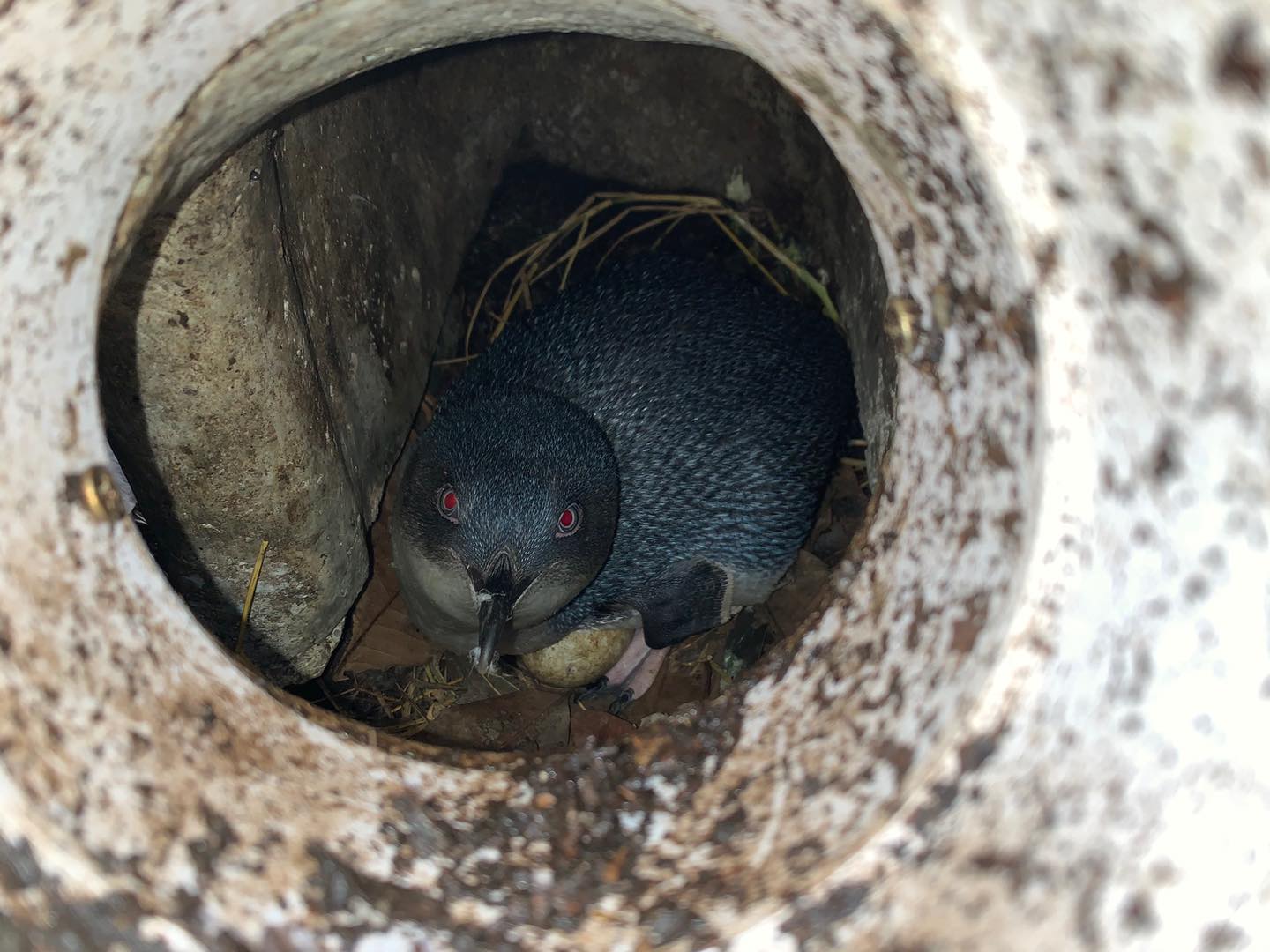
Fix It Sisters photo, March 16, 2021
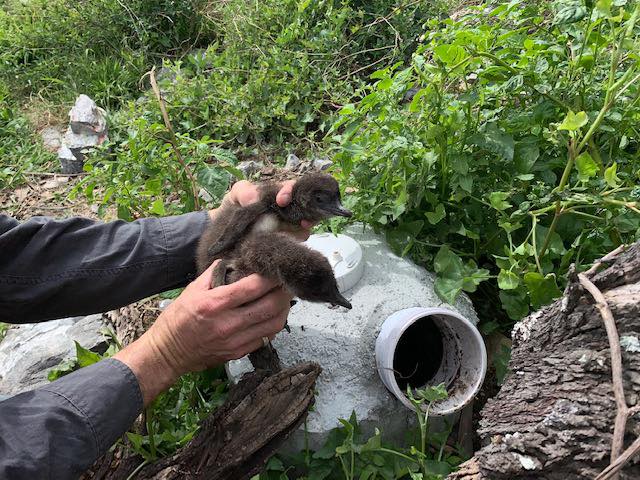
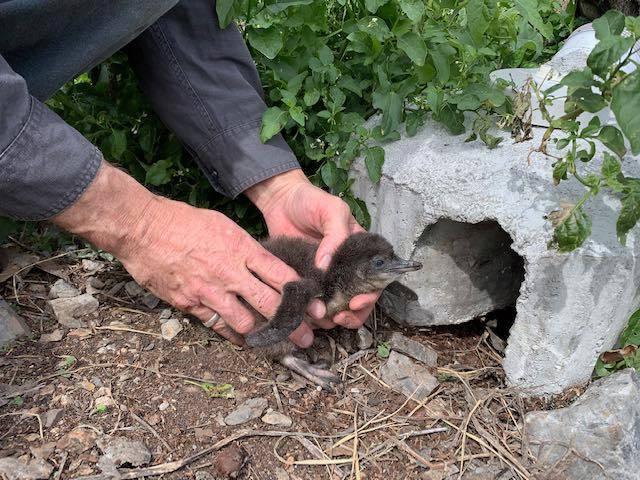
Fix It Sisters photos, March 16, 2021
In 2019 the Eurobodalla Shire Council said:
The Snapper and the Tollgate Islands add scenic beauty to the idyllic seascape of Batemans Bay. Aside from their aesthetic value they hold another surprise which even locals are often unaware – breeding colonies of little penguins.
Eurobodalla Council’s invasive species supervisor Paul Martin said little penguins were the world’s smallest, up to 30cm tall, with an iridescent blue back, snow-white belly, and pink legs and feet.
Paul said the birds could spend days or even weeks at sea before returning to recover and enjoy island time between fishing trips.
“The penguins scrape out their love pads among the low-lying vegetation in early September. Mating, laying eggs, hatching chicks and teaching young penguins the way of the ocean takes until the end of summer,” Paul said.
“Because the eggs and chicks, hidden in vegetation, are so vulnerable to being stepped on, there is a no landing policy on these islands.”
Paul said the penguins local to Batemans Bay were found only on islands, where there were no cats, foxes, dogs or humans.
“About 15 percent of the this population live on Snapper Island, just a stone throw away from the Batemans Bay CBD, so we’re putting a lot of our efforts there,” he said.
“It’s not only the penguins at risk from visiting humans. Sooty oystercatchers – with their black plumage and bright orange bills – also nest on Snapper Island.
Paul said the ‘sooties’ were a threatened species that typically lay two eggs on a flat area just above the high water mark.
“The eggs look exactly like surrounding rocks and are easily stepped on when people walk the tideline around the island,” Paul said.
“The other big risk to both penguins and other shorebirds is entrapment; by plastic pollution like fishing line and drinking bottles or by weeds like kikuyu and turkey rhubarb. These vine-like weeds form loops and birds get entangled and eventually starve to death. That’s not a good way to go in anyone’s book.”
Paul said Council’s sustainability team and Landcare volunteers had commenced work on Snapper Island, clearing environmental weeds and plastic pollution and providing additional nesting opportunities for the little penguins.
“During the summer months, there is nothing better than a kayak paddle around Snapper Island,” Paul said. “However, to ensure our penguins and oystercatchers continue to breed here, Snapper Island is definitely a look but don’t land affair – take your binoculars for a closer view.”
NASA’s Webb Takes Star-Filled Portrait Of Pillars Of Creation
October 20, 2022: NASA
NASA’s James Webb Space Telescope has captured a lush, highly detailed landscape – the iconic Pillars of Creation – where new stars are forming within dense clouds of gas and dust. The three-dimensional pillars look like majestic rock formations, but are far more permeable. These columns are made up of cool interstellar gas and dust that appear – at times – semi-transparent in near-infrared light.

Image: The Pillars of Creation are set off in a kaleidoscope of colour in NASA’s James Webb Space Telescope’s near-infrared-light view. The pillars look like arches and spires rising out of a desert landscape, but are filled with semi-transparent gas and dust, and ever changing. This is a region where young stars are forming – or have barely burst from their dusty cocoons as they continue to form. Credits: NASA, ESA, CSA, STScI; Joseph DePasquale (STScI), Anton M. Koekemoer (STScI), Alyssa Pagan (STScI).
Webb’s new view of the Pillars of Creation, which were first made famous when imaged by NASA’s Hubble Space Telescope in 1995, will help researchers revamp their models of star formation by identifying far more precise counts of newly formed stars, along with the quantities of gas and dust in the region. Over time, they will begin to build a clearer understanding of how stars form and burst out of these dusty clouds over millions of years.
Newly formed stars are the scene-stealers in this image from Webb’s Near-Infrared Camera (NIRCam). These are the bright red orbs that typically have diffraction spikes and lie outside one of the dusty pillars. When knots with sufficient mass form within the pillars of gas and dust, they begin to collapse under their own gravity, slowly heat up, and eventually form new stars.
What about those wavy lines that look like lava at the edges of some pillars? These are ejections from stars that are still forming within the gas and dust. Young stars periodically shoot out supersonic jets that collide with clouds of material, like these thick pillars. This sometimes also results in bow shocks, which can form wavy patterns like a boat does as it moves through water. The crimson glow comes from the energetic hydrogen molecules that result from jets and shocks. This is evident in the second and third pillars from the top – the NIRCam image is practically pulsing with their activity. These young stars are estimated to be only a few hundred thousand years old.
Although it may appear that near-infrared light has allowed Webb to “pierce through” the clouds to reveal great cosmic distances beyond the pillars, there are no galaxies in this view. Instead, a mix of translucent gas and dust known as the interstellar medium in the densest part of our Milky Way galaxy’s disk blocks our view of the deeper universe.
This scene was first imaged by Hubble in 1995 and revisited in 2014, but many other observatories have also stared deeply at this region. Each advanced instrument offers researchers new details about this region, which is practically overflowing with stars.
This tightly cropped image is set within the vast Eagle Nebula, which lies 6,500 light-years away.

Image: NASA's Hubble Space Telescope made the Pillars of Creation famous with its first image in 1995, but revisited the scene in 2014 to reveal a sharper, wider view in visible light, shown above at left. A new, near-infrared-light view from NASA’s James Webb Space Telescope, at right, helps us peer through more of the dust in this star-forming region. The thick, dusty brown pillars are no longer as opaque and many more red stars that are still forming come into view. Credits: NASA, ESA, CSA, STScI; Joseph DePasquale (STScI), Anton M. Koekemoer (STScI), Alyssa Pagan (STScI).
Comedy Wildlife Photography Awards 2022 - Have Your Vote!
It's that time of year again - thank goodness! We have just released the amazing 2022 Finalists to the media and hopefully you have managed to catch them and they made you smile A LOT. It's been a brilliant competition so far with some cracking entries, and it's going to be really, really hard to pick the winners. Yep, this is where we need your help!
Once again, the incredible team at Affinity Photo are sponsoring the People's Choice Award. You can enter via the website www.comedywildlifephoto.com, have fun voting for your favourite finalist, (which in itself is a great way to spend a few minutes with a brew and a biscuit) and you might win the prize draw and a tip top £500 in cash!! Just think what you could do with that?!
What are you waiting for? Terms and conditions apply. Voting closes on November 27th
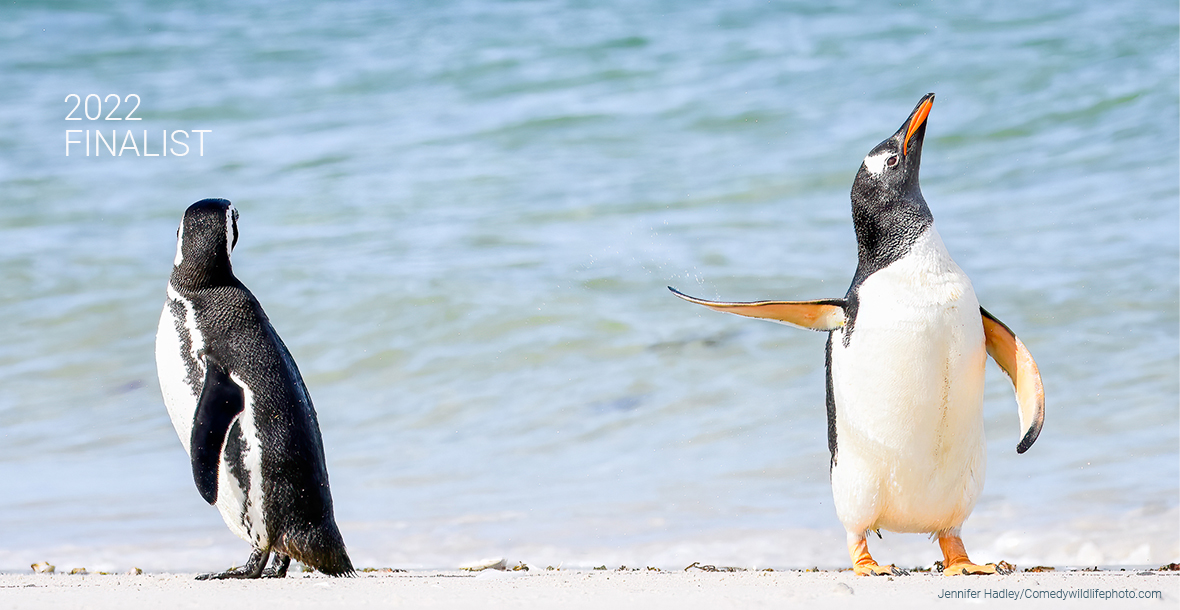

The Anne Kantor Young Women Environmentalist Fellowship 2023: Applications Now Open
The Anne Kantor Young Women Environmentalists Fellowship program provides on-the-job training to equip and encourage new voices in Australia's future policy and democratic debates.
The Australia Institute runs two Fellowship programs: The Anne Kantor Fellowship (General) and the Anne Kantor Young Women Environmentalists Fellowship.
In 2023 there will be three Young Women Environmentalist Fellowships available. Two Fellowships will be with the Australia institute undertaking research and advocacy work in our Canberra office.
The third Fellowship is delivered in partnership with the Tasmanian Independent Science Council and located in our Tasmanian Office. This role provides secretariat duties for the Science Council in addition to the work of the Tasmanian branch of the Australia Institute. Our work in Tasmania focuses on democracy and accountability, marine governance, climate change, environmental and economic policy.
The objectives of the program are to:
- provide Fellows with a unique opportunity to gain on the job training in research, advocacy, and media and communications with research, environmental, climate change or other advocacy-based organisations
- create an experienced pool of Fellows with the skills and experience to effectively advocate for change
- establish a pipeline of new voices to contribute to Australia's future policy and democratic debates
- build relationships and drive future collaboration with partner organisations and other stakeholders
Applications for the 2023 Anne Kantor Young Women Environmentalist Fellowship program close on 31st October.
For further information on how to apply please visit annekantorfellowship.org.au.
Anne Kantor Fellows receive:
- Support to develop skills and gain experience in public policy and advocacy at both the Australia Institute and/or at a partner organisation.
- Mentoring from Australia Institute staff who will offer their knowledge and experience and provide advice to guide and support the Fellow during the program.
- On the job training in areas such as economics, advocacy, media and communications, and NFP governance.
- Networking opportunities and membership of the Australia Institute Alumni.
Applications for the 2023 Anne Kantor Young Women Environmentalist Fellowship are open until 31st October 2022. For further information on how to apply please visit annekantorfellowship.org.au.
The Anne Kantor Fellowship program will ensure Anne's legacy endures long into the future through the terrific young leaders supported by this program. ~ the Australia Institute team
School Leavers Support
- Download or explore the SLIK here to help guide Your Career.
- School Leavers Information Kit (PDF 5.2MB).
- School Leavers Information Kit (DOCX 0.9MB).
- The SLIK has also been translated into additional languages.
- Download our information booklets if you are rural, regional and remote, Aboriginal or Torres Strait Islander, or living with disability.
- Support for Regional, Rural and Remote School Leavers (PDF 2MB).
- Support for Regional, Rural and Remote School Leavers (DOCX 0.9MB).
- Support for Aboriginal and/or Torres Strait Islander School Leavers (PDF 2MB).
- Support for Aboriginal and/or Torres Strait Islander School Leavers (DOCX 1.1MB).
- Support for School Leavers with Disability (PDF 2MB).
- Support for School Leavers with Disability (DOCX 0.9MB).
- Download the Parents and Guardian’s Guide for School Leavers, which summarises the resources and information available to help you explore all the education, training, and work options available to your young person.
School Leavers Information Service
- navigate the School Leavers Information Kit (SLIK),
- access and use the Your Career website and tools; and
- find relevant support services if needed.
George Pittar And Rosie Smart Win Bondi Open Grand Final
Congratulations to Manly's George Pittar who last weekend (Saturday 15 October, 2022) won the 2022 Australian Open of Surfing (AOS) Tour Bondi Open Grand Final, presented by Volkswagen Commercial Vehicles, in three-to-four foot surf at the iconic Bondi Beach.
The sun was shining and the waves were pumping for the third and final stop of the 2022 AOS Tour. It was an epic day of action as some of Australia's best surfers battled to claim the $10,000 winners’ cheque.
The one-day finale showcased the top 16 men and women qualifiers from the combined two event series and local Bondi Boardrider Club wildcards. The Bondi Open was the first major surfing competition to be held at Bondi Beach in more than a decade.
The day started with the men's quarterfinals and ran alternative divisions to conclude with the women’s final.
The men’s final was a hotly contested battle as anticipated between George Pittar (North Manly), Lennix Smith (Barrack Point) Grayson Hinrichs (Bondi Beach) and Dom Thomas (Swansea Heads). AOS standout performer, George Pittar put on a solid performance to narrowly claim the crown ahead of Lennix Smith by 0.10.
"I'm over the moon right now - so stoked," said Pittar. "This is the most money I've ever won in a competition, and it's going to be such a massive help to support my travel and qualifying campaign in 2022/23. This has been such a fun tour to be apart of and all of us surfers have really appreciated the opportunity to compete and win some solid cash."

The women’s final was the last hoorah for the 2022 AOS Tour and did not disappoint, coming right down to the wire and providing plenty of action for thousands of spectators lining Bondi Beach to watch some of Australia’s best aspiring women surfers.
Winner of the Bonsoy Coffs Harbour Open Pres. by Gage Roads, Rosie Smart (Sawtell) took the winnings ahead of Raya Campbell (Coolangatta), Lucy Brown (Bungan), and Oceana Rogers (Shell Cove) respectively.
"I cant believe I just won $10,000, I'm so happy," said Smart. "I had so much fun out there, the waves were good and I really enjoyed surfing at Bondi. A huge thanks to everyone for making this event happen and my Mum for bringing me down and supporting."
The 2022 AOS Tour hosted by Surfing Queensland and Surfing NSW, inaugurated a non-traditional heat-format with surfers best single-wave score making up their final heat placing rather than two-waves. The tour also saw a huge prize pool of $50,000 cash, a significant amount provided to support professional and aspiring Australian surfers in their campaign to qualify for the World Championship Tour.
Surfing NSW Chief Executive Officer, Luke Madden said today was an exceptional finale to the 2022 AOS Tour and was stoked to see the event held at Bondi Beach.
“It’s been incredible to see the community get around the return of competition to Bondi in more than 10 years,” said Madden. “The goal of this tour is to provide more opportunities and prize money for Australian surfers aspiring to qualify for the World Championship Tour. The 2022 AOS Tour has been a huge success. We really appreciate the support from all the local communities, partners, and everyone who’s worked hard to make this tour come to fruition, from the Sunshine Coast to Bondi Beach. We look forward to watching the AOS grow for years to come.”
Surfing Queensland Chief Executive Officer, Adam Yates said the 2022 AOS tour has been rewarding to be a part of and a great collaboration with fellow state body, Surfing NSW.
“It’s been a great partnership with Surfing NSW, working together to establish the AOS as a prominent tour on the calendar with the inaugural single-wave format and a huge prize pool on offer,” said Yates. “The series has exceeded all expectations and we can’t wait to see a bigger and better tour to support Australian surfers next year.”
The AOS tour included two qualifying events, The Bonsoy Coffs Harbour Open presented by Gage Roads (24-25 September) and the Sunshine Coast Open (1 October), with the top qualifiers from the two events being invited to compete at the Volkswagen Commercial Vehicles Bondi Open Grand Final.
The afternoon activities will continue across the road at the Bondi Beach Road Hotel from 2pm onwards to crown the champions and celebrate the conclusion of the 2022 AOS Tour.
The 2022 Australian Open of Surfing Tour presented by Volkswagen Commercial Vehicles is supported by Gage Roads, Bonsoy, Mad Mex (official webcast partner), Coffs Harbour Council and Waverly Council.
MEN'S FINAL RESULTS
- George Pittar (North Manly)
- Lennix Smith (Barrack Point)
- Grayson Hinrichs (Bondi)
- Dom Thomas (Swansea Heads)
WOMEN'S FINAL RESULTS
- Rosie Smart (Sawtell)
- Raya Campbell (Coolangatta)
- Lucy Brown (Bungan)
- Oceanna Rogers (Shell Cove)
Report and photos by Surfing NSW
National Bird Week + Aussie Bird Count 2022
HSC Online Help Guides
Stay Healthy - Stay Active: HSC 2022

Self-compassion is the superpower year 12 students need for exams … and life beyond school

This week, year 12 students in New South Wales will begin their final exams, with students in other states soon to follow.
This can be one of the most stressful times in a students’ life. It can also be very stressful for parents trying to support their children.
But there is a superpower in the arsenal of every year 12 student that can be harnessed to manage this stress. This superpower fuels resilience, not only for exams, but for any difficult situation they may be faced with across their lifespan. It’s called self-compassion.
I am a clinical psychologist who specialises in self-compassion. This is how you can use it, both for yourself and for your kids.
What Is Is Self-Compassion?
The most enduring relationship we have is the the one we have with ourselves.

This relationship shapes how we think, feel and behave to such an extent that often we are not even aware of it. We may think being hard or critical on ourselves pushes us to achieve results. But research shows this can lead to self-doubt, avoidance of hard tasks, higher risk of psychological illness and poor resilience.
In contrast, self-compassion encourages us to feel comfortable in our own skin. It allows us to generate our own feelings of warmth, reassurance, soothing and liking who we are.
What Does It Look Like?
Difficult moments, like an unexpected exam question, are a ripe breeding ground for self-criticism. You may be familiar with thoughts like, “I’m not good enough, I can’t do this, I should have worked harder, I’m going to fail, I am a failure.” These self-critical thoughts are almost addictive – when they pop up it is easy to fixate on them and spiral into panic or avoidance.
In contrast, picture a friend sitting the same exam and getting the same unexpected question. This is a good friend who you really care about. If you could say something to them in that moment, it’s probably easy to think of supportive words. Such as,
I know this is hard, but you can do this. Your best is good enough. This one exam will not define your life, even if you get this wrong. I still think you’re a wonderful person.
Self-compassionate responses are more likely to make us feel confident, safer and therefore resilient. If we’re feeling this way, it will likely be easier to at least attempt the question rather than give up. It it is easy to draw on compassionate wisdom for our friends. But why don’t we say these things to ourselves?
Our Tricky Brains
We don’t because we have a “tricky brain”.
We like to think of ourselves as sensible and rational, but the brain is actually a faulty piece of machinery. The brain is hardwired, through evolution, to focus on threat.
Noticing threat, and triggering the flight or fight response, is what kept our ancestors alive when they were faced with an aggressive cave man or attack from a sabre tooth tiger.
Today, threats tend to be less extreme: like not getting the score we want in a test or not having the career pathway we might like. But our mind and body still react in the same way as if we are facing a sabre tooth tiger, flooding our body with adrenaline and the stress hormone cortisol.
The (Many) Advantages Of Self-Compassion
Treating ourselves with the same kindness and support as we would a good friend comes with a plethora of mental health benefits.

It is associated with greater psychological well-being and a lower risk of developing symptoms of poor mental health.
It leads to better stress-management and boosts motivation to study for exams, often contributing to better grades. Self-compassion gives us the bravery to try things we may fail at, because we can take bigger chances if we know we won’t beat ourselves up if we fall short. And sometimes, as with more study, these chances and extra effort pay off.
Self-compassion can also weaken the link between perfectionism and depression. Perfectionism involves high standards and high levels of self-criticism and which can lead to depressive symptoms, especially when we fall short of our goals. But self-compassion may enable perfectionists to have high standards and be motivated to do well, without experiencing the mental health cost.
For example, in the lead up to an exam, having high standards and wanting to achieve can motivate us to study. But during and after the exam, this perfectionism can turn into self-criticsm which places us at risk of feeling low and unmotivated.
If we are compassionate with ourselves, we can normalise how tough exams are, and show unconditional positive regard for ourselves no matter the outcome. These compassionate ways of thinking can help protect us from depression symptoms.
How Can We Learn And Teach Self-Compassion?
Some of us tend to be more self-compassionate than others. But if you’re not naturally a very self-compassionate person, there is good news. Research suggests you can learn to do it.
Here are some ways to approach it, both for yourselves and your kids:
Check yourself: before talking with your child about self-compassion, consider how you treat yourself when under stress. Do you notice when your self-critic is triggered? It is hard to be genuine when encouraging someone else to be self-compassionate if you are not.
Model self-compassion: when you make an error, try replacing “I’m so stupid I let this happen” with “I’m upset about this and that’s okay – anyone would feel this way in this situation”. Talk to yourself in a soft, calm tone. Whether you say it aloud or even just think it, your behaviour in that moment will change, and your kids will see this
Talk about it: start a conversation with your child about their relationship with themselves. You could start with: “what do you tend to say to yourself or feel about yourself during exams?” or “what effect does this have on you?”
Help them spot self-criticism: encourage your child to notice when self-criticism pops up. Give the self-criticsm a name such as “Voldemort” or the “angry voice”. Say, “When you notice Voldemort is hanging around, gently ask yourself, what would you say to a good friend or a ten-year-old version of yourself in this situation?” This simple question is a powerful way to tap into the compassionate wisdom we all carry
Give yourself a hug: to help calm yourself, give yourself a hug. Either wrap your arms around yourself or hold your hand on your heart or chest and notice the warmth. Research tells us we get a flood of oxytocin - the body’s “love drug” – and relax when we are hugged by someone we trust. Our brain and body has an almost identical reaction when we hug ourselves. Use as a this short-cut to trigger some feelings of self-compassion.
And Don’t Forget This
Self-compassion is not something you master once, and then move on from. It is a lifelong journey of practising and learning. Sometimes, especially when we are busy or stressed, it will drop off and we may need reminding of it’s superpower.
As a self-compassion researcher, I talk, write, think, debate and practice self-compassion daily. Yet I still find myself listening to Voldemort at times. This is part of living with a “tricky brain”. But there is a more self-compassionate option. And if we take it, the science says we will be more resilient and more likely to accomplish our goals.![]()
Madeleine Ferrari, Clinical Psychology Lecturer , Australian Catholic University
This article is republished from The Conversation under a Creative Commons license. Read the original article.
2023 Year 12 School Scholarship Program Now Open: DYRSL

Securing A Brighter Future For Disadvantaged Youth
Be The Boss: I Want To Be A Horticulturalist
Also Available:
- Be The Boss: I Want To Be An Architect
- Be The Boss: I Want to Be a Marine Electrician
- Be The Boss: I want To Be A Cabinet Maker
- Be The Boss: I Want To Be An Automotive Mechanic
- Be The Boss: I Want To Be A Biotechnologist
- Be The Boss: I Want To Be A Pilot
- Be The Boss: I Want To Be A Music Producer
- Be The Boss: I Want To Be A Gardener
- Be The Boss: I Want To Be A Builder
- Be The Boss: I Want To Be A Confectioner
- Be The Boss: I Want To Be A Ship's Captain
Word Of The Week: Blue
Adjective - 1. Having blue as its colour. 2. (health care) Having a bluish or purplish shade of the skin due to a lack of oxygen to the normally deep red blood cells. 3. sad. 4. (politics) Supportive of, run by (a member of), pertaining to, or dominated by a political party represented by the colour blue. 5. (astronomy) Of the higher-frequency region of the part of the electromagnetic spectrum which is relevant in the specific observation. 6. (of steak) Extra rare; left very raw and cold. 7. (of a dog or cat) Having a coat of fur of a slate grey shade.
Blue is one of the three primary colours in the RYB colour model (traditional colour theory), as well as in the RGB (additive) colour model. It lies between violet and cyan on the spectrum of visible light. The eye perceives blue when observing light with a dominant wavelength between approximately 450 and 495 nanometres. Most blues contain a slight mixture of other colours; azure contains some green, while ultramarine contains some violet. The clear daytime sky and the deep sea appear blue because of an optical effect known as Rayleigh scattering. An optical effect called Tyndall effect explains blue eyes. Distant objects appear more blue because of another optical effect called aerial perspective.
Blue has been an important colour in art and decoration since ancient times. The semi-precious stone lapis lazuli was used in ancient Egypt for jewellery and ornament and later, in the Renaissance, to make the pigment ultramarine, the most expensive of all pigments. In the eighth century Chinese artists used cobalt blue to colour fine blue and white porcelain. In the Middle Ages, European artists used it in the windows of cathedrals. Europeans wore clothing coloured with the vegetable dye woad until it was replaced by the finer indigo from America. In the 19th century, synthetic blue dyes and pigments gradually replaced organic dyes and mineral pigments. Dark blue became a common colour for military uniforms and later, in the late 20th century, for business suits. Because blue has commonly been associated with harmony, it was chosen as the colour of the flags of the United Nations and the European Union.
Surveys in the US and Europe show that blue is the colour most commonly associated with harmony, faithfulness, confidence, distance, infinity, the imagination and being cold. In US and European public opinion polls it is the most popular colour, chosen by almost half of both men and women as their favourite colour. The same surveys also showed that blue was the colour most associated with the masculine, just ahead of black, and was also the colour most associated with intelligence, knowledge, calm, and concentration.
The modern English word blue comes from Middle English bleu or blewe, from the Old French bleu, a word of Germanic origin, related to the Old High German word blao (meaning 'shimmering, lustrous'). In heraldry, the word azure is used for blue.
In Russian, Spanish and some other languages, there is no single word for blue, but rather different words for light blue and dark blue. Several languages, including Japanese and Lakota Sioux, use the same word to describe blue and green. For example, in Vietnamese, the colour of both tree leaves and the sky is xanh. In Japanese, the word for blue (ao) is often used for colours that English speakers would refer to as green, such as the colour of a traffic signal meaning "go". In Lakota, the word tȟó is used for both blue and green, the two colours not being distinguished in older Lakota.

The Blue Boy (1770), featuring lapis lazuli, indigo, and cobalt colourants - by Thomas Gainsborough - courtesy The Huntington Library, Art Collections.
The Blue Boy (c. 1770) is a full-length portrait in oil by Thomas Gainsborough, owned by The Huntington in San Marino, California. One of Gainsborough's best known works, The Blue Boy was long thought to be a portrait of Jonathan Buttall (1752–1805), the son of a wealthy hardware merchant, because of his early ownership of the painting. This identification has never been proven and as Susan Sloman argued in 2013, the likely sitter is Gainsborough's nephew, Gainsborough Dupont (1754–1797). It is a historical costume study as well as a portrait; the youth appears in clothing from the 17th century as the artist's homage to Anthony van Dyck and is very similar to Van Dyck's portraits of young boys, especially his double portrait of brothers George Villiers, 2nd Duke of Buckingham and Lord Francis Villiers. Gainsborough had already drawn something on the canvas before beginning The Blue Boy, which he painted over. The painting is about life-size, measuring 48 inches (1,200 mm) wide by 70 inches (1,800 mm) tall.
Eiffel 65 - Blue (Da Ba Dee) [ Originally Released In October 1998]
Bob Dylan - Tangled Up In Blue (1975)
Neil Diamond - Song Sung Blue (1972)
Elton John - I Guess That's Why They Call It The Blues (1983)
John Williamson - True Blue (1986)
Midnight Oil - Blue Sky Mine (1990)
U2 - Beautiful Day (2000)
Photo-Taking Helps Students Remember Slide Content
October 17, 2022
Students often take camera-phone photos of slides during an instructor's presentation. But the question has lingered whether this practice helps students remember information.
A first-of-its-kind study answers the question, finding that taking pictures of PowerPoint slides during an online presentation helped students remember the slide content better than for slides they did not photograph. The study was recently published in the Journal of Applied Research in Memory and Cognition by UC Riverside psychology professor and researcher Annie Ditta.
In both experiments of the two-part study, students were asked not to study the photographs before testing. Does the act of taking the photograph itself help students better remember the content?
Other experiments have considered whether people retain information better when they photograph information. In those studies, many of them conducted in museum galleries to mimic photo-taking outside of a classroom, photograph-taking hindered peoples' ability to remember the photographed content when they were later tested.
But Ditta's is the first study that specifically considered the lecture slides students photograph as part of their academic studies. Not only did students remember content better when they photographed it, but students also better remembered complementary spoken-word-only content.
"Given that the floodgates have already opened regarding the use of technology in the classroom -- particularly with the proliferation of online courses offered due to COVID-19 -- it is wise to study how best to support learners' use of technology in the classroom so we can understand how best to support their learning with these devices," Ditta and her fellow researchers concluded.
In the first experiment, 132 university students were asked to take photographs of alternate PowerPoint slides on their computer screens. Half took photos of the even-numbered slides; half took photos of the odd-numbered slides. The presentations they were shown involved subjects with which it was assumed the mostly psychology students would have little familiarity -- printmaking, fencing, and cheese-making.
For the 60-question fill-in-the-blank test that followed, students were asked to recall information from both the slides and the spoken-word-only portion of the teacher's presentation.
The first experiment found participants remembered the slide information significantly better when they took a photo than when they did not. However, there was no difference in memory for the spoken-word-only information.
In the second experiment, half of the 108 study participants could photograph their choice of slides, as long as they photographed about half. The other half of participants were "yoked" to the first set of students, instructed to photograph only the slides the others chose to photograph.
Whether the students chose the slides they photographed, or whether they were instructed to mimic others' photo-taking, both sets of students remembered slide-photographed content better than non-photographed content. This time, however, they also experienced a benefit for remembering spoken-word-only content.
"Overall, we found evidence for a photo-taking benefit in an online lecture," Ditta and her colleagues wrote. "The results were surprising, given that most prior research has found a photo-taking impairment effect."
Additionally, the researchers wrote: "Students who take photos in lectures could enjoy the benefits of taking photos for on-slide information without much cost to information that is only said."
Before both experiments, students expressed a belief that photo-taking would help them remember slide information -- but they felt it would not help them remember spoken-word-only content. "They were wrong about that," Ditta said regarding the spoken content findings of the second experiment.
The study did not determine why the photo-taking helps ; Ditta said that will be addressed in a planned follow-up study. But Ditta and her colleagues surmised regarding the first experiment's findings: "It's possible that the predictability of taking a photo every other slide enabled participants to pay more attention to the upcoming to-be-photographed slides in experiment 1 ."
Previous experiments found note-taking was superior to photo-taking in terms of remembering content. Ditta's study did not compare note-taking with photo-taking; she said the interaction of note-taking and photo-taking will also be the subject of a future study.
In addition to Ditta, who is an assistant professor of psychology, study authors for the article, "What happens to memory for lecture content when students take photos of the lecture slides?" included Julia Soares, a faculty member at Mississippi State University and Benjamin Storm, a faculty member at UC Santa Cruz.
Annie S. Ditta, Julia S. Soares, Benjamin C. Storm. What happens to memory for lecture content when students take photos of the lecture slides? Journal of Applied Research in Memory and Cognition, 2022; DOI: 10.1037/mac0000069
Mercury Prize 2022: what rapper Little Simz’ win says about the UK independent music scene

Speaking after she won the 2022 Mercury Music Prize, Simbiatu Abisola Abiola Ajikawo, aka Little Simz, was clearly honoured to be given the award. It wasn’t about the money (£25,000), or at least it wasn’t just about the money. It was about the fact that the prize was a recognition by her peers of the quality of her album Sometimes I Might Be Introvert.
Born to Nigerian parents, Little Simz grew up on a north London council estate. She credits her early musical ambitions and their development to the local youth club. As well as her music career, she has acted on the BBC and E4.
Unlike the Brit she won earlier this year for best new artist, the Mercury Prize is less obviously corporate, less about the music industry congratulating and promoting itself. It was set up as a musical version of the Booker prize.
And where the Brits have historically underrepresented Black music (which prompted the creation of the MOBO awards) and women, the Mercury prize has a record for providing a fairer distribution. Solo women winners include Arlo Parks, Ms Dynamite, Speech Debelle and PJ Harvey (who’s won it twice). Among the solo male winners are Dave, Sampha, Skepta, Benjamin Clementine, Talvin Singh and Dizzee Rascal.
The Mercury is also notable for giving the award to debut records and records released on independent labels. Although Sometimes I Might Be Introvert is Little Simz’ fourth album, it is very much a product of the independent sector, being released on her own music label, Age 101.
The prize’s broad shortlist also endeavours to acknowledge the diverse forms of music, from the big sellers (this year Harry Styles and Sam Fender) to the smaller, independent acts (the jazz musician Fergus McCreadie and the Cornish language artist Gwenno).
No one type of music (for example, rock) dominates. This makes it different from the Booker in which literary fiction is the standard, at the cost of genre fiction, whether that’s historical, sci-fi or crime writing.
Glorious, Genre Busting, Independent
Why did Little Simz win? Not because Sometimes I Feel Introvert was “the best” British or Irish album of the year in any objective sense, and not because it was the most successful in commercial terms. Little Simz, while admired by critics, has not enjoyed a great deal of chart success.
It was precisely because it was not a commercial album that had sold millions. Sam Fender and Harry Styles were never going to win, just as the Spice Girls or Oasis or Robbie Williams were never going to win when they were nominated. What Sometimes I Might Be Introvert has is a glorious mix of musical devices and sharp attitudes. Little Simz raps and sings, crossing genres from grime to show tunes to soul. Her themes are personal and political. The result is an endlessly entertaining listen that resists any easy categorisation.
What has been interesting about the Mercury has been how the composition of the jury has influenced what gets the prize. From the beginning, the jury has brought together journalists, broadcasters, musicians and the occasional academic, including the chair for the first two decades, music scholar Simon Frith.
Frith has noted how the different categories of juror negotiate the complex task of finding a winner from the shortlist. Journalists, he observes, are better at writing about music than arguing about it, while broadcasters are good at speaking about music, but not so good at listening to what others have to say.
It’s also the case, according to Frith, that some jurors approach the task sociologically – what makes the music matter now, in these times and in this place – while others, notably musicians, focus on the techniques and innovations in the music itself (this year’s panel included Jamie Cullum, Loyle Carner and Anna Calvi).
One final note on this year’s Mercury. It was originally scheduled to take place on September 8, the day of the Queen’s death. The concert by the nominees and the dinner were underway when the news came through, and the event was cancelled. (Self-Esteem, one of the nominated artists, arranged for the uneaten food to be re-distributed to those in need.)
The last time the Mercury Prize was threatened with disruption was on September 11, 2001. Then, it was argued, that music mattered more than ever, and the ceremony went ahead, giving the award to PJ Harvey. Some might take this year’s cancellation as a sign of music’s (and the album’s) declining special significance.
But much more important is the fact that the award went to Little Simz, and as such serves to highlight the talent of young black female musicians in the UK, and to celebrate a truly original artist.![]()
John Street, Emeritus Professor of Politics, School of Politics, Philosophy, Language and Communication Studies, University of East Anglia
This article is republished from The Conversation under a Creative Commons license. Read the original article.
How desk jobs alter your brain – and why they’re so tiring

A long day in the office can leave you empty of energy and overcome with desire for TV and a takeaway. But you’ve been sitting down all day. So why do you feel as tired as your friends who have physical jobs?
Struggling through your list of essential tasks feels ever more gruelling as the clock ticks down for home-time. Worse still is bumping into a colleague on your way out who “just wants a quick minute”. It might seem obvious that you are more likely to make impulsive decisions at the end of a long day, but people often power through anyway.
A recent study that scanned people’s brains at different points in their work day found high-demand tasks which require intense, constant concentration can lead to build-up of a potentially toxic chemical called glutamate. Normally used to send signals from nerve cells, in large quantities glutamate alters the performance of a brain region involved in planning and decision making, the lateral prefrontal cortex (lPFC).
Science has shown time again that mental fatigue has real effects. There are numerous studies which show that court decisions can depend on how fatigued the judge is. For example, after a long day in court, judges are more likely to deny parole (which is considered the safer option). Studies show that clinicians are more likely to prescribe unnecessary antibiotics at the end of a tiring clinical session.
The new study, from Paris Brain Institute (ICM), investigated whether cognitive functions such as focus, memory, multitasking and problem-solving can cause fatigue of the lPFC, which influences the decisions we make when we cross things off our list.
Opportunity Cost
The brain is the command centre of the body, regulating circulation, breathing, motor function and the nervous system. The brain coordinates these activities at the expense of huge energy use.
Nerve cells break down nutrients to release energy (metabolism). But this process accumulates byproduct molecules known as metabolites. Glutamate is a type of metabolite. The brain clears this toxic waste chemical in your sleep.
The authors of the Paris study wanted to see whether prolonged cognitive tasks exhaust the brain’s supply of nutrients. They also tested whether this type of high-focus demand builds up a greater concentration of toxic substances in the lPFC than other parts of the brain. In this case, the authors compared lPFC to the primary visual cortex, which receives and processes visual information.

To test their hypothesis the authors divided their 40 participants into two groups. Both groups sat in an office in front of a computer for six and a half hours. One group had to do difficult tasks that called on their working memory and constant attention.
For example letters were displayed on a computer screen every 1.6 seconds and participants had to sort them into vowels and consonants or, depending on the colour of the letter, upper or lowercase. The second group did similar but much simpler tasks. Both groups managed an average 80% correct response rate.
The scientists used magnetic resonance spectroscopy (MRS) to scan participants’ brains and measure levels of metabolites. The authors took readings at the beginning, middle and end of the day.
They found fatigue markers, such as increased glutamate concentration, but only in the high-demand group. The build up of toxic chemicals was only observed in the lateral prefrontal cortex [lPFC]) and not the primary visual cortex.
After the high and low-demand cognitive tasks, the two groups had decision tests. This included choices about their willingness to exert physical effort (whether to ride a bike at different intensities), cognitive effort (whether to perform harder or easier versions of the cognitive control tasks) and patience (how long they were willing to wait to receive a larger reward). The rewards ranged from €0.10 to €50 (8p-£43). Delays for receiving the reward ranged from immediate cash after the experiment or bank transfer after one year.
Rethinking The Work Day
The authors found that the high-demand group, which had an elevated level of metabolites in the lPFC, preferred choices that were less taxing. These participants’ pupils were less dilated (dilated pupils suggests arousal) and took less time to make decisions, which indicates they experienced this part of the experiment as undemanding.
So the Paris study also raises questions about whether the working day is structured in the best format. According to the results of the study we should break up high-demand cognitive control tasks that need working memory and constant attention and take into account the fact that performance takes a hit at the end of the day. Some professions may need very different structuring considering these results.
During their shift, air traffic controllers only guide aircraft for up to two hours, followed by a half-hour break. But bus drivers, clinicians and pilots would benefit from regular, compulsory rests too.
Our brains have many different areas that are active during different tasks, such as speaking, hearing and planning. So not all of our decisions can be explained by the Paris study findings.
Considering the interactions across the entire body, a 2006 study from the USA suggested that new information may be best processed in a state of hunger. But hunger makes it harder to store newly learned information. Satiety means fuels are available to build neuron circuits to store long-term memory.
Decisions about a third party, for example a judge delivering a verdict on a defendant, may be better in a state of satiety while tasks that involves fine motor functions, such as surgery, may be compromised. This is is because after a meal, self interest in survival is diminished because we do not need to search for food.
This allows us to more objectively judge our environment. But satiety is a time when the body needs to rest to process food, which is why complex fine motor skills aren’t at their best in this state.
Next time you have to make a difficult decision at the end of a long day, be aware you will be inclined towards low-effort actions with short-term rewards. If possible you should sleep on it.![]()
Zoltán Molnár, Professor of Developmental Neuroscience, University of Oxford and Tamas Horvath, Professor of Neurobiology and Ob/Gyn, Yale University
This article is republished from The Conversation under a Creative Commons license. Read the original article.
First-ever genetic analysis of a Neanderthal family paints a fascinating picture of a close-knit community
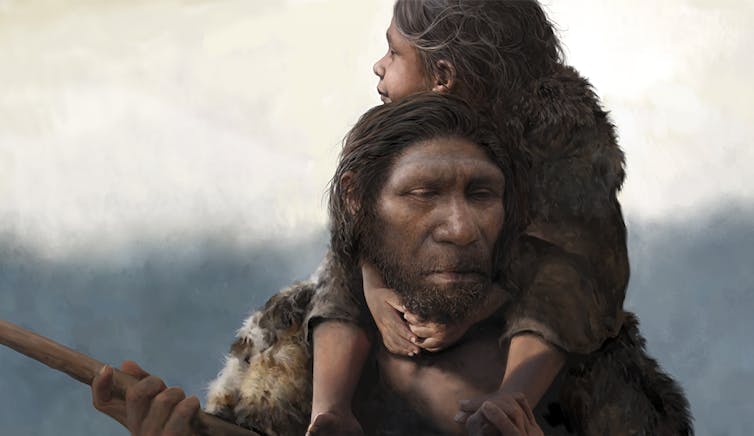
Our closest evolutionary relatives, the Neanderthals (Homo neanderthalensis), were once spread across Europe and as far east as the Altai Mountains in southern Siberia.
Yet more than 160 years since the first Neanderthal fossils were unearthed in Europe, little is known about the group size or social organisation of Neanderthal communities.
Using ancient DNA, a new study provides a snapshot of a Neanderthal community frozen in time.
With our colleagues, we show a group of Neanderthals living in the Altai foothills around 54,000 years ago consisted of perhaps 10 to 20 individuals. Many of them were closely related – including a father and his young daughter.
The Easternmost Neanderthals
The first genetic clues to Neanderthals were obtained 25 years ago from a fragment of mitochondrial DNA, which is found in cell structures called mitochondria rather than in the cell nucleus.
Subsequent mitochondrial DNA studies and genome-wide nuclear data from 18 individuals have sketched the broad brushstrokes of Neanderthal history, revealing the existence of many genetically distinct groups between about 430,000 and 40,000 years ago.
Our new study is the first to analyse ancient DNA from the teeth and bones of multiple Neanderthals who lived at around the same time. The fossils came from archaeological excavations of Okladnikov Cave in the mid-1980s and Chagyrskaya Cave since 2007.
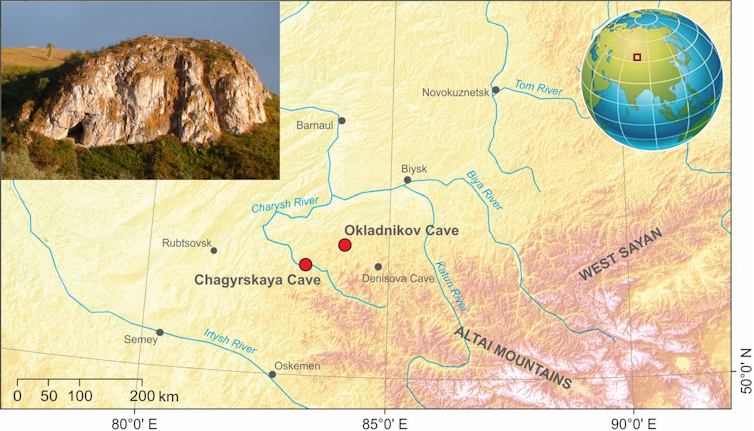
These caves were used by Neanderthals as hunting camps. The remains of animals such as bison and horses are abundant, and more than 80 Neanderthal fossils were also found in Chagyrskaya Cave – one of the largest such collections anywhere in the world.
Both sites also contain distinctive stone tools that bear a striking resemblance to artefacts found at Neanderthal sites in central and eastern Europe.
Family Ties
To paint a detailed picture of the genetic makeup and relatedness of these Neanderthals, we analysed mitochondrial DNA (which is passed down the female line), Y-chromosomes (passed from father to son) and genome-wide data (inherited from both parents) for 17 Neanderthal fossils – the most ever sequenced in a single study.
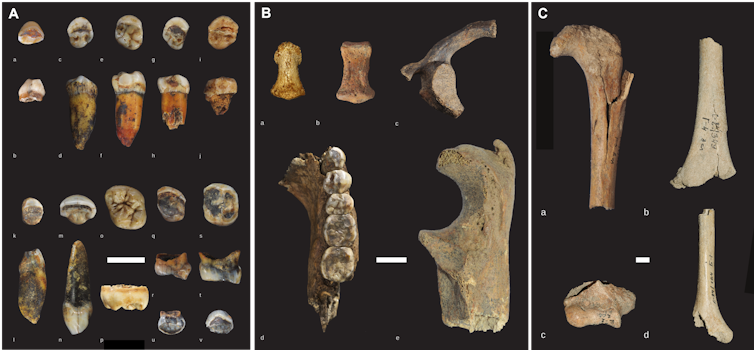
The teeth and bones came from 13 individuals: 11 from Chagyrskaya Cave and two from Okladnikov Cave. Seven of the Neanderthals were male and six were female. Eight were adults and five were children or adolescents.
Among them were the remains of a Neanderthal father and his teenage daughter, as well as a pair of second-degree relatives – a young boy and an adult female, perhaps his cousin, aunt or grandmother.
Although the nearby site of Denisova Cave was inhabited by Neanderthals from as early as 200,000 years ago, the Chagyrskaya and Okladnikov Neanderthals are more closely related to European Neanderthals than to the earlier ones at Denisova Cave.
This finding is consistent with a previous genomic study of a Chagyrskaya Neanderthal and the presence of distinctive stone tools at Chagyrskaya and Okladnikov Caves that closely resemble those found at Neanderthal sites in Europe.
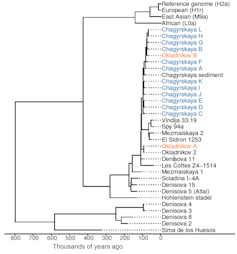
We also found the Chagyrskaya Neanderthals share several heteroplasmies – a special kind of mitochondrial DNA variant that typically persists for less than three generations.
Taken together with the evidence for their close family connections, these indicate the Chagyrskaya Neanderthals must have lived – and died – at around the same time.
On The Brink Of Extinction
Our analyses also revealed this Neanderthal community had extremely low genetic diversity – consistent with a group size of just 10 to 20 people.
This is much smaller than the genetic diversity recorded for any ancient or present-day human community, and is more like that found among endangered species at risk of extinction, such as mountain gorillas.
The Chagyrskaya Neanderthals were not a community of hermits, however. We discovered their mitochondrial DNA diversity was much higher than their Y-chromosome diversity, which can be explained by the predominance of female (rather than male) migration between Neanderthal communities.
Did these migrations involve Denisovans, who occupied Denisova Cave repeatedly from at least 250,000 years ago to around 50,000 years ago?
Denisovans are a sister group to Neanderthals and they interbred at least once. This happened around 100,000 years ago, producing a daughter from a Neanderthal mother and a Denisovan father.
Yet even though Denisovans were present at Denisova Cave at around the same time as the Neanderthals living at Chagyrskaya and Okladnikov Caves, we found no evidence for Denisovan gene flow into these Neanderthals in the 20,000 years leading up to their demise.
Kindred Spirits
In recent years, multiple lines of evidence have shown Neanderthals possessed technical skills, cognitive capabilities and symbolic behaviours as impressive as those of our ancient Homo sapiens ancestors.
Our genetic insights add a new social dimension to this picture. They provide a rare glimpse into the close-knit family structure of a Neanderthal community eking out an existence on the eastern frontier of their geographic range, close to the time when their species finally died out.![]()
Laurits Skov, Postdoctoral research associate, Max Planck Institute for Evolutionary Anthropology and Richard 'Bert' Roberts, Director, ARC Centre of Excellence for Australian Biodiversity and Heritage (CABAH), University of Wollongong
This article is republished from The Conversation under a Creative Commons license. Read the original article.
20 years in the making: witnessing the Dwoort Baal Kaat songline’s incredible return to Noongar Country
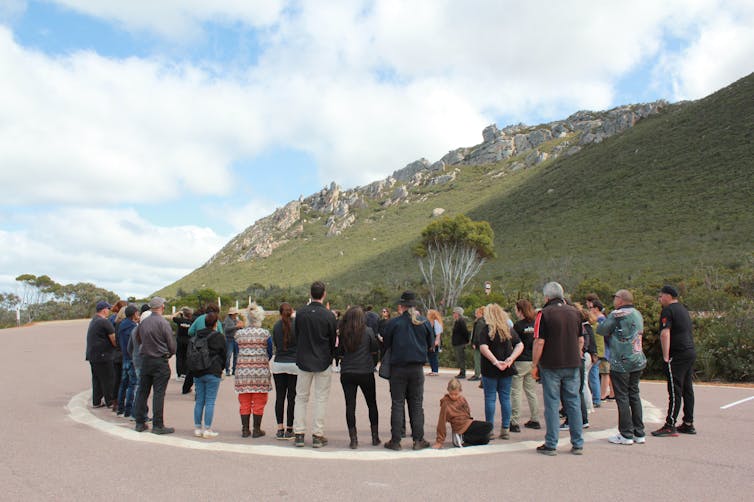
The Hopetoun Community Resource Centre is a hive of activity this sunny morning in mid-September. It is the height of the Ravensthorpe Wildflower Show, an event that attracts thousands of visitors to small agricultural towns on Western Australia’s south coast each year.
Hopetoun sits on the doorstep of the Fitzgerald River National Park, an ecological wonder and one of 35 crucial Global Biodiversity Hotspots.
The park is also a region of great cultural significance to the traditional custodians of the land, the south coast Noongar people.
This morning’s festival patrons are about to see a cultural presentation 20 years in the making. A songline that has been on a journey away from Country, to the northern hemisphere and back, to be sung in public once again by its people.
I’m a Noongar woman and a member of the Wirlomin Noongar Language and Stories organisation. The songlines criss-crossing Noongar Country connect us to our ancestors and the powerful knowledges that make us who we are.
These cultural stories are impossible to adequately render in the written word alone. The tones of human voices singing and the thrum and cadence of Country are vital parts of a songline’s impact and perseverance.
Here today the Wirlomin community is sharing the text, song and location of a story nearly lost to us.
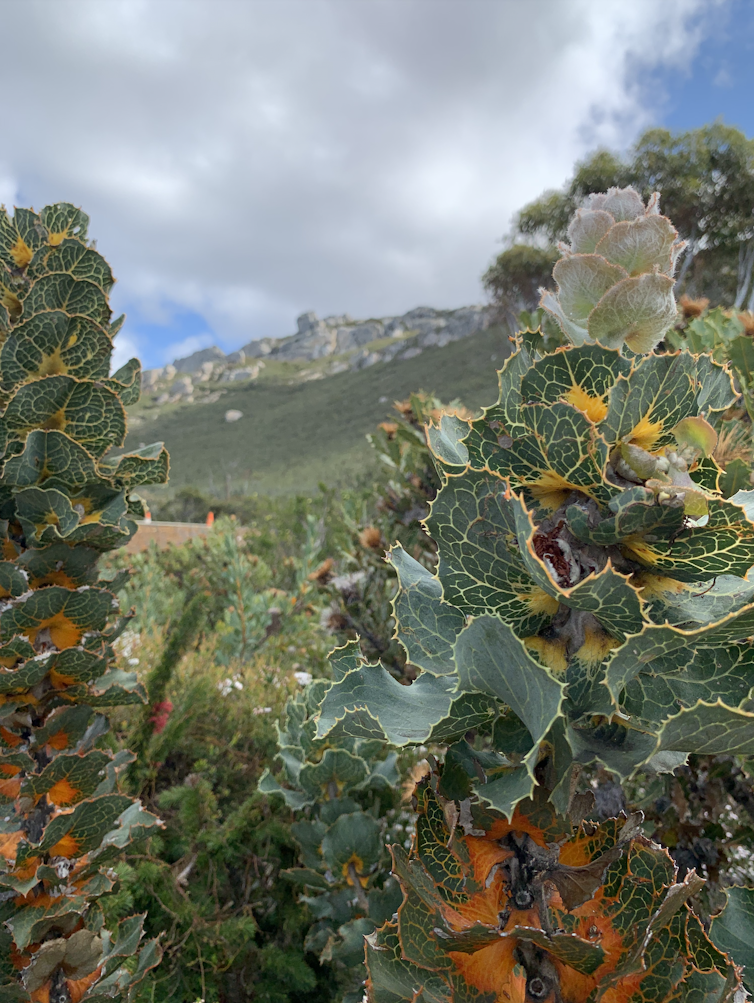
Dwoort Baal Kaat
The Songline is Dwoort Baal Kaat, a tale of hunting dogs who transform into seals, which was told by Noongar man George Nelly to American linguist Gerhardt Laves in 1931.
The story follows a Wirlomin ancestor who takes his dogs and his brother’s dogs out hunting for tucker. This hunter thinks he’ll have lots of luck with so much help, but every time the dogs take down a kwoor (wallaby), kwoka (quokka) or wetj (emu) by the time he catches up there is none left for him. He’s so hungry he sets fire to the dogs, who run away to escape him, fleeing down into the ocean.
The brother who lent his dogs is further down the coast, and he hears his dogs barking. He looks around then out toward the ocean and sees them swimming towards him. When the dogs emerge from the sea they have smooth glossy bodies, tiny ears and stumpy legs. He says “Dwoort Baal Kaat” (“Dog His Head”), then rolls the words together to say “dwoortbaalkaat”: “seal”.
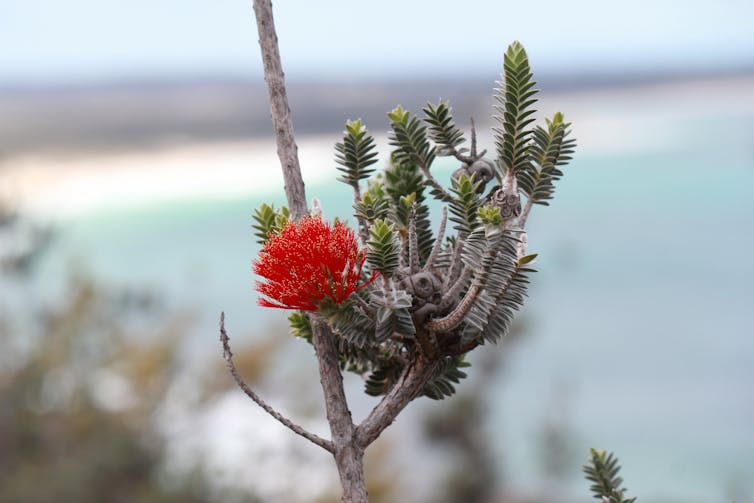
In 1931, Laves recorded south coast Noongar people speaking the Noongar language. He took these field notes back to the United States where they sat unpublished in his lifetime.
In 1985, the Laves estate returned the language documents to Australia. In 2002 the notes were given over to the descendants of those original Noongar speakers, the Wirlomin Noongar community. In 2006, the Wirlomin Noongar Language and Stories organisation was formed to oversee the consolidation and enhancement of this and other archival material.
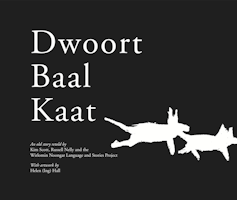
Noongar author Kim Scott and others developed the Laves language material in collaborative family workshops, where family members gathered around with pens and butcher paper to activate the stories together.
In 2013, Dwoort Baal Kaat was published in English and Noongar. But this was just the first step. The book didn’t reveal any of the songline locations nor the music associated with them.
Now, on this September morning, Scott narrates the story in front of a multimedia presentation, the public debut of a digital songlines map, following the hunter and the dogs moving across the national park.
Returned To Country
In recent years, workshops have cross-referenced the Laves material with surviving songs and stories.
Up on stage, and as Wirlomin community members move up from the audience to join him, Scott reads the last line of Dwoort Baal Kaat:
Yey, maam dwoort baalap boya nyininy kalyakoorl
Now, man dog they rock sitting/being forever
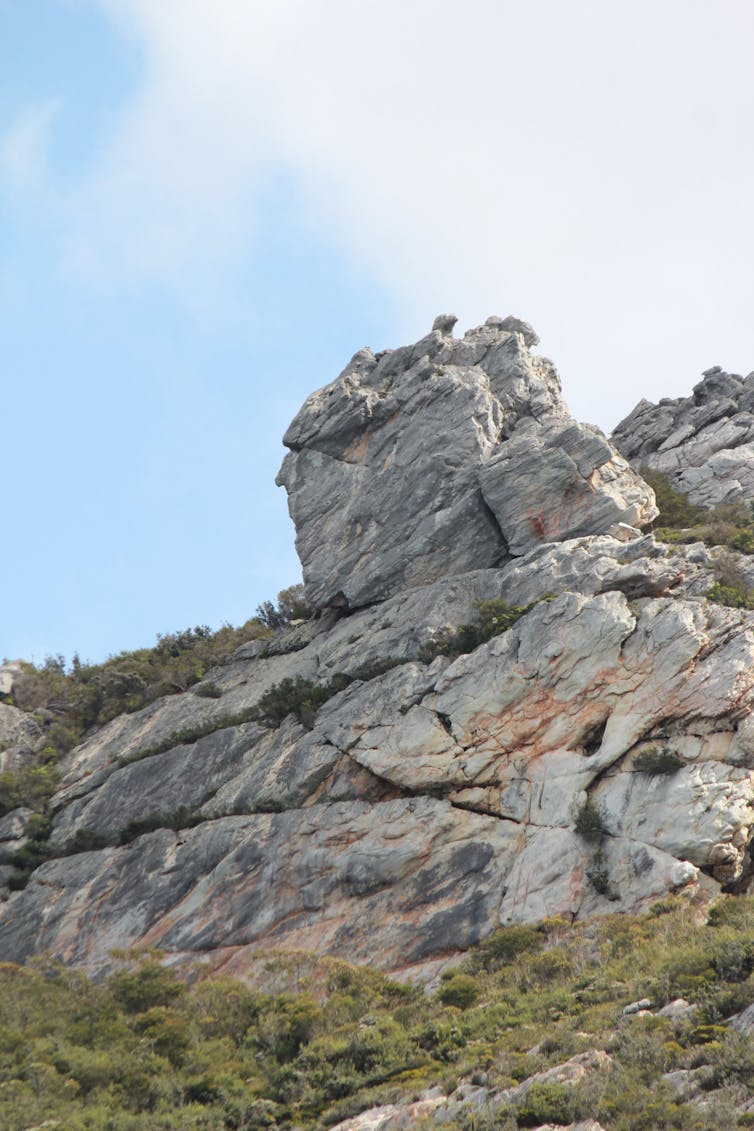
A photo of a rock formation at East Mount Barren appears on the screen. It is the head and shoulders of a giant, looking down at smaller stone figures: the brother who has turned his head to see his dogs, transformed into seals.
The Wirlomin mob on stage burst into the old song of the dogs leaping through the flames, igniting and fusing story, place, song and people in a way that hasn’t happened for a long time.
This region is infamous for massacre and overclearing. But cultural heritage has still been passed down via oral storytelling from the Elders. Now, the combination of the oral history and the return of Laves’ material means this song can once again be sung on Country.
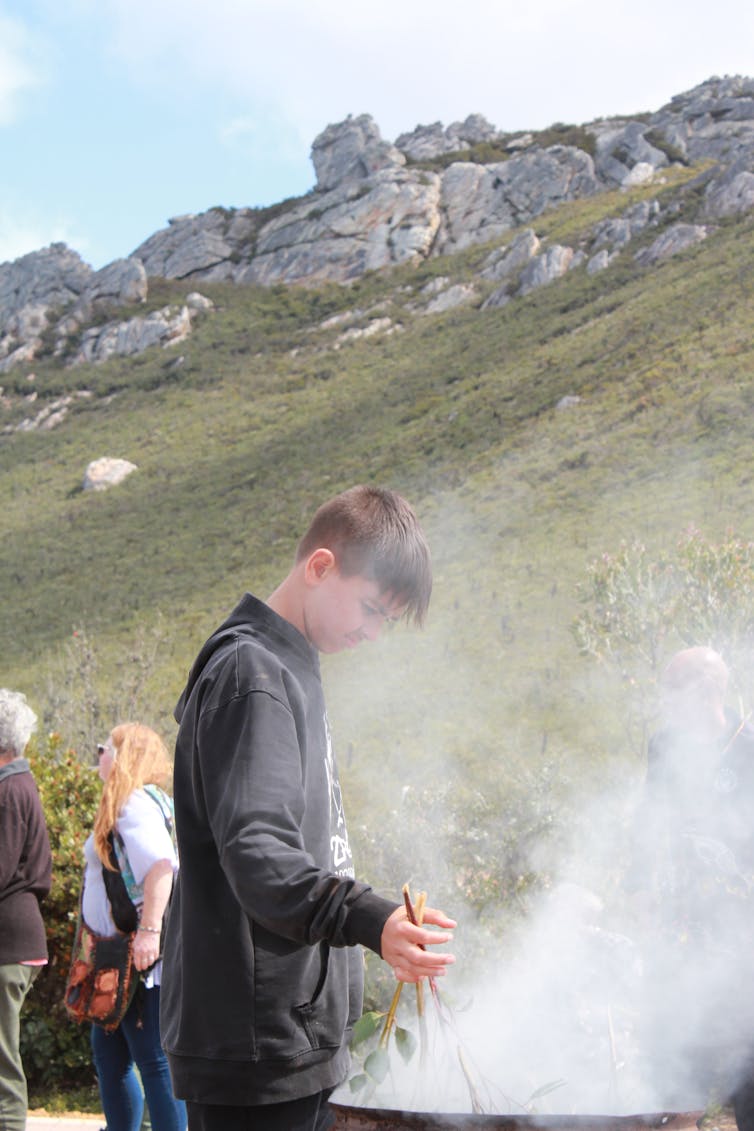
After the presentation, wildflower show guests and VIPs catch a bus with the Wirlomin mob to the carpark at East Mount Barren. The mob conduct a smoking ceremony and everyone stands in a circle of beach sand and smoke.
Looking up at the head and the seals, the Wirlomin hosts have led their audience to a place where culture, community and landscape intersect to offer a deeper sense of identity and belonging.
The singing of this songline today is just a glimpse of what the appropriate revitalisation and consolidation of Noongar culture can contribute to the wider communities of the southwest. ![]()
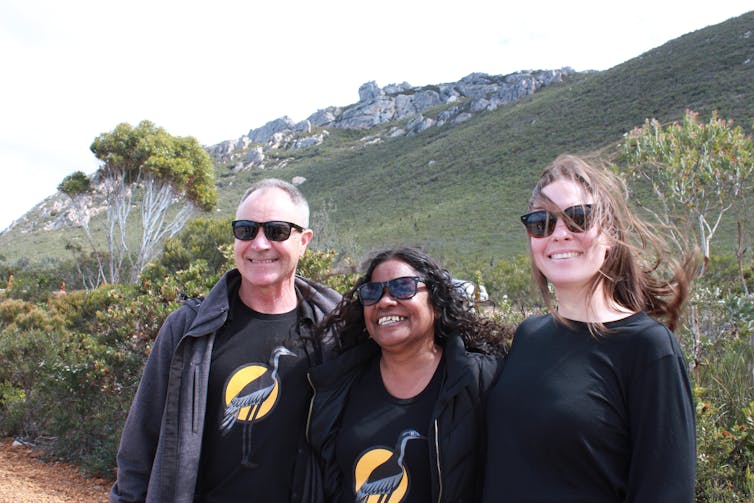
Cass Lynch, Postdoctoral research fellow, Curtin University
This article is republished from The Conversation under a Creative Commons license. Read the original article.
HBO’s ‘House of the Dragon’ was inspired by a real medieval dynastic struggle over a female ruler

In three decades of teaching medieval European history, I’ve noticed my students are especially curious about the intersection of the stories told in class and the depictions of the Middle Ages they see in movies and television.
Judged by their historical accuracy, cinematic portrayals are a mixed bag.
However, popular fantasy, unencumbered by the competing priority of “getting it right,” can, in broad strokes, reflect the values of the medieval society that inspires it.
“House of the Dragon” is one of those TV shows. A king, lacking a male heir to his throne, elevates his teenage daughter to be his named successor, and a complex dynastic drama ensues.
This storyline reflects the real obstacles facing women who aspired to exercise royal authority in medieval society.
The Queen As A Conduit To Power
George R. R. Martin, whose novels were the foundation for the HBO series “Game of Thrones,” has made no secret of his inspiration for “House of the Dragon”: the Anarchy, a two-decade period, from 1135 to 1154, when a man and a woman vied with each other for the English throne.
The story went like this: Henry I sired two dozen or more children out of wedlock. But with his queen, Matilda, he had only a daughter, the future “Empress” Matilda, and a son, William. With William’s birth, the foremost responsibility of medieval queenship was fulfilled: There would be a male heir.
Then tragedy struck. In 1120, a drunken 17-year-old William attempted a nighttime channel crossing. When his also-inebriated helmsmen hit a rock, the prince drowned.
The queen had died two years earlier, so Henry I remarried – Adeliza of Louvain – but they had no children together. The cradle sat empty and the sands in Henry I’s hourglass ran low, so he resolved that his lone legitimate child, Matilda, would have the throne as a ruling queen.

The move was unprecedented in medieval England. A queen could exert influence in her husband’s physical absence or when, after a king’s death, their son was a minor. Her role, moreover, as an intimate confidant and counselor could be consequential.
But a queen was not expected to swing a sword or lead troops into battle and forge the personal loyalties on which kingship rested, to say nothing of the misogyny inherent to medieval English society. The queen was the conduit through which power was transferred by marriage and childbirth, not its exclusive wielder.
Viserys And Henry I Share The Same Plight
A similar scenario drives the plot of “House of the Dragon.” The absolute preference in the fictional kingdom Westeros for a male ruler is expressed in the series’ opening scene.
The old king, having outlived his sons, empowers a council of nobles to choose his successor between two of his grandchildren, the cousins Rhaenys and Viserys. Rhaenys, a female, is the older of the two.
Yet the male Viserys becomes king and Rhaenys, “the queen who never was,” later ruefully concedes that this represented “the order of things.”
Once installed, however, Westeros’ new king would have understood the plight of England’s Henry I.
Aemma, Viserys’ queen, suffers stillbirths and miscarriages and produces only a daughter, Rhaenyra. A fading hope for a son is dashed when a breached birth and a brutal Caesarian section, intended to save the child, ends up killing Aemma. The boy – the desperately desired heir – doesn’t live out the day.
Sonless, Visery’s named heir is his younger brother, the debauched, sinister Daemon. When Daemon’s conduct becomes intolerable, Viserys disinherits and banishes him. Left with his young daughter Rhaenyra, he decides to make her a ruling queen, a role the girl relishes as she seeks to change “the order of things.”
Building Support For A Ruling Queen
The challenge for a medieval king, whether Henry I or the fictional Viserys, was to persuade the nobles to overcome their prejudices and not just accept but actively support a woman’s ascension to power.
Henry I pursued measures to make his daughter palatable to them. Matilda, who had married the Holy Roman Emperor Henry V in 1114, returned to England a widow in 1125. Henry I, determined to forge a sacramental bond between his daughter and England’s magnates, compelled his barons in 1127 to swear their support for her as his successor. Henry I then turned to arranging a marriage for Matilda so she could give birth to a grandson and buttress her position.
After Matilda’s nuptials with Geoffrey, count of Anjou, the barons were summoned to renew their oath to her in 1131. A son, Henry, was born two years later, and a third pledge followed. Henry I died two years later of food poisoning after eating eels, a favorite dish of his.
The durability of his arrangements for Matilda’s rise to authority was immediately tested.
Viserys in “House of the Dragon” works from a similar playbook. The worthies of Westeros vow their loyalty to Rhaenyra as royal successor. Once Rhaenyra becomes marriageable, Viserys fields a plethora of suitors for her hand. A reluctant bride, Rhaenyra finally accedes to a union in which she would “dutifully” produce a male heir but then let her heart have what it wanted.
The unfortunate result is her inability to conceive with her husband while having three sons by a lover. Her situation is further complicated by Viserys’ remarriage to the lady Alicent, who gives him sons. Dangers stalk Rhaenyra’s path to power. In Westeros, as in England, a princess is expected to guard her chastity closely until marriage and, once wed, to be monogamous and not to “sully” herself in order to ensure the legitimacy of her children – a blatant double standard when noblemen frequently had children out of wedlock.
Yet even rumors of female infidelity could threaten succession. Lineage matters. Blood binds, as evident in the streams of it running from family crest to family crest in the series’ opening credits.
War Ensues
Did these strategies work?
Not for Matilda. Stephen of Blois, a son from the marriage of Henry I’s sister Adela to a French count, aggressively registered a claim to the crown after Henry I’s death. Many English magnates conveniently forgot their oaths to Matilda, and Stephen became king.
Matilda was not without supporters – her half-brother Robert, earl of Gloucester; her husband, the count of Anjou; nobles disaffected by Stephen’s rule; and opportunists seeking personal gain from the conflict. Matilda resisted and the Anarchy ensued.

Forces supporting Matilda invaded England in 1139 but, save for a moment in 1141, she never ruled. She then focused instead on elevating her son to the crown.
Prosecution of the war ultimately passed to the young Henry. His mounting military successes jogged the barons’ memory of their past commitments, and the contending parties reached a settlement. Henry would succeed Stephen. With Stephen’s death, Henry became Henry II. England wouldn’t have another ruling queen until the ascension of Queen Mary I in 1553, nearly four centuries later.
But what of Rhaenyra?
Westeros is not 12th century England. For Martin, the author, the Anarchy does not serve to establish historical fact but is a wellspring for his creative vision. The fire-breathing dragon – that denizen of the medieval imagination – exists in Westeros. Rhaenyra’s pursuit of the throne may be fraught with difficulties, but she is a dragon-rider, and dragons were the most fearsome military asset in the kingdom.
This makes her dangerous in a way Matilda of England could hardly have conceived. Nonetheless, “House of the Dragon,” through the lens of fantasy, reflects a slice of the English medieval experience.![]()
David Routt, Adjunct Professor of History, University of Richmond
This article is republished from The Conversation under a Creative Commons license. Read the original article.
How do fishes scratch their itches? It turns out sharks are involved
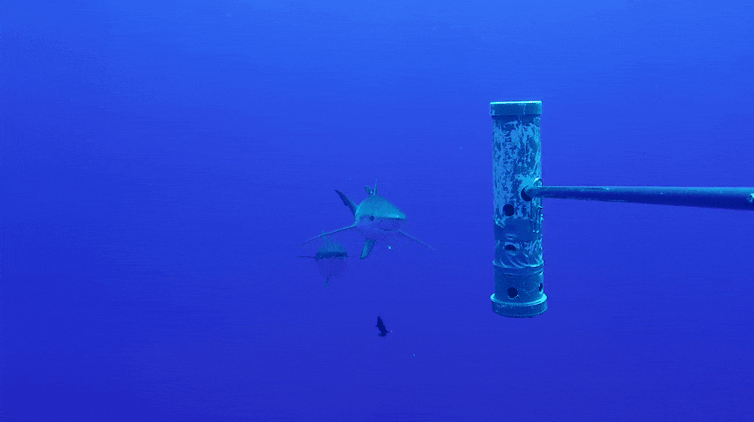
Imagine you’re a big yellowfin tuna, miles from shore out in the blue, swimming around carefree, until you start to feel a little itch near your eye. Maybe it’s just a scratch that’s healing, or maybe it’s a tiny crustacean nibbling into your skin.
What do you do? You don’t have hands to pick it off. You don’t have cleaner wrasses nearby to carefully pluck it off for you like you might on a coral reef.
While poring over thousands of hours of video showing the denizens of the open ocean going about their lives, we discovered how tunas and other fishes solve this problem. The answer might be the last thing you’d think of: sharks.
Big Fish Prefer Rubbing Shoulders With Sharks
In new research published in PLOS One, we found fishes living in the open ocean, like tunas, use sharks to scratch against.
The scratching is likely to remove parasites, dead skin, and other irritants. These fishes are hosts to a diverse array of parasites, but their environment provides them few options for removal.
Our research recorded scraping interactions among several fish and shark species across the Pacific, Indian and Atlantic oceans. We found fish preferred to scrape on sharks rather than on other fish. Size also mattered, with smaller fish being less likely to scrape on bigger sharks, perhaps due to the risk of being eaten.
Shark skin is made up of small tooth-like structures called dermal denticles. It feels like sandpaper (and in pre-industrial times it was used for that purpose), making it a particularly suitable surface against which to scratch.
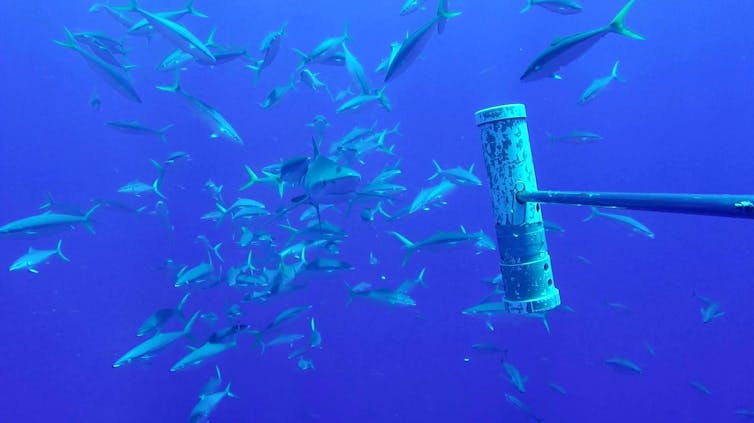
We found fishes tended to scratch their head and sides more than other parts of their body. This is where many of the areas most heavily impacted by parasite damage are found, including the eyes, nostrils, gills, and the lateral line system down the sides of a fish’s body.
We also found fish species differed in the way they scraped. Tunas were quite orderly, lining up behind the shark and taking turns to brush against the tail. Rainbow runners were unruly, forming a school around the back half of the shark and darting out in turns to bump against its body.
Using Underwater Cameras To Spy On Ocean Wildlife
We discovered this behaviour while analysing thousands of hours of underwater video taken with baited camera systems left to drift at sea. We reviewed the footage, and identified, counted, and measured all individuals we observed.
The data we gathered is important to determine population trends. But while watching these videos, we also noticed some unusual behaviours.
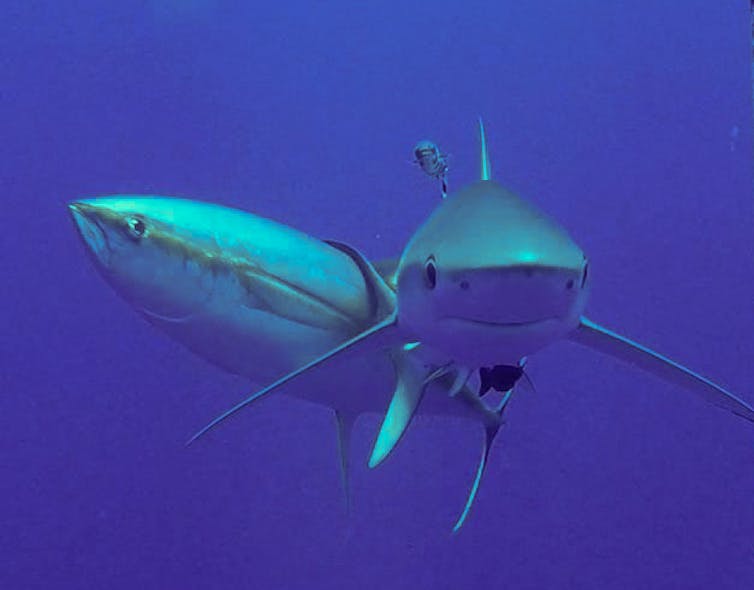
First we saw a huge yellowfin tuna approaching a silky shark from behind, gently rubbing against its tail before cruising off. Before long saw a similar interaction between another yellowfin and another silky shark.
Eventually, we observed similar interactions between several different fish and shark species from all corners of the globe, and logged the details of each interaction.
Why Scraping Matters: Healthy Oceans Need Healthy Shark Populations
The open ocean is the largest habitat on the planet, yet it is challenging to study.
As a result, there are very few direct observations of the natural behaviour of animals in the open ocean. Interactions between these animals are not only intriguing because they may be new to us but also because of their possible implications.
Parasite removal has clear fitness benefits, and fitter animals are more likely to reproduce and pass on their genes to the next generation. These fishes may therefore be deriving a benefit from scraping against sharks.
This raises the question of what would happen if shark numbers become too low for fishes to find their scratching posts. Would there be a net loss of fitness in these fishes?
This is an important question given the rapid decline of shark populations in the global ocean. Some species have declined by up to 92% off the Queensland coast of Australia.
The continued decline of shark populations could have knock-on effects through the loss of relationships such as those we describe.
We only observed scraping in remote regions with relatively healthy populations of sharks and large tunas, both of which are heavily exploited in other areas. Remote locations offer a window into the functioning of intact ecosystems and the weird and wild things going on in the ocean that we are still yet to discover.
Marine protected areas have been shown to conserve behaviours in sharks and fishes. The introduction of more of these areas could help restore and preserve these behaviours.
What’s Next?
We will continue sampling offshore waters and remote regions.
This work may reveal other species involved in these interactions or other intriguing behaviours with conservation implications. __![]()
Christopher D H Thompson, Research Fellow, Marine Futures Lab, The University of Western Australia and Jessica Meeuwig, Professor & Director, Marine Futures Lab, The University of Western Australia
This article is republished from The Conversation under a Creative Commons license. Read the original article.
Histoire Du Tango For Flute And Guitar By Astor Piazzolla
Freshie Masters Carnival - Saturday 19 November

Seniors And Teens Bridge The Digital Divide
COTA Australia Announces Appointment Of New Chief Executive

Scams Awareness Week 2022
- Scamwatch Report Form: If you’ve come across a scam you can report it here.
- Scamwatch reporting statistics: Provides up-to-date statistics on scams reported by Australians.
- Targeting Scams Reports: Our yearly report on scam trends and statistics.
- Helping a friend or family member who is a victim to a scam: Useful information if someone close to you has been scammed.
- Be Safe, Be Alert Online: Information on organisations who may be able to help when someone has been scammed.
- Where else to get help: Other organisations who might be able to help when someone has fallen victim to a scam.
- Little Black Book of Scams: Information on identifying a scam (available digitally in a range of languages).
- Protect yourself against scams
- Online shopping and banking
- Helpful apps for your smart device
- How to use home smart technology
- Selling safely online

AvPals Training Term 4 2022 At Newport
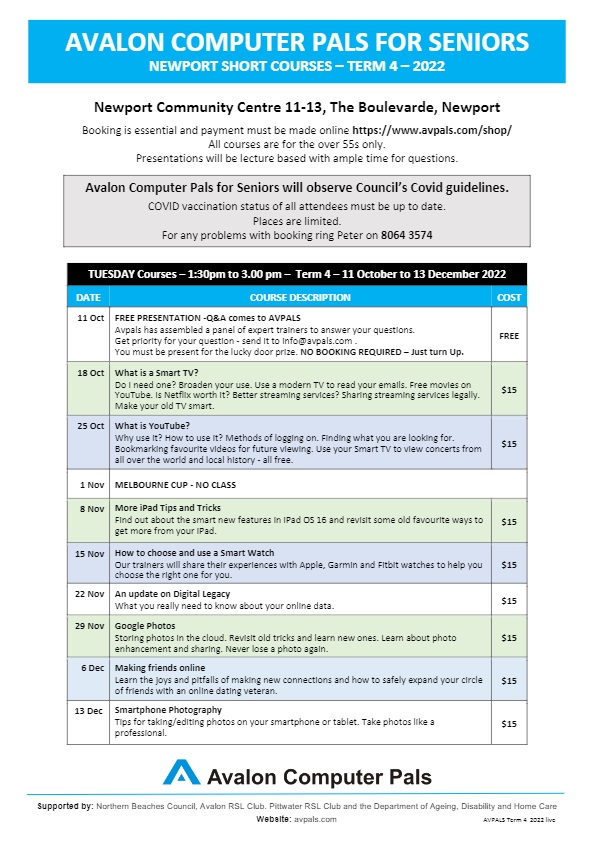
The air we breathe: how I have been observing atmospheric change through art and science

Overlooking the Bass Strait on the remote and windy northwest tip of Lutruwita/Tasmania is the Kennaook/Cape Grim Baseline Air Pollution Station.
The air that arrives at Kennaook has travelled thousands of kilometres. It hasn’t touched land for many days, weeks or even months. It is said to be some of the cleanest in the world.
The powerful westerly winds – the “roaring forties” – carry air masses across the Southern Ocean, reaching land well-mixed and uncontaminated by recent human activity.
Considered “baseline”, this air is representative of true background atmospheric conditions, and grants us insight into the driving forces behind human-driven climate change.
When I arrived at Kennaook in mid-April, it was late afternoon and a storm was brewing. The wind was blowing from the southwest at a steady 54 kilometres an hour – baseline conditions – and the carbon dioxide levels were 413.5 parts per million.
More than 40 years ago, scientists warned CO₂ levels like these would create catastrophic and irreversible environmental damage and species collapse.
I climbed the stairs to the top deck, set up my camera and tripod, and started filming.
Making Invisible Visible
Much of my work has been about the ongoing human and environmental harm caused by uranium mining and atomic testing programs. The invisibility of both the harm and the substances has continued to challenge me creatively.
How do you make visible the invisible? How do you communicate imperceptible change?
Discovering there is a place that captures, archives and measures the air and these imperceptible changes presented me with an opportunity to do just that.
I have since based my creative-practice PhD on the work done at Kennaook/Cape Grim, working alongside the scientists from the Bureau of Meteorology and the CSIRO.
As an artist whose projects have a documentary basis, I use photography, video and sound to respond to place through story, and expand out from there to go beyond what is simply before me.
I believe art has the capacity to reach us in ways other forms of information cannot, revealing the imperceptible hidden in the everyday. In this case: what stories are we breathing?
Sarah Sentilles wrote in The Griffith Review that art shows us “the world is made and can be unmade and remade”.
In troubled times, we are collectively searching for ways to unmake and remake the world around us. Art is one way to unlock that capacity.
The Present Emergency
For this project, titled The Smallest Measure, I have taken an intentionally slow, observational approach, using “slow cinema” techniques to respond to the slow science carried out on site and to the “slow violence” of climate change.
Slow cinema, says writer Matthew Flanagan, “compels us to retreat from a culture of speed […] and physically attune to a more deliberate rhythm”.
Slow violence is described by environmental literature professor Rob Nixon as “a violence that occurs gradually and out of sight […] an attritional violence that is typically not viewed as violence at all."
This kind of violence is so embedded within daily life, connected to commonplace activities and daily rituals we don’t see it at all, let alone regard it as an emergency. In using slow aesthetic techniques, myself and the viewer use our own capacities to observe and pay attention to the damage within the everyday.
On the top deck of the station, as I watch the storm roll across the ocean, I wonder where the air has come from, who else has breathed it, what is inside of it and how long it has been on its journey.
While at Kennaook, I film and record the landscape and science working together, in constant conversation.
Inside the station, the scientists and technicians are at work. A day is spent cleaning one of the instruments, tubes are flushed and reflushed, tests are run. All the while the air is flowing in from the outside through pipes and into different machines, registering numbers and building graphs, telling us what gases are contained within it and which direction it may have come from.
If there is a sudden spike, it has come from a car outside the station. If it is a more consistent patch of dirty contaminants, the air is probably coming from the north, from Melbourne.
Meanwhile, outside the station, the landscape is working too. The ocean currents ebb and flow, the waves crash onto the rocks below, the wind keeps on blowing, making patterns across the grass, sometimes with such force it is destabilising.
My work doesn’t show dramatic scenes or spectacularly catastrophic events. Instead, through slow visual, aural and scientific processes of attention and observation it shows the emergency is already here. We are entangled within it.
If we really want to, we have the capacity to respond. ![]()
Jessie Boylan, PhD student, RMIT University
This article is republished from The Conversation under a Creative Commons license. Read the original article.
Tobias Breider & Grace Kim Perform Forgotten Romance

Bilgola Probus Club Commences

Keep On Dancing Is What The Science Says!
- Flexibility
- Agility
- Mobility
- Strength
- Stability

Home Instead Sydney North Shore & Northern Beaches
Sharkies Masters Oldest Member Represents Australia In NZ Game
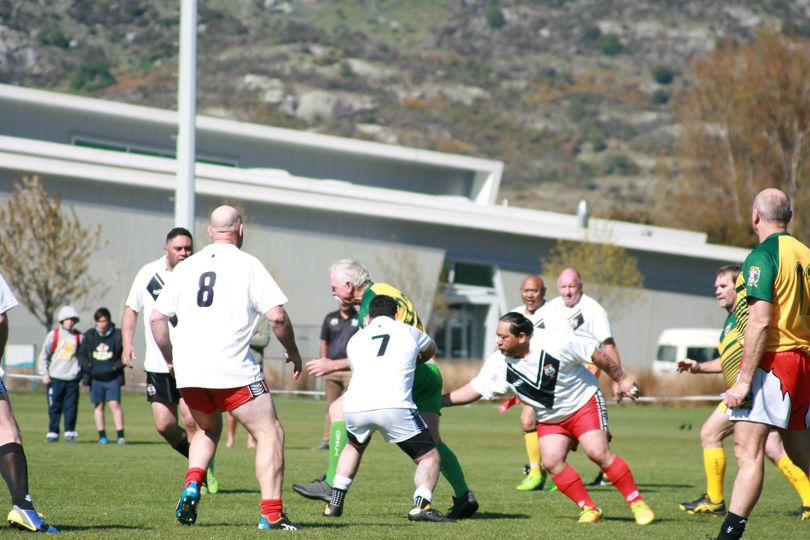
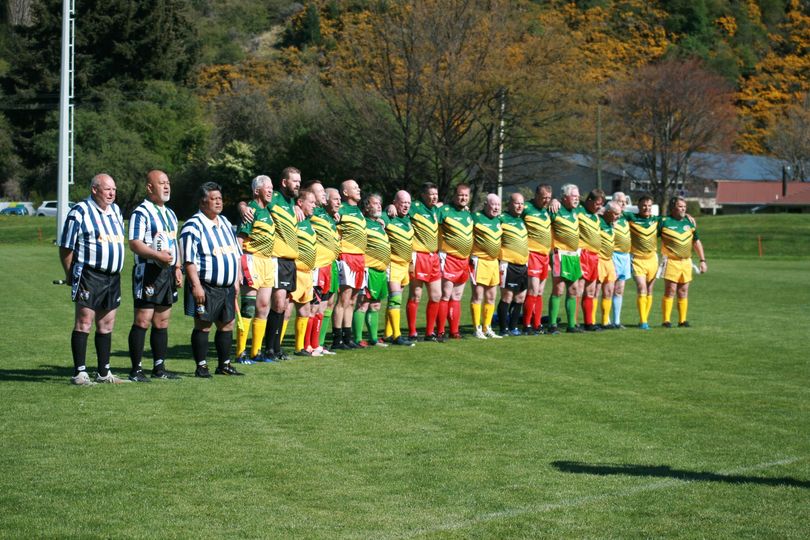
HammondCare Opens Respite Centre At Terrey Hills
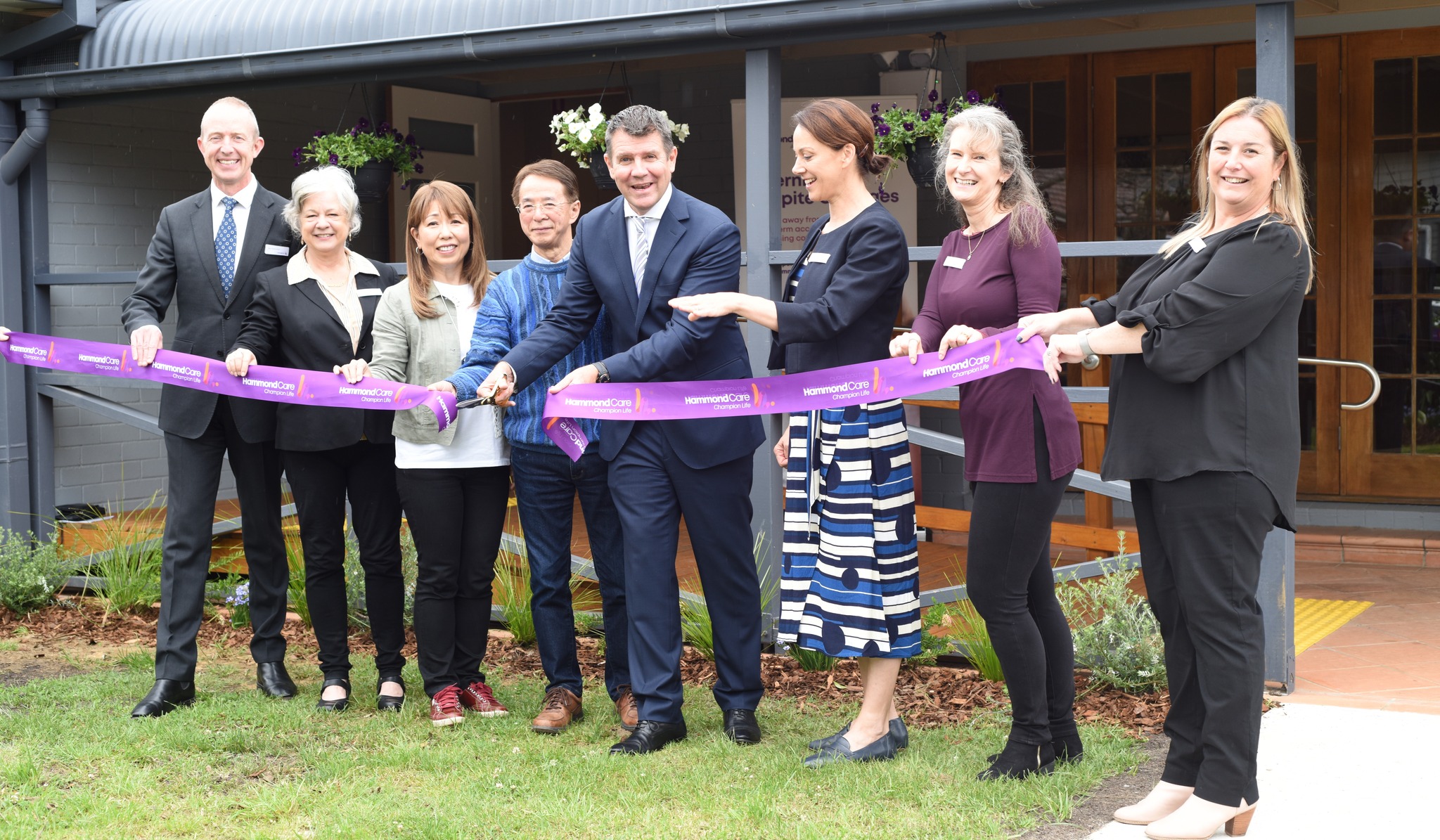
Have Your Say On Strengthening Quality In Aged Care
$25 Million In Funding For Australian Dementia, Ageing And Aged Care Research
Brain Discovery Holds Key To Boosting Body's Ability To Fight Alzheimer's, MS
Alzheimer’s disease: surprising new theory about what might cause it
Andrea Sturchio, Karolinska Institutet; Kariem Ezzat, Karolinska Institutet, and Samir EL Andaloussi, Karolinska InstitutetIn 1906, Alois Alzheimer, a psychiatrist and neuroanatomist, reported “a peculiar severe disease process of the cerebral cortex” to a gathering of psychiatrists in Tübingen, Germany. The case was a 50-year-old woman who suffered from memory loss, delusions, hallucinations, aggression and confusion – all of which worsened until her untimely death five years later.
In the autopsy, Alzheimer noticed distinctive plaques on her brain. These plaques – clumps of amyloid-beta protein – are still considered to be the cause of Alzheimer’s disease.
However, this theory has two major problems. First, it does not explain why many subjects (even old people) have plaques in their brains in the absence of any neurological symptoms, such as memory loss. Second, clinical trials for drugs that reduce these plaques have been unsuccessful – with one recent exception, but more of that later.
When amyloid-beta protein accumulates in the form of plaques (insoluble clumps), the original soluble form of the protein, which performs important functions in the brain, is consumed and lost. Some studies have shown that reduced levels of soluble amyloid-beta – called amyloid-beta 42 – have led to patients having worse clinical outcomes.
In a recent study, published in the Journal of Alzheimer’s Disease, we investigated whether it’s the amount of plaques in the brain or the amount of amyloid-beta 42 remaining that is more important for Alzheimer’s disease progression.
To answer this question, we studied data on a group of people who have a rare inherited gene mutation that puts them at high risk of developing Alzheimer’s disease. The participants were from the Dominantly Inherited Alzheimer Network cohort study.
We found that the depletion of amyloid-beta 42 (the functional version of amyloid-beta) is more harmful than the amount of plaques (the insoluble clumps of amyloid beta).
Participants had an average of three years follow-up and we found that those with high levels of amyloid-beta 42 in their cerebrospinal fluid (the liquid around the brain and spinal cord) were protected and their cognition was preserved over the study period. This chimes with many studies that showed important functions of amyloid-beta 42 in memory and cognition.
It is also relevant because we studied people with the genetic mutation who develop Alzheimer’s disease, a group that is considered to provide the strongest evidence supporting the idea that amyloid-beta plaques are harmful. However, even in this group, those with higher cerebronspinal fluid (CSF) levels of amyloid-beta 42 remained cognitively normal regardless of the amount of plaques in their brains.
It is also worth mentioning that in some rare, inherited forms of Alzheimer’s disease – for example, in carriers of the so-called Osaka gene mutation or Arctic mutation – people can develop dementia having low levels of amyloid-beta 42 and no detectable plaques. This suggests that plaques aren’t the cause of their dementia, but low levels of amyloid-beta 42 might be.
Lecanemab – The One Recent Exception
How will our findings affect drug development and clinical trials for Alzheimer’s disease? Until the recent trial with lecanemab, an antibody drug that reduces plaques, all the drug trials in Alzheimer’s disease have failed.
Some drugs were designed to reduce the levels of amyloid-beta 42, based on the rationale that if levels of the normal protein are reduced, patients will accumulate fewer plaques. Unfortunately, these drugs often made the patient’s condition worse.
Lecanemab was recently reported to have a small but significant effect in reducing cognitive decline. According to previous studies, this drug increases the levels of amyloid-beta 42 in the CSF. This is, again, in line with our hypothesis, namely that the increase of the normal amyloid protein can be beneficial.
We will know more when the results of the lecanemab trial are published. At the moment, all we have is a press release from the makers of the drug.
We think that it will be important for future trials to focus on the levels of amyloid-beta 42, and whether it is beneficial to increase and restore its levels to normal values instead of targeting it for removal. This could be achieved using proteins similar to amyloid-beta 42 – so-called “protein analogues” – but that clump together less than the natural ones.
This active protein replacement approach might become a promising new avenue of treatment for Alzheimer’s and other protein aggregation diseases, such as Parkinson’s and motor neuron disease.![]()
Andrea Sturchio, MD, PhD Student, Clinical Neuroscience, Karolinska Institutet; Kariem Ezzat, Research Scientist, Laboratory Medicine, Karolinska Institutet, and Samir EL Andaloussi, Professor, Laboratory Medicine, Karolinska Institutet
This article is republished from The Conversation under a Creative Commons license. Read the original article.
Aboriginal Languages Revitalised In NSW Schools
- Content is now available in two language pathways: the Language Revival pathway for students with no prior learning, and the First Language pathway for students who use the language at home. It is the first time in the NSW Curriculum, that students whose first language is an Aboriginal Language or Torres Strait Islander Language, will have the opportunity to continue their language learning at school.
- Students develop communication skills in an Aboriginal Language and understand the relationships between language, Country and culture.
- Students learn about how languages are built, and techniques used by Aboriginal Language communities to do this.
- Students learn about how Aboriginal languages are being revived, maintained, and strengthened.
- New evidence-based support materials and resources are available on the Digital Curriculum to assist schools and teachers to implement the syllabus.
NSW Closing The Gap Commitments: State-First Report On Aboriginal Expenditure
Blueprint to tackle violence against women unveiled but detailed Indigenous plan still to come
Michelle Grattan, University of CanberraA blueprint developed by federal and state governments to counter violence against women and children includes the ambitious goal of eliminating gender-based violence within one generation.
But a proposed standalone plan for dealing with violence against Indigenous women, which is much more prevalent than in the general community, is yet to be developed. No date is set for its release.
The National Plan to End Violence against Women and Children 2022 to 2032, put out on Monday by the Minister for Women Katy Gallagher and the Minister for Social Services Amanda Rishworth, describes violence against women and children as “a problem of epidemic proportions in Australia”.
One in three women has experienced physical violence since age 15; the figure for sexual violence is one in five. A woman is killed by a current or former intimate partner every ten days.
Indigenous women are 34 times more likely to be hospitalised due to violence than non-Indigenous women, report three times as many incidents of sexual violence, and are more likely to be killed due to assault.
The national plan, which covers the four areas of prevention, early intervention, response, and recovery and healing, focuses on
promoting gender equality and combatting other forms of discrimination that contribute to this violence
changing attitudes in order to prevent violence
embedding effective early intervention measures
building the frontline sector workforce and ensuring women and children have access to support wherever they live
making sure tailored and culturally-safe support is there for all women and children and
the need for person-centred services and better coordination and integration across systems.
There will be two five-year action plans. They will include specific commitments by governments and investments in the various areas.
“In the longer term, a standalone First Nations National Plan will be developed to address the unacceptably high rates of violence Aboriginal and Torres Strait Islander women and children experience,” the plan says.
“This violence happens alongside the multiple, intersecting and layered forms of discrimination and disadvantage affecting the safety of Aboriginal and Torres Strait Islander families and communities.
"A deliverable under this National Plan is a dedicated action plan for Aboriginal and Torres Strait Islander family safety, which will provide the foundations for the future standalone First Nations National Plan.”
In the last few years, during the previous plan, attitudes in Australia seem to have improved but not the outcomes.
“Since the 2010-2022 National Plan, fewer Australians hold attitudes that support violence against women, and most Australians support gender equality. Women report that they are increasingly feeling safer in private and in community settings.
"Despite this progress, the 2010-2022 National Plan did not succeed in its goal of reducing violence against women and children. The prevalence of violence against women and children has not significantly decreased during the last 12 years and reported rates of sexual assault continue to rise.
"While increases in reporting may be due to women feeling more supported to come forward and seek help, we must reduce the prevalence.”
With advancing gender equality central to solving the problem, the plan says, “Everyone has a meaningful role to play – as families, friends, work colleagues, employers, businesses, sporting organisations, media, educational institutions, service providers, community organisations, service systems and governments”.
Rishworth said: “Current rates of family, domestic and sexual violence are unacceptable. We want to make these changes now so the next generation of women and children can live in a society free from violence.”![]()
Michelle Grattan, Professorial Fellow, University of Canberra
This article is republished from The Conversation under a Creative Commons license. Read the original article.
A new national plan aims to end violence against women and children ‘in one generation’. Can it succeed?

The federal Labor government made delivering on its promises a core platform of the 2022 election campaign. On Monday, one key national policy was delivered – with the official launch of the next ten-year National Plan to End Violence Against Women and Children (2022 to 2032).
The national plan is an important policy that sets the priorities for continued action and investment to address gender-based violence. It represents a shared commitment across all levels of government to issues such as prevention, early intervention, responses to victim-survivors and perpetrators, as well as recovery and healing.
Important Strengths
There are several important areas of improvement in this second ten-year national plan.
Among its key principles are “advancing gender equality” and “closing the gap”. There is a welcome acknowledgement of the role that deeply embedded problems – such as women’s inequality and the ongoing impacts of colonisation – have in shaping violence in our society. There is also a commitment to a specific set of actions addressing Aboriginal and Torres Strait Islander women’s experiences of violence under a separate action plan.
A further key principle is “centring victim-survivors”, and ensuring responses are “trauma informed”. This is a significant development for national policy addressing gender-based violence. Listening to the experiences of victim-survivors is vital – as is ensuring our laws, institutions and support services do not add to the harm already done.
Both prevention, and the important role of working with men and boys, receive a much needed greater emphasis in the new plan. It takes clear direction from our national framework for preventing violence against women, and highlights the role we all have – including men – in addressing gender inequality and gender-based violence.
This plan also includes much greater emphasis on intersectionality. This refers to recognising and addressing the multiple inequalities that individuals face such as by gender, race, Aboriginality, sexuality, gender diversity, and ability. There is an important and welcome inclusion of trans women in the national plan, and an acknowledgement that both cisgenderism and heteronormativity are related to sexism, and reinforce violence against people of all genders and sexualities.
There is a vital emphasis on multi-sector approaches and workforce development to support the work of the national plan. These include engaging across government and the community with business, sporting organisations, educational institutions media and others over the next ten years. Building capacity across the community to better respond to, and prevent, violence against women is key to the success of the plan.
Key Weaknesses
While the national plan aims for an Australia free of “gender-based violence” – much of the plan actually focuses on domestic, family and sexual violence. Other forms of violence that are disproportionately directed at women and girls receive little attention – such as online forms of harassment and abuse, labour exploitation, sexual exploitation, and abuse of children.
The plan makes little mention of the challenges faced in the Federal Court and family law in responding to domestic, family and sexual violence in the context of deciding on parenting matters. There are well documented injustices occurring in this setting – and it would be a lost opportunity if the national plan did not seek to correct these.
There are commitments made under the new plan to evaluate and measure its outcomes. But the details are vague, including the scope given to the incoming family, domestic and sexual violence commissioner to report on these measures.
There is a lot of work for governments to do under this plan – it will be important to ensure a rigorous, transparent and independent approach to monitoring progress.
Funding is always a key issue in policy – it remains unclear whether funding commitments made during the election campaign and under the previous government will be confirmed in the forthcoming federal budget. The plan will also need to be backed by proper funding if it is to end violence against women “in one generation”.
The plan commits to three more specific “action” plans. Two of these are separate five-year action plans that will outline specific activities under the national plan. The first of these is due to be released in 2023. A third is a dedicated Aboriginal and Torres Strait Islander Action Plan. It is in the implementation of these action plans that there will be opportunity to ensure some of the potential gaps are filled in.
Where To Next?
Our national statistics show that since the age of 15,
- 1 in 2 Australian women have experienced sexual harassment
- 1 in 4 women have experienced emotional abuse from a partner
- 1 in 6 have experienced physical partner abuse
- 1 in 5 have experienced sexual violence.
The next National Plan to End Violence Against Women and Children is vital for setting the stage. But its real impact will be seen through its implementation across the three action plans that are yet to lay out the details of activity under the plan.
Addressing and ultimately preventing violence against women and children must continue to be a national policy priority. We have to ensure all Australian governments are held to account for funding and delivery of actions under the national plan if we are truly to see this violence end in one generation.
If this article has raised issues for you, or if you’re concerned about someone you know, call 1800RESPECT on 1800 737 732. In immediate danger, call 000.
Correction: this article originally said the national plan was 2022-2023. It has been corrected to 2022-2032.![]()
Anastasia Powell, Associate Professor, Criminology and Justice Studies, RMIT University
This article is republished from The Conversation under a Creative Commons license. Read the original article.
The power of yindyamarra: how we can bring respect to Australian democracy
Stan Grant, Charles Sturt University and Jack Jacobs, Charles Sturt UniversityThis is a piece by Stan Grant, Professor of Indigenous Belonging at Charles Sturt University, and Jack Jacobs, Research Fellow at Charles Sturt University, following the launch of the Yindyamarra Pledge for democracy: a call to reimagine Australian democracy.
Democracy is under siege.
In every corner of the world, it faces external and domestic threats that challenge its standing relative to alternative political systems.
China rises, an authoritarian power to threaten the West.
Russia invades Ukraine, its democratic neighbour, as the West rallies in support.
Autocracy is also on the rise within democracies. The United States, Brazil, United Kingdom, India and several European democracies are – or have recently been – led by populists fuelled by the discontent of the dispossessed: those left behind by markets that have for decades prioritised profits over people.
All this is inflamed by tribalism and a public debate deranged by the worst aspects of social media.
Not long ago, political scientist Francis Fukuyama declared liberal democracy the “end of history”.
What went wrong?
The Legacy Of History And The Myth Of ‘Progress’
One place to look for an explanation is in history, in the Enlightenment myth of “progress” that has shaped our world since the 18th century.
From the French Revolution of 1789 to the invasion of Iraq in 2003, many philosophical liberals have been motivated by the idea that history has a forward movement: that human societies, though infinitely complex and diverse, are to be experimented on and redesigned according to rational, liberal principles.
This “illusion of destiny” – to invoke a striking phrase from Harvard University philosopher and economist Amartya Sen – has left tragedy in its wake.
Colonialism And Coercive Liberalism
Perhaps the most pernicious form of “progress” myth has been colonialism.
Throughout the 16th, 17th, 18th and 19th centuries, European powers struggled to subjugate once free peoples in Australia, the Americas, Asia, Africa and the Pacific.
In her recent book, Legacy of Violence, Harvard historian Caroline Elkins reminds us that in the British case, liberalism was used as a coercive force:
[…] violence was inherent to liberalism. It resided in liberalism’s reformism, its claims to modernity, its promises of freedom, and its notion of the law – exactly the opposite places where one normally associates violence.
In places like Australia and India – from where these authors hail, respectively – the British promised freedom but delivered submission.
Speaking Back To Liberalism
What are we to do with liberal democracy, a tradition that makes a virtue of freedom yet has been imposed down the barrel of a gun?
To the colonised millions of the world, liberalism remains captured by Whiteness.
These people are speaking back to liberalism.

They have not always spoken the language of liberalism – they have their own traditions of tolerance, dignity, sympathy and respect – but have brought a powerful moral force to liberalism.
Edmund Burke, the 18th-century philosopher-statesman of Irish Catholic heritage, spoke back to liberalism when he impeached Warren Hastings, governor of Bengal, for betraying liberal ideals through colonialism in India.
Mahatma Gandhi, writing a century later in Hind Swaraj, spoke back to liberalism when he called on the English to honour their “own scriptures” and respect Indian freedom.
W.E.B. Du Bois spoke back to liberalism when he told a UN Peace Conference after the second world war that the West had “conquered Germany […] but not their ideas” by keeping illiberal practices alive through colonialism in Africa.
These people shamed liberalism.
Rosa Parks refused to sit in the back of a bus and inspired a movement.
Powerful voices like Martin Luther King junior may have appealed to liberalism’s dream of character over colour, but he had no illusions about an America that he had also damned to hell.
In Australia, Yorta Yorta man William Cooper sent a petition to King George VI to remind him of his moral duty to a people whose lands were “expropriated” by the Crown and whom the Crown denied legal status. He called for black seats in parliament to “prevent the extinction of the Aboriginal race”.
And Pearl Gambayani Gibbs helped lead a day of mourning in 1938, proclaiming: “I am more proud of my Aboriginal blood than of my white blood”.
These figures implore us to remember that liberal democracy is but one way of living and being.
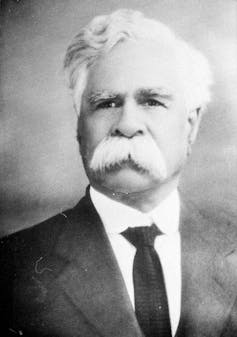
Yindyamarra
Wiradjuri people have our own philosophy, yindyamarra. It defies simple translation but it grounds respect in all we do.
How do we bring respect – yindyamarra – to Australian democracy? Is our liberalism even capable of respecting the sovereignty never ceded of First Nations peoples?
Australian liberalism has passed from extermination to exclusion to assimilation but has stopped short of recognition.
After two centuries of broken hearts and shattered dreams, it is little wonder hope can appear delusional.
As Munanjahli and South Sea Island writer and scholar Chelsea Watego has said: “Hope is as passive as the social world we occupy insists we have to be”.
Hope, or its absence, has been an enduring theme in talking back to history and political liberalism. Du Bois spoke of “a hope not hopeless but unhopeful”.
A constitutionally enshrined First Nations Voice offers its own version of what Noel Pearson has spoken of as radical hope.
Proponents of the Voice say it is a pathway to justice – to truth and treaty.
Political philosopher Duncan Ivison says it “prefigures a possible refounding of Australia”.
But its modesty – a voice not a veto – risks losing faith with First Nations people. Prime Minister Anthony Albanese has already said it is a voice “nothing more, nothing less”.
He says the parliament will set the composition of the Voice.
That begs the question: can the parliament meet the urgency of the demands of Aboriginal and Torres Strait Islander peoples?
The challenge of the Constitutional Voice is to honour the unending struggle of those Aboriginal and Torres Strait Islander champions who have sought to prise open the locked door of Australian democracy.
With liberal democracy struggling under the weight of its racist and violent history, now is a time for our voices to add more weight to the scales: to demand liberal democracy is responsible, accountable, and fit for the 21st century.
Yindyamarra is a Wiradjuri voice; a voice for justice.
It is a voice inspired by Wiradjuri elders including my father, Dr Uncle Stan Grant Snr, whose work has helped a new generation to speak Wiradjuri and speak back to power.
Yindyamarra is his gift to me, his son.
Yindyamarra winhanganha: calls us to build a world of respect grounded in our knowledge and being in a world worth living in
Yindyamarra is an antidote to Western nihilism and the worst of Western liberalism.
Yindyamarra is my father’s Wiradjuri hope; a hope to be earned.
Yindyamarra dares this nation to build a democracy worthy of that hope.![]()
Stan Grant, Vice Chancellors Chair Australian/Indigenous Belonging, Charles Sturt University and Jack Jacobs, Research Fellow, Charles Sturt University
This article is republished from The Conversation under a Creative Commons license. Read the original article.
Targeting Enzyme Could Alleviate Muscle Wasting For Cancer Patients
High Exposure To Glyphosate In Pregnancy Could Cause Lower Birth Weights In Babies
‘Would you like lunch? Can I clean out the chook house?’: what flood survivors actually need after disaster strikes
Mel Taylor, Macquarie University and Barbara Ryan, University of Southern QueenslandThe floods ravaging Victoria have destroyed hundreds of homes and left at least one person dead. Some rivers are not expected to peak until Monday and more wet weather may leave towns battling floodwaters again in the coming weeks.
We’ve been researching the experiences of people who survived floods in Queensland and New South Wales this year. Our initial findings offer insights as Victoria now suffers its own flood disaster.
The current crisis is far from over. Those affected will be feeling confused and overwhelmed. Well-meaning helpers are likely to rush in, and recovery agencies will be mobilising.
In the difficult weeks and months ahead, here’s what Victorian flood survivors will be going though – and how best to help.

‘Just One Step In Front Of The Other’
Our study involves researchers from Macquarie University, University of Southern Queensland and Queensland University of Technology, and is funded by Natural Hazards Research Australia.
Since late August this year, we’ve interviewed more than 200 flood survivors from about 40 communities.
Our research area stretches from the Queensland town of Maryborough down to Sydney’s Hawkesbury-Nepean Valley, taking in communities west of Brisbane as well as those in the Northern Rivers area around Lismore.
Some flood survivors we interviewed in September and October had experienced three or four floods this year – and lost everything multiple times.
Almost eight months after the worst of the floods, many are not back in their homes. Some have returned but don’t have electricity or water, and only have one or two habitable rooms in what is otherwise a shell of a house.
People were worn down by the multiple floods and getting back on their feet each time. They’d faced difficulties getting help from recovery organisations, and dreaded another summer the same as the last.
As one flood-affected resident said:
It’s just one step in front of the other, because what else can we do?
Another participant expressed frustration with the recovery efforts of their local council:
This isn’t their first rodeo. What the **** are they doing?
Some of the worst affected people lived in properties that had never flooded before. Some didn’t act to protect their belongings because their homes were built above all previous flood levels. But their homes were inundated to the ceilings, and they lost everything.
An Avalanche Of Decisions
Having disorganised thoughts is a normal response to stress and trauma. We spoke to many flood survivors who felt as if their brains were “scrambled” during and after the disaster.
Many said it had led to poor decision-making that left them facing a more complex and protracted recovery. For example, some who chose to delay evacuation faced trauma that could have been avoided, such as the loss of pets. Others regretted decisions made during the clean up.
Some people had the added stress of having to decide if they must permanently leave their homes – because, for example, it is built on a floodplain or is too damaged to repair. This additional emotional strain was also experienced by survivors of Victoria’s Black Saturday bushfires.
Cleaning up after the floods has been fraught. Many people didn’t take photos of their damaged houses before they were stripped out - and are now struggling to prove to their insurance company how badly their house was affected.
Wonderful people helped with the flood clean-up - but in some cases, it meant everything happened too fast. Precious damaged items that might have been cleaned or repaired – such as photos or a grandfather’s timber chair – were instead chucked out.
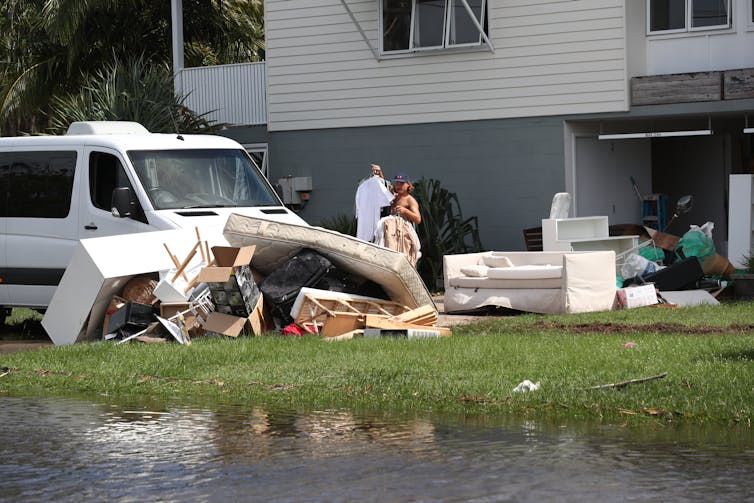
The many questions from those offering help were overwhelming: what do you need? What can we do? We found in the first few weeks, survivors generally had capacity to answer only very specific questions involving a “yes” or “no” answer: would you like lunch? Can I clean out the chook house? Can I get you a trailer or generator?
Tracking down help was a grind. Every call seemed not to reach the right person to talk to, and ended in a promise that the person would call them back. Frequently, they didn’t.
Some people felt insurance companies were dragging the chain, preventing them from rebuilding or relocating. Others with properties that had never flooded never thought they needed insurance – and their homes may now be un-insurable.
Local communities stepped up to carry survivors through the initial clean-up and recovery – a common experience after disasters.
But once the urgent work is done, volunteers usually return to their families, lives and jobs. For survivors, the feeling of being forgotten can be overwhelming – especially for those who live alone, or those struggling to access mental health services.
Our in-depth interviews with flood survivors will inform the next phase of the research, an online survey opening later this month. Anyone interested in contributing can contact us here.
Many themes we identified in our research so far also emerged after the Black Saturday bushfires in 2009. The journey of recovery from that tragedy is still underway.
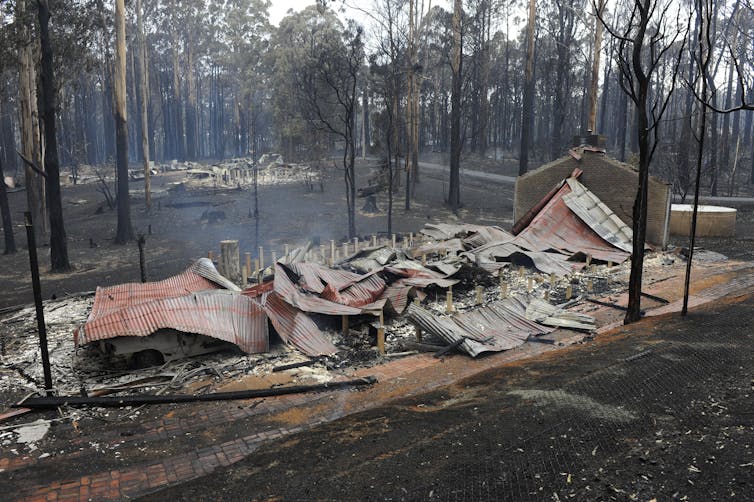
The Age Of Disasters
As we write, floodwaters in parts of Victoria continue to rise. Elsewhere the water is receding, but flooding is expected to persist for days yet.
We were saddened by the hundreds of conversations with flood survivors this year. But we also have huge admiration for people’s determination to pick themselves up.
And despite the devastation they’d experienced, most interviewees found silver linings. Some found renewed faith in their neighbours, friends and towns. Others were committed to being less attached to things, to helping their community when they can, or to be more responsive to family and friends.
Our research is too recent to provide tangible help to Victoria’s flood survivors. But we hope it will help in future as Australians recover from floods and other disasters.
The authors would like to acknowledge their fellow researchers on this project: Professor Kim Johnston, Associate Professor Fiona Miller, Associate Professor Anne Lane, Dipika Dabas and Harriet Narwal.![]()
Mel Taylor, Associate Professor, Macquarie University and Barbara Ryan, Senior Lecturer, University of Southern Queensland
This article is republished from The Conversation under a Creative Commons license. Read the original article.
Star Sydney suspension: how do casino operators found so unfit get to keep their licences?

How low does a casino operator in Australia have to go before it loses its gaming licence?
That question is still hanging after the punishment meted out this week to the operator of The Star Sydney casino – found to be “not suitable to be concerned in or associated with the management and operation of a casino in NSW”.
A four-month inquiry into the casino found Star Entertainment’s management “rotten to the core” and documented, in a report of more than 900 pages, a litany of failings from flouting anti-money-laundering laws to deliberately misleading regulators.
On Monday, NSW’s new Independent Casino Commission, having given the company two weeks to “show cause” why it should not lose its casino licence, suspended that licence, appointed an emergency manager to run the casino for at least 90 days, and imposed a A$100 million fine.
This is the maximum fine possible under laws introduced in August, and $20 million more than what Victoria’s regulator fined Crown Resorts in May.
The head of the Independent Casino Commission, Philip Crawford, said it was “no longer in the public interest that the Star should remain in control of that licence”.
This is progress of a kind from the new casino regulator, established this year to replace the former Independent Liquor & Gaming Authority in light of that agency’s regulatory failings.
But it raises obvious questions about the upshot of all the other casino inquiries – in NSW, Victoria, Western Australia and Queensland – that have found Star Entertainment and Crown Resorts unfit or unsuitable to hold casino licences.
Yet not one casino has had to close its doors.
Saving Jobs, And Revenue
So what does a casino have to actually do to lose its licence?
Looking at the case of The Star Sydney, it’s apparently not enough to allow more than A$900 million to pass through the casino in contravention of anti-money-laundering rules. Or to fabricate receipts to hide this. Neither is allowing a Macau-based junket operator with known links to criminal enterprise to run a high-roller room.
Crawford defended not going further than suspending the casino licence, because Star Entertainment had “demonstrated genuine contrition” and to preserve the livelihoods of the casino’s employees:
A big issue for us, to be frank, in this environment is that there is probably about 10,000 employees of the Star casino, and a lot of them rely on the income to pay their mortgages and raise their kids.
This is, in part, recognition that culpability lies at the level of senior management, not croupiers, waiters and cleaners.
Even so, such a rationale also suggests regulators are in danger of being trapped by a culture of considering operators “too big to fail”.
Too Big To Fail?
The Star Sydney employs an estimated 8,000 people at its site in Pyrmont.
Crown Resorts has 11,500 people working at its Southbank premises in Melbourne and 6,000 at its Burswood site in Perth – making it the largest single-site private employer in Victoria and Western Australia.
By comparison, Australia’s biggest employer, Woolworths, employs 190,000 people across more than 1,000 Australian and New Zealand sites. The ABC employs about 5,000 staff.
Raking In Gaming Revenue
But perhaps even more important than the jobs are the revenues that casinos deliver to state and territory governments.
Figures from the Australian Bureau of Statistics show that, in 2020-21, states and territories collected A$7 billion in gambling taxes. More than half – nearly A$4 billion – came from casinos and gambling machines.
The NSW government collected A$2.7 billion – 7.3% of its total revenue. The Victorian government collected A$1.6 billion – 5.4% of total revenue. Again, the vast majority came from gambling machines.
The government most reliant on gambling revenue was the Northern Territory – with nearly 15% of its taxation income from gambling.
Casinos are not only big business for private investors. They have become key to the sustainability of state and territory finances. That no casino has been forced to shut its doors is emblematic of this problematic and increasing financial reliance.
It’s one thing to hold public inquiries and make adverse findings against casino operators. But, as with banks, the apparent reticience to revoke gaming licences signals that money, in the words of Cyndi Lauper, changes everything.![]()
Alex Simpson, Senior Lecturer in Criminology, Macquarie University
This article is republished from The Conversation under a Creative Commons license. Read the original article.
3 ways app developers keep kids glued to the screen – and what to do about it

From learning numbers to learning how to brush your teeth, it seems there’s a kids’ app for everything.
Recent US statistics indicate more than half of toddlers and three-quarters of preschoolers regularly access mobile apps. So it’s no surprise there has been an explosion of options within the app market to keep kids engaged.
These apps certainly offer some fun interactive experiences, not to mention good educational content in many cases. They’re also very good at keeping young minds engaged. So what’s the catch?
You just read it: they are very good at keeping young minds engaged – so much that kids can struggle to put their devices down. If you’ve ever wondered why it’s so hard to tear your child from their device, read on.
What Is Persuasive Design?
Although there are national recommendations to help guide parents through the minefield of kids’ screen time, there is a hugely under-acknowledged piece of this puzzle – and that’s the way the technology itself is designed.
Persuasive design refers to strategies that grab and hold our attention. It’s something both kids and adults experience (usually unknowingly) while scrolling through social media or fighting the urge to play another round of Candy Crush.
If persuasive design can influence the screen-use behaviours of adults – who have supposedly developed regulatory skills and self-control – then toddlers and kids don’t stand a chance. This aspect of the screen-time debate is rarely scrutinised with the seriousness it deserves.
To find out just how persuasive kids’ apps can be, we applied a well-established model of persuasive design to 132 of the most popular early childhood apps downloaded by Australian families via the Android and iOS app stores. We found three main ways persuasive design features keep kids coming back.
1. Motivation
A key concept in persuasive design is to tap into kids’ emotions to ensure they stay motivated to engage with the app. This is done by:
offering pleasure through rewards. Kids are still developing their ability to delay gratification. They’re more likely to seek an immediate reward of lower value than wait for a reward of higher value. In the context of apps, they’re likely to be motivated by instant rewards that bring happiness or excitement. The apps we tested offered many more instant rewards (such as sparkles, cheers, fireworks, virtual toys and stickers) than delayed rewards.
provoking empathy. Just as adults seek positive feedback through “likes” on social media, kids love receiving social feedback from characters they admire (think Hello Kitty, or Bluey). Kids often attribute human feelings and intentions to fictional characters and can form emotional ties with them. While this can help foster a positive learning experience, it can also be exploited for commercial purposes. For instance, character empathy is at play when Hello Kitty looks sadly at a shiny locked box of food that can only be opened in the paid version of the app.
2. Ability
No one wants to play a game that’s too difficult to win. Ability features provide kids with continuous instructions to reduce the likelihood of disengagement.
One way to increase a child’s sense of mastery is repetition. Many early childhood apps include rote learning, such as making the same cookie over and over with the Cookie Monster. By including tasks that are quick to learn and repeating them, app designers are likely trying to tap into childrens’ growing sense of autonomy by helping them “win” on their own.
So what’s the problem with that? While repetition is great for learning (especially for developing minds), the removal of any requirement for help from a parent can encourage more solitary use of apps. It can also make it harder for parents to engage in social play with their child.

3. Prompts
Commercial prompts were the most common trigger we found in early childhood apps, especially free apps. They have one main purpose: to bring in revenue.
Prompts include pop-up advertisements, offers to double or triple rewards in exchange for watching an ad, or prompting the user to make in-app purchases. While adults might be able to see prompts for what they are, kids are much less likely to understand the underlying commercial intent.
So What Can Be Done?
There’s no doubt some of these features in moderation help maintain a basic level of app engagement. But our research makes it clear a lot of persuasive design features simply exist to serve business models.
We need to have more conversations about ethical design that doesn’t capitalise on children’s developmental vulnerabilities. This includes holding app developers accountable.
The early-childhood app market is vast. Parents often won’t have enough information on how to navigate it, nor enough time to assess each app before downloading it for their child. However, there are a few ways parents can get an upper hand:
talk to your child after they’ve played with an app. Ask questions like “what did you learn?”, or “what did you enjoy the most?”.
play the app with your child and decide if it’s worth keeping. Are they getting smothered by rewards? Are there many distracting prompts? Is it too repetitive to be genuinely educational?
look for the “teacher-approved” indicator (on Play Store) when considering an app, or check reviews from trusted sources such as Children and Media Australia and Common Sense Media before downloading.
Ideally your child should be leading the play, actively problem-solving, and should be able to end their time on an app relatively easily.![]()
Sumudu Mallawaarachchi, PhD Candidate, School of Psychology, Deakin University and Sharon Horwood, Senior Lecturer in Psychology, Deakin University
This article is republished from The Conversation under a Creative Commons license. Read the original article.
Disclaimer: These articles are not intended to provide medical advice, diagnosis or treatment. Views expressed here do not necessarily reflect those of Pittwater Online News or its staff.